ARES&ATHENA28
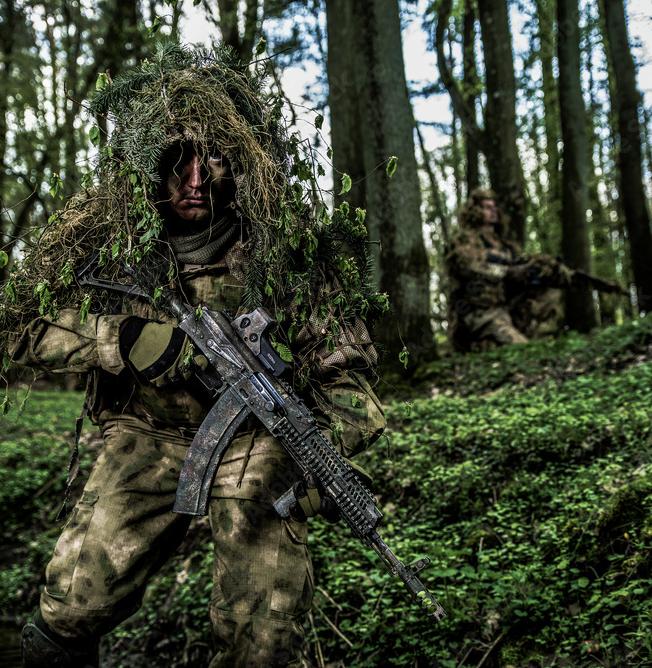
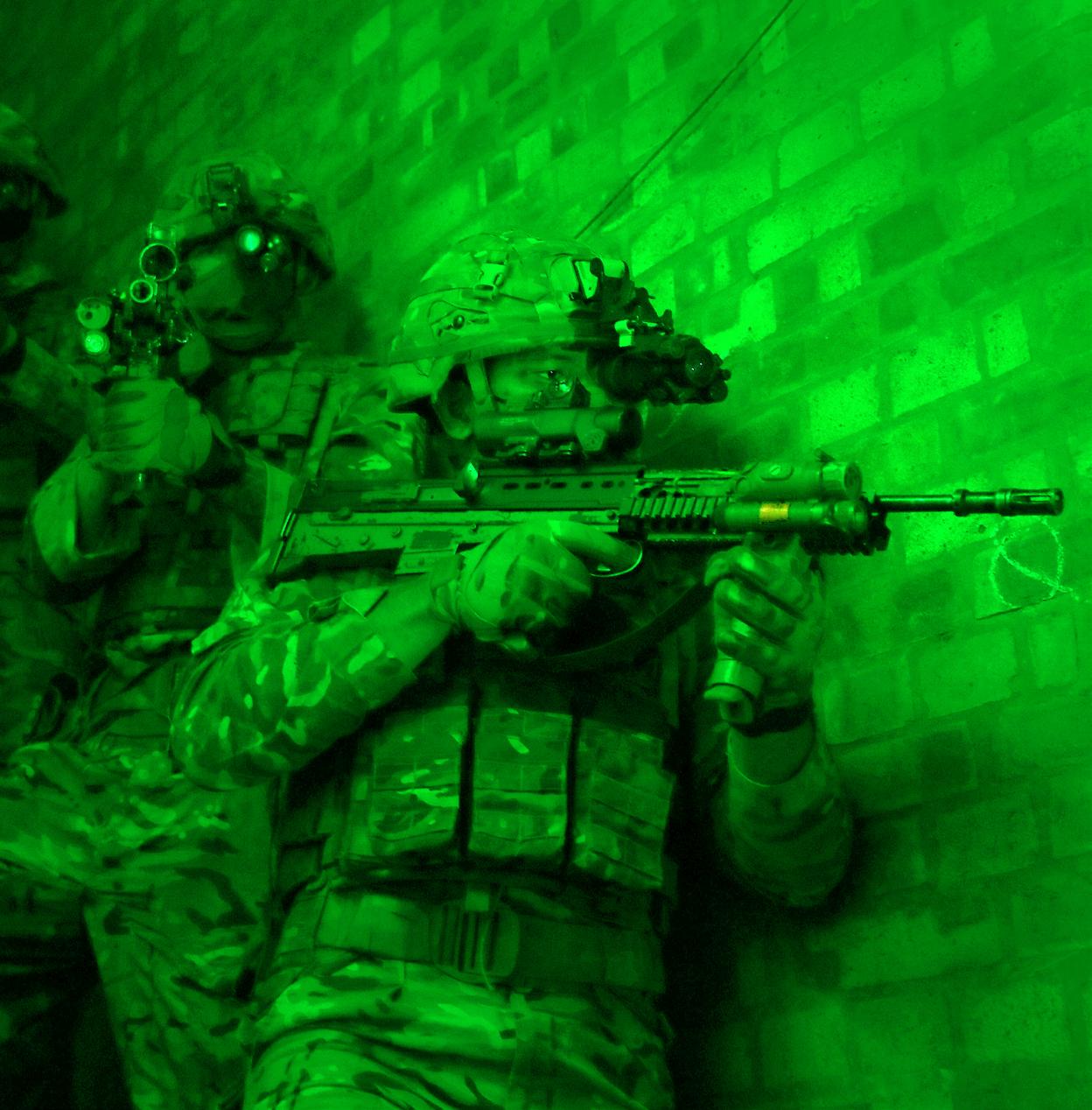
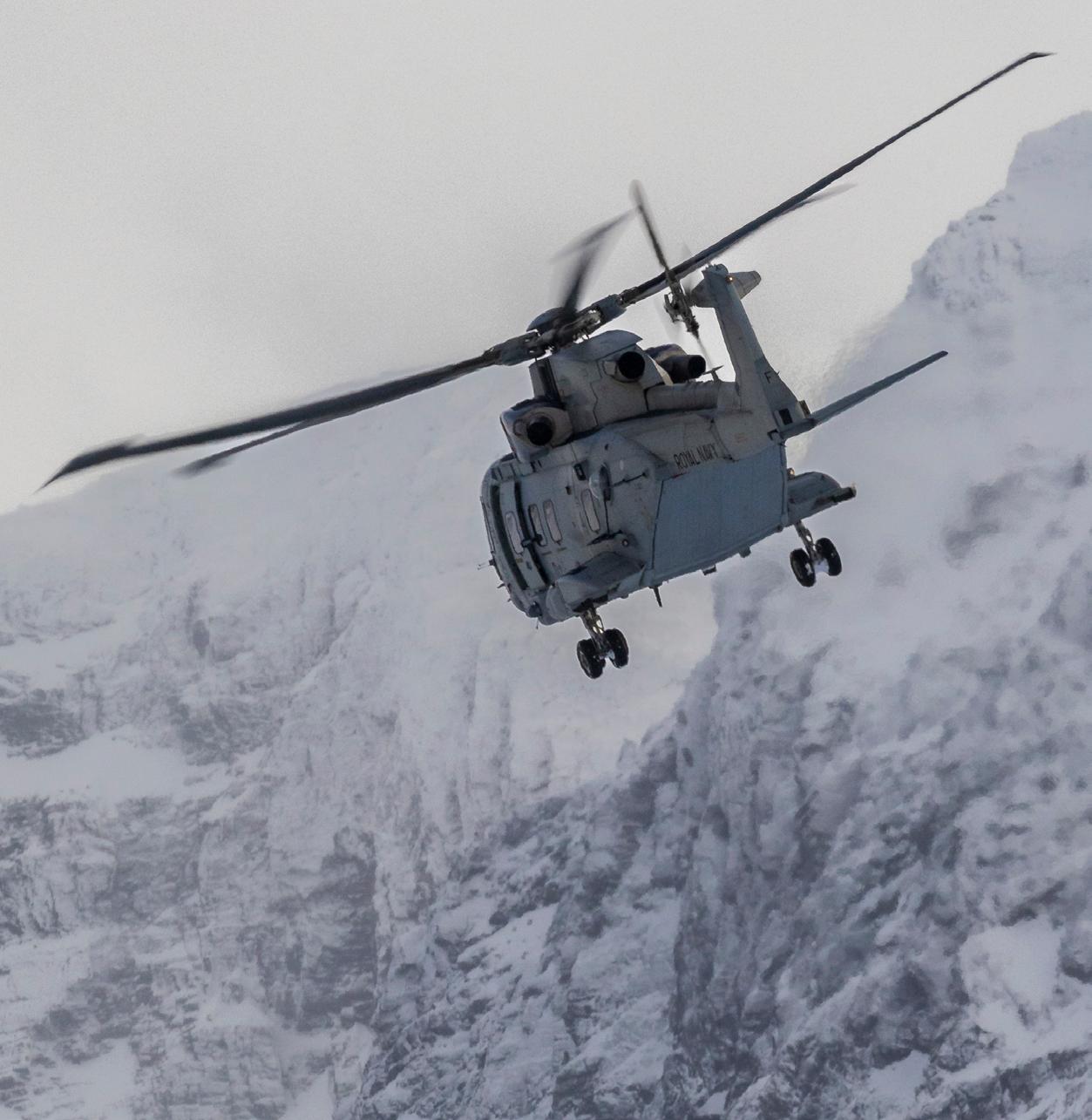
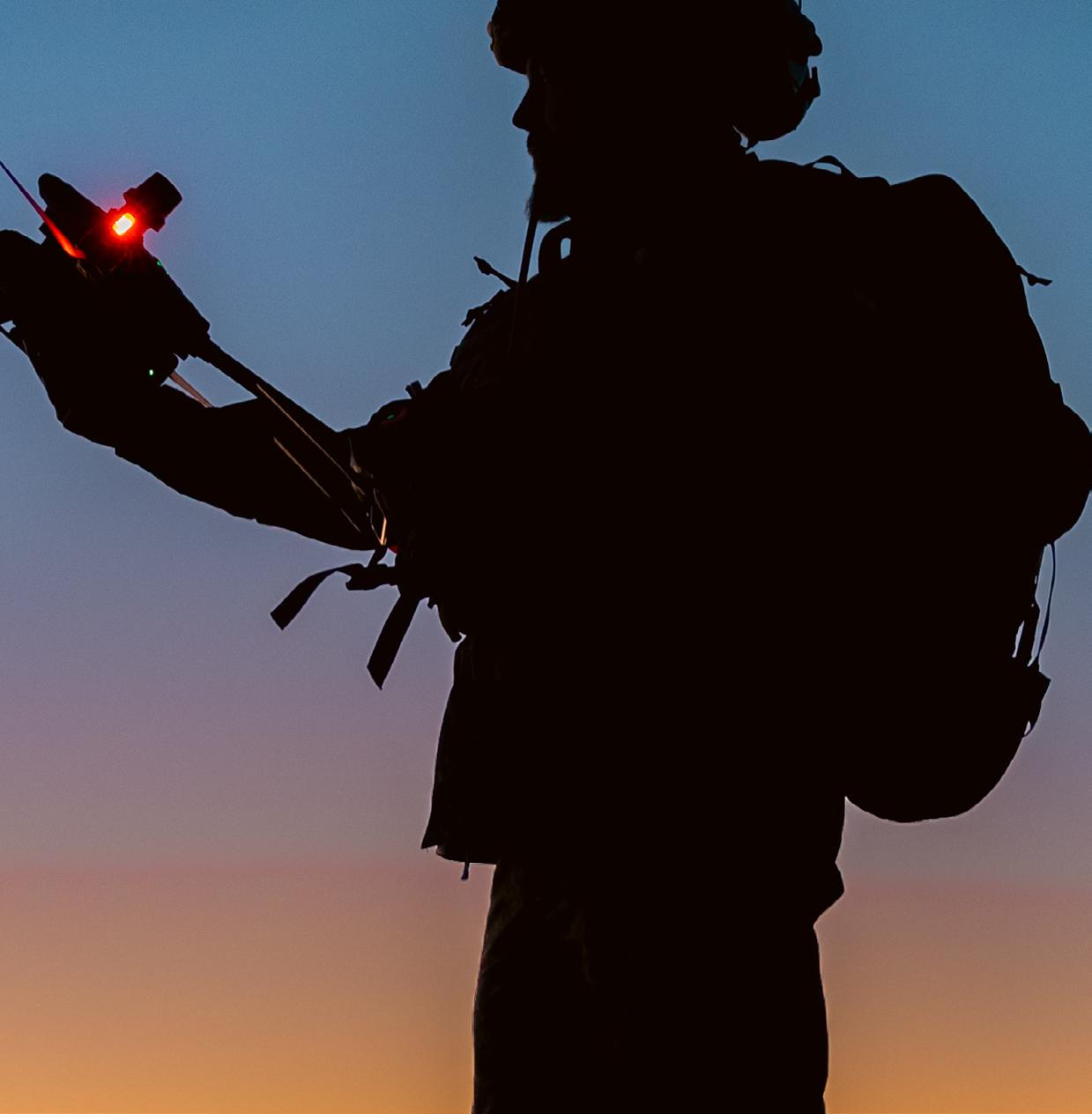
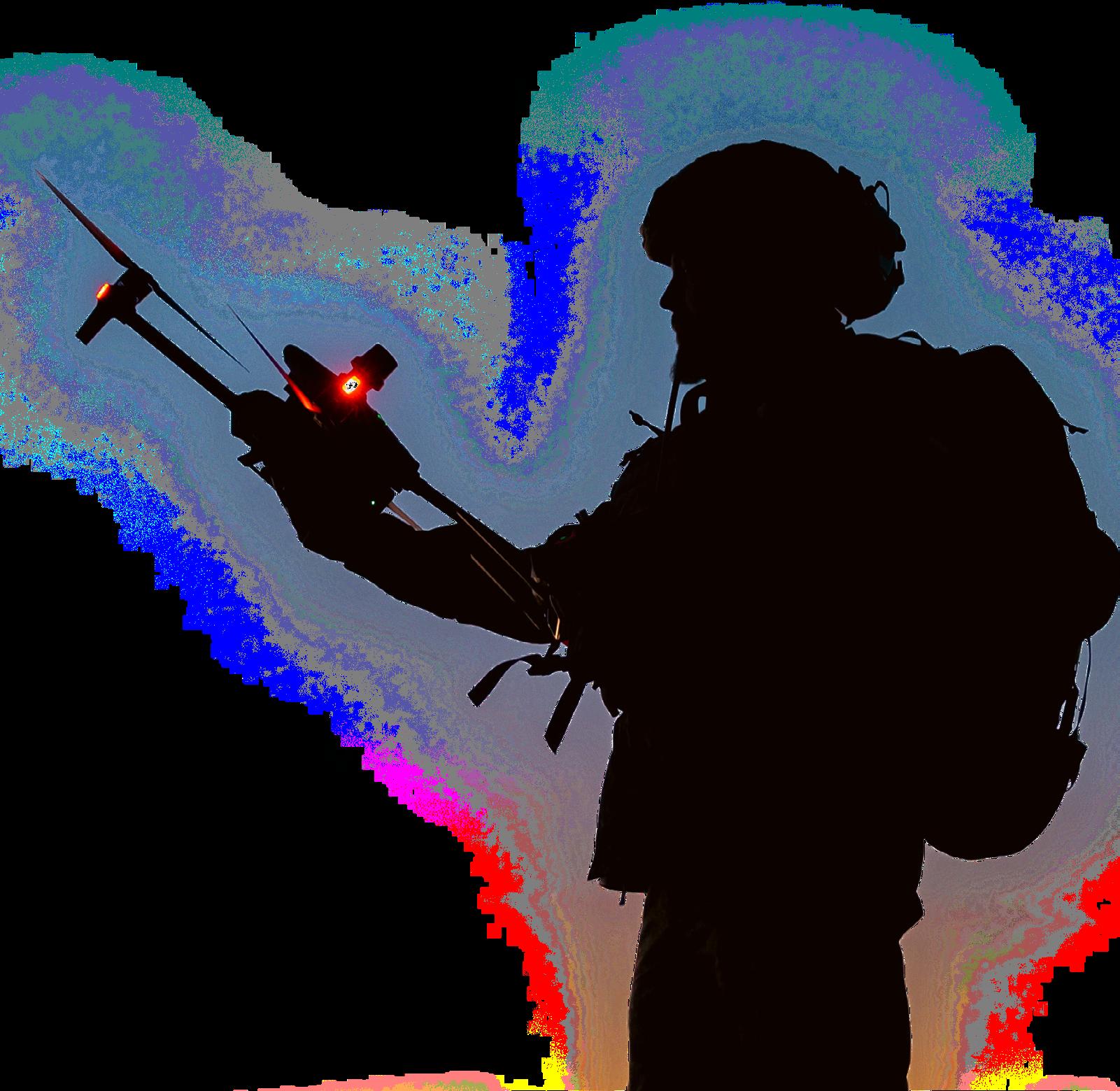








Major
General (Retd) Dr Andrew Sharpe Director, CHACR
I served in the British Army for 34 years, and throughout that time there were two very contradictory, but evident, constants. These are alive and well still, but, and here is the point of this publication and the research behind it, we may be at a point where those two unbalanced constants may have reached a point of equilibrium, or even gone past a tipping point.
First, not just as a hang-over from the British Army of the Rhine and the Cold War, but as a constant and continuous mindset, there has been an enduring undercurrent of two-tierism, with the heavy metal of armoured warfare being considered the Premier League of the Army, and the light troops, in all of their guises, being seen as Championship ‘also rans’. Throughout the Cold War, in both force development and weight of resource terms, those armoured formations in Germany were considered to be the Main Effort, and those (lighter) formations in the UK were considered to be the back up, in every sense. The only exception to this were the Special Forces (with even the Airborne and Airmobile Brigades, in their various guises, being seen as being of questionable and niche utility, regardless of how they saw their own ‘elite’ status).

First, up until the burden of Op Entirety the British Army had not confused utility and purpose. The purpose of the Army is, and always has been, to be ready to fight and win the nation’s wars on and from the land. From 1945 to the 1990s the most substantive threat to the UK’s security came in the form of war on the European Continent, regardless of the co-existent strategic ‘must wins’ of operations like Op Banner in Northern Ireland. To be able to fulfil its core purpose, therefore, the Army needed to put its weight of effort into armoured warfare (regardless of how its capabilities and troops might actually have been used). The distraction of Afghanistan (with a bit of help from Iraq) allowed the Army to be side-tracked from its core purpose, precisely because it was so busy being used and useful elsewhere. Second, up until recently, the battle-winning characteristics of heavy armour, particularly in any war of scale, remained largely unchallenged by military theorists, force developers and doctrine writers.
While the value of armour has remained strongly argued for, the power of light alternatives to armour has become an increasingly hot topic, not least for land forces reflecting on how to operate (and survive) in the socalled transparent battlespace.
Yet, second, and in complete contradiction to the ‘kudos’ implications of the above paragraph, the vast majority of soldiers who have had operational experience from 1945 to 2025, have garnered that experience in the light or dismounted role. The Malayan Emergency; Palestine; the Korean War; the Mau Mau Uprising; Suez; Brunei; Aden; Dhofar; Northern Ireland; the Falklands War; Gulf War 1; Belize; Bosnia; Kosovo; Gulf War 2 (and the occupation of Iraq); Sierra Leone; Afghanistan, and all of the others. Armour was to the fore only occasionally, for Korea, Gulf Wars 1 and 2 (and the occupation of Iraq), and as an element of the operations in Bosnia and Kosovo.
Why this contradictory tension between prioritisation and actual use? Why would the Main Effort have sat with the least used part of the Army for so long? There are two reasons.

As the Army emerges from that long period in COIN blinkers and the notion of ‘wars of choice’, there remains an understandable ‘old idea’ that the tank, and the panoply of armour that goes with it, remains the acme of land strength. Experience from Ukraine has given pause for thought to this truism and, while the value of armour has remained strongly argued for, the power of light alternatives to armour has become an increasingly hot topic, not least for land forces reflecting on how to operate (and survive) in the so-called transparent battlespace. As the UK re-evaluates its doctrinal and force development stance, including in light of the opportunities offered by the recent Security Defence Review, the research project captured in this Ares & Athena, commissioned originally by 1st UK Division, explores a range of aspects of the utility of light forces. We have divided this publication into three parts. The first explores the history of light forces and offers examples of how they may have been used and useful in the past – by design, as opposed to by necessity. The second explores how specific-to-purpose light forces have and can be used and those battlespace circumstances that demand their use. The third looks at the emphasis that is placed upon light forces by some of the Nordic members of the NATO alliance alongside whom the UK is expecting to operate. In so doing we ask in what way might ‘might be light’?
CHACR business partner: QinetiQ Training & Simulation Ltd (formerly NSC), Cody Technology Park, Old Ively Road, Farnborough, Hants. GU14 0LX Ares & Athena © CHACR 2025
Throughout history, light forces have been used by armies because of their adaptability and versatility. This section presents a number of historical case studies and analyses the roles that these forces have played and the effect that they have achieved on the battlefield.

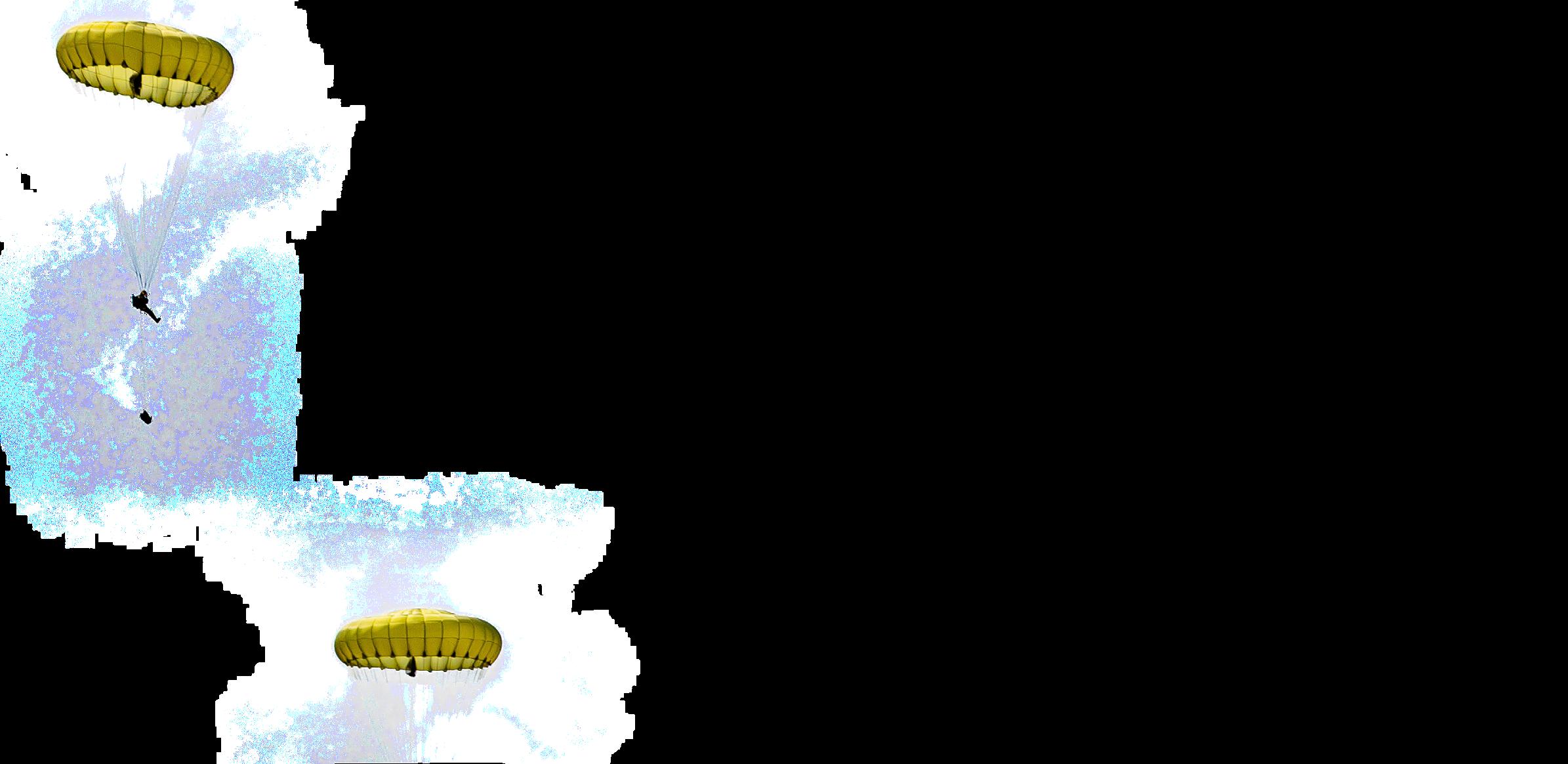
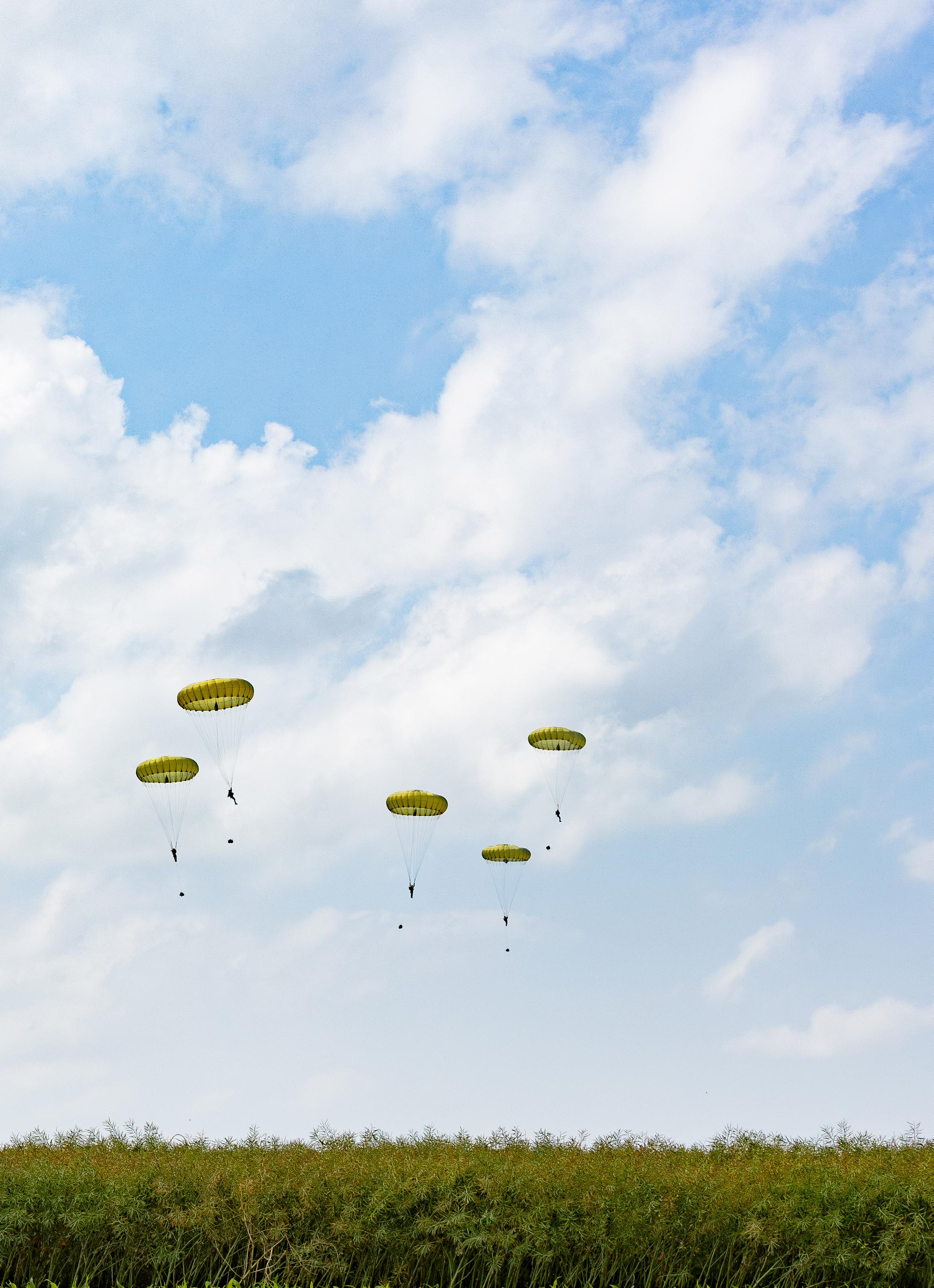
Rangers, Panduren and Jäger: The use of light forces in the 18th century Blitzkrieg on bicycles? German light forces in Finland 1918
Enduring lessons of airborne forces from the Second World War
US Army light infantry brigades in the Vietnam War
Professor Matthias Strohn Head of Historical Analysis, CHACR
The late Professor Christopher Duffy, former doyen of the study and analysis of European Warfare in the 18th century, once wrote that “the rise of light infantry formed one of the most significant developments in European warfare in the second half of the eighteenth century”.1 Light forces were used extensively across the continent by all belligerent nations and during all of the wars that occurred, in particular the Seven Years War (1756-1763), which changed the balance of power within Europe, and established Prussia as a member of the Pentarchy of leading states on this continent. This war also cemented Britain’s global position and established Albion as the main colonial power. This was to no small part due to the territorial gains made in America as a result of the defeat of the French in the Seven Years War, which has been called the first world war. This ‘first British Empire’ largely collapsed with the American War of Independence, in which light forces were used extensively.
In many ways, the history and legacy of light forces have shaped our understanding of this war more than the more conventional battles and sieges that, eventually, decided the outcome of the conflict and ensured US independence. On the British side, Ranger formations became the embodiment of the light forces approach. It is wrong to believe that these formations were formed as a reaction to the outbreak of the War of Independence. In fact, these formations had existed, in different shapes and forms, since the 17th century. Arguably, the most famous of these units and formations was ‘Rogers’ Rangers’, initially a company raised in 1755 in the Province of New Hampshire by Major Robert Rogers. The company was formed to fight in the French and Indian Wars in the borderlands of the colonial Northeast.2 The character of war was different from the usual norm of the 18th century – linear infantry tactics and volleys of infantry fire. There were a number of reasons for this. The terrain did not always lend itself to conventional, large-scale operations. The numbers of troops deployed were, compared with the
European theatre(s) of war, small. The way the enemy fought (in particular the Native Americans fighting on the French side) made the conventional deployment of line infantry pointless. As a consequence, the light forces were tasked mainly with reconnaissance missions and surprise operations deep in the enemy’s rear. The tactical approach was written down by Rogers in his so-called 28 Rules of Ranging 3 The tactics employed proved successful and, by early 1758, the company had been expanded into a corps, which consisted of 14 companies with approximately 1,400 men at its peak.
Another famous and very effective unit was the Gorham Rangers, which had been the first unit to be raised (in 1744) at the start of King George’s War. This unit served as the prototype for other Ranger units, including the Rogers’ Rangers mentioned above. The unit was mainly deployed to secure British control in Nova Scotia, and it acted as the main British unit in this area between 1744 and 1749. During the Seven Years War, the unit was expanded and continued to play an important role in Nova Scotia. In addition, it participated in many of the decisive campaigns of the war, including distinguishing itself at the Siege of Quebec in 1759. Originally, the unit was an all-Native American company led by British officers, but the native American members of the units were gradually replaced by Anglo-Americans.

Frederick the Great, the famous Prussian king, called his own light troops the ‘scum of his army’.
1Christopher Duffy, The Austrian Army in the Seven Years War, vol 1., Instrument of War, Chicago 2000, p. 240. For a very good analysis of the use of light forces in the 18th century, see James R. McIntyre, ‘Pandours, Partisans and Freikorps: The Development of Irregular Warfare and Light troops in the Eighteenth Century, in Alexander S. Burns, ed., The Changing Face of Old Regime Warfare. Essays in Honour of Chistopher Duffy, Warwick 2022, pp. 161-181.
2On this, see Danniel Marston, The French-Indian War 1754-1760, Oxford 2003. 3rogersrangers.org/rules/index.html [accessed 12/07/20259].
4For the tension between the ideas of enlightenment and the ‘unorganised’ warfare conducted by the light troops, see Martin Rink, ‘Der Kleine Krieg. Entwicklungen und Trends asymetrischer Gewalt 1740 bis 1815, Militärgeschichtliche Zeitschrift 65 (2006), pp. 355-388.
Returning to Duffy’s statement cited at the beginning of this article, we should also look at and analyse the use of light forces in the European theatres at the time. By the 18th century, professional, long-serving military personnel characterised the militaries of Europe. All major powers sustained armies that could play the full concert of military strength and comprised (line) infantry, cavalry and artillery. The age of reason and enlightenment, which was the main philosophical characteristic of the time, influenced military thinking. Mathematical precision and logic were key – whether in predicting the outcome of battles, deploying troops on the battlefield or drilling soldiers.4 All in all, conventional war at the time was highly regulated and also restricted – in theory at least, in every sense of the word, including the hardships that should not befall the civilian population. In many ways, light infantry and cavalry did not really fit in with this approach to warfare. Light troops were characterised by a comparative indiscipline, which seemingly undermined their military effectiveness within this regulated general structure. The tasks of light forces required a certain freedom of action, and they were thus difficult to control. Accordingly, Frederick the Great, the famous Prussian king, called his own light troops the ‘scum of his army’. Consequently, actions by the light troops were also semantically distinguished from the actions of the ‘real’ army that occurred in ‘real’ war. This type of warfare became known as Kleiner Krieg, la petite guerre or small war.
Prussia’s main enemy at the time, the Habsburg monarchy,

The history and legacy of light forces have shaped our understanding of [the American War of Independence] more than the more conventional battles and sieges that, eventually, decided the outcome of the conflict. “”
had relied on light troops in previous wars, in particular in those against the Ottomans in the Balkans. The conflict had been smouldering for centuries. Famous and important battles, such as the Ottoman siege of Vienna in the 17th century, were the exception to a conflict that was characterised by raids, skirmishing and hit-and run tactics in the borderlands. This was the ideal type of warfare for light forces, and it is therefore not astonishing that the House of Habsburg maintained a comparatively large contingent of light forces. Most famous of these was the light cavalry, which was often recruited from Hungary. These so-called Panduren became a benchmark for light cavalry across Europe. When war broke out against Prussia in 1740, it was not a surprise that the Austrian queen Maria Theresia called upon the inhabitants of the borderland between her empire and the Ottomans to increase manpower. These troops, accustomed as they were to low-level conflict with the Ottomans, brought their own tactical approach to the battles and campaigns of the wars that followed. Once again, the so-called small war concentrated on setting ambushes, conducting raids, scouting and harassing the enemies’ supply lines. This was the type of warfare that the Panduren felt most comfortable with. These actions could have profound effects on the conduct of operations. For instance, the retreats of Frederick the Great from Bohemia in 1744 and 1745 were, in essence, not the result of lost battles, but the consequence of the Prussians’ inability to effectively combat the irregular Austrian troops which were threatening to cut the supply lines of the Prussian army.5
The success of the Austrian light troops could not be overlooked and, peu à peu, other nations followed suit. Hussars would be used increasingly to harass the enemy hinterland, and, while they were not the only light forces in
the 18th century, it has been said that they are probably the best embodiment of the type.6 In the Prussian case, light infantry formations were also being formed. Similar to other countries, existing expertise was being used, and the Prussians formed Jäger (which literary translates as huntsman) units and formations – the comparison to the French chasseurs units is obvious. Their main task was to harass the enemy force and to ambush small enemy contingents. In a battle, these troops were usually deployed forward of the line infantry. Their harassing fire was supposed to slow down and confuse the enemy, but not to engage in prolonged exchanges of fire. This was the task of the ‘real’ infantry in a ‘real’ battle.
In addition to the expertise that the core of these units provided, there were other reasons as to why light formations (in particular light infantry) became increasingly popular. Training and sustaining an army was time-consuming and expensive. Light troops, on the other hand, could be used to quickly bulk up the forces. As Duffy has stated, “for hardpressed governments one of the attractions of the light troops was that they could be raised so quickly and cheaply”. Although numbers could be increased or at least be kept steady in times of war, this came at a price: the quality of these troops was no longer comparable to that of specifically chosen light troops, such as the huntsmen that had been handpicked previously.
5Johannes Kunisch, Der Kleine Krieg: Studium zum Heerwesen des Absolutismus, Wiesbaden 1973, p. 13.
6See McIntyre, p. 179.
7Christopher Duffy, The Military Experience in the Age of Reason 1715-1789, New York 1987, p. 274.
Dr Agilolf Kesselring Associate professor for the military history of European warfare at the National Defence University, Helsinki
The First World War is foremost remembered for the trench warfare that raged on the Western Front, with the military engagements that unfolded on the Eastern Front frequently overlooked. Despite playing a pivotal role in the conflict, the Battle of Lahti and the events at Tavastehus, which took place in southern Finland between the 19th April and 2nd May 1918, are among the episodes often forgotten. Together with the battle for Viipuri (today Vyborg, Russia) at the Karelian Isthmus, which was fought at the same time by the troops of C.G.E. Mannerheim (who would later become the Marshal of Finland), they ended the Finnish War of Independence against the Finnish Red Army – troops supported by Russian Red Army personnel from Petrograd (today Petersburg). Politically, the Finnish War of Independence can be interpreted in the context of the Great War as a proxy-conflict between the German Empire and Soviet Russia or as an overture to the Russian Civil War. In terms of military operations and tactics, the Battle of Lahti serves as a scholarly example of how a force inferior in numbers, but superior in mobility, fighting experience and spirit, can emerge victorious. In the context of this Ares & Athena, the operation also offers insights into the use and effectiveness of light forces. The German forces involved were classed as light forces and their speed and momentum largely decided the outcome of the battle. Much of the Germans’ mobility was attributable to soldiers on two wheels, which is why it can be argued that Lahti featured ‘Blitzkrieg on bicycles’ (a term that is often used to describe the advance of Japanese troops during the Malayan campaign in the Second World War).
the 13th April at Uusikylä, east of Lahti,1 denying the Finnish Red Army the advantage afforded by the inner line of the west-east railway (the former Petersburg line (Riihimäki –Lahti – Kouvola – Viipuri – Petrograd)).
As the distance from Brandenstein’s landing site at Loviisa to the railway cutting site at Uusikylä was about 70 kilometres, the Detachment’s support lines were constantly being threatened by enemy forces. Due to a lack of naval transport capacity, the brigade had been shipped in four parts and it was not before the 18th April that the complete Detachment Brandenstein was on Finnish soil. From the 14th April onwards, Brandenstein’s advance troops at Uusikylä were struggling to hold their positions along the railway as the Red armies attacked from both the east (from Kouvola) and west (from Lahti) with infantry mounted on armoured trains. Simultaneously they were also targeted by infantry from the direction of Artjärvi, a village situated about halfway between Brandenstein’s landing site at Loviisa and Uusikylä. Had Brandenstein’s forces at Uusikylä railway station not been able to repel their adversaries they would have been cut off from their supplies, encircled and – most likely – annihilated.
The Jäger –German light infantry – were originally formed of hunting and forestry personnel and brought together the disciplines of sharpshooting and operating in forests, something that ‘normal troops’ were ill-trained and equipped to do.
What was not known by the task force’s brigade headquarters was that west of Lahti the whole Finnish Red Western Army, some 20,000 men with (partly armed) women, children and booty, was approaching on multiple small roads in order to join with the Finnish Red Eastern Army, which was located in the area between Kouvola and Viipuri. On the 17th April, command of Detachment Brandenstein was assumed by Goltz’s Baltic Sea Division, a move that brought unity of command to the Germans in the Finnish theatre.
The German Baltic Sea Division, consisting of some 10,000 soldiers, had been landed at the harbour of Hanko on the 3rd April 1918 and marched eastwards towards the Finnish capital of Helsinki. On the 13th April, at the same time as Helsinki was assaulted by land from the west, it was attacked by naval infantry, supported by ship artillery, from the south. Helsinki was taken in only three days. The Red dictator Kullervo Manner, a marionette from Petrograd, fled. While the Baltic Sea Division was on its way from Danzig (today Gdansk, Poland) to Hanko, the Army High Command 68 in Reval (today Tallinn, Estonia) formed a brigade level task force that was shipped to Loviisa, which is situated some 90 kilometres east of Helsinki. The task force was named Detachment Brandenstein – after its commander Colonel Otto Baron von Brandenstein – and charged with cutting the railway line east of the city of Lahti, which would in turn sever the supply route from Petrograd to Helsinki. It succeeded in doing so on
Given the focus of this edition is on rapid light troops, special mention must go to the Fahrrad-Jäger, which literally translates as ‘bicycle hunters’. The Jäger – German light infantry – were originally formed of hunting and forestry personnel and brought together the disciplines of sharpshooting and operating in forests, something that ‘normal troops’ were ill-trained and equipped to do. Different to the traditional line infantry, the Jäger force was organised into independent battalions instead of regiments. In 1918, a Jäger battalion consisted of four rifle companies and one bicycle company, the latter usually comprising 124 men under the command of three officers.
Detachment Brandenstein had one infantry regiment comprising of 12 rifle companies; three machine gun companies; two field artillery batteries; half a cavalry squadron and one bicycle battalion (5. Radfahr-Bataillon, which was commanded by Captain Hugo von WilamowitzMoellendorff).2 This bicycle battalion was a task force in its own right. It had been formed out of bicycle companies,
chiefly those of the Jäger Battalion No. 14 and 54th RadfahrKompanie, which had been part of the 54th Division, then fighting on the Western Front (where, in April 1918, there was barely any conceivable use for bicycles).
From the troops assembled, Major-General Goltz formed Detachment Röder, which consisted of the bicycle company of Jäger Battalion No. 6; a 300-strong Finnish volunteer battalion under Lieutenant-Colonel Thesleff; two light mountain howitzers; a cavalry troop (14 men and one officer); a pioneer explosives contingent and a radio station for communication. He also formed Detachment Hamilton under Gilbert Count Hamilton, a Swedish major serving with the Germans, which consisted of the bicycle battalion of Jäger Battalion No. 4; the bicycle battalion of Jäger Battalion No. 2; and two field canons.
On the 14th April, Colonel Brandenstein sent his bicycle battalion (repeatedly referred to as “Abteilung Wilamowitz” in sources) to Artjärvi, where it repelled the Red attack from the west. At the same time, Goltz sent Detachment Röder from Helsinki along the coast line to Porvoo in order to secure the railroad towards the east. On the 20th April, Röder’s bicycle Jäger reached Lapinjärvi – halfway between Porvoo and Loviisa – and was able to secure Brandenstein’s base from attacks, enabling Brandenstein to fulfil his task at the railway at Uusikylä. According to Goltz’s order on the 18th April, Uusikylä was to be held “with all forces”.3
The next day, Goltz ordered Detachment Hamilton to move by train to Porvoo. As Hamilton’s task force was at the time situated north-west of Helsinki and therefore had to pass Kerava, which was still held by Red Guards, an
armoured train was deployed, which moved from Helsinki towards Kerava. It is noteworthy that the armoured train was accompanied by Bicycle Company 11, led by reserve Lieutenant Lassen.4 Detachment Hamilton reached Porvoo by train on the 20th April around midday.5 The force proceeded immediately eastwards to Loviisa, where it engaged in heavy fighting with strong Red forces. The attacking Red units outnumbered the bicycle divisions and, consequently, the troops were ordered to establish defensive positions in order to secure the Loviisa base against further attacks from the east.6 Nevertheless, the continuing fierce attacks by fast moving bicycle troops had given the Red Army at Ahvenkoski the illusion of a much stronger force. On the 25th April, the Red Guards blew up the bridge over Kymijoki River at Ahvenkoski.7 One reason for this – tactically wrong –
1Christopher Kansallisarkisto (National Archive of Finland), further cited as KA., SArk 1521 G4/4, Ostsee-Division, Anlagen zum Kriegstagebuch März 1918, Divisionsbefehle für April 1918 (Abschrift), Funkspruch Generalkommando 68 an Ostseedivision, 15.4.1918.
2Eero Maasalo, Eversti von Brandensteinin prikaatin toiminta Riihimäen-Pietarin radan sulkimiseksi 7.4.-20.4.1918, Suomen historian pro gradu-työ.
3KA, SArk 1521 G4/4: Divisionsbefehle für April 1918 (Abschrift): Befehl Ostseedivision Ia an Det. Brandenstein (18.4.1918); Anthony F. Upton: The Finnish Revolution 19171918. Minneapolis 1980. p. 475.
4KA, SArk 1521 G4/13, Aufklärungs-Abteilung Hamilton, Detachementsbefehl [19.4.1918], gez. [Leutnant] Graf Luckner, Adjutant Detachement Hamilton.
5KA, SArk 1521 G4/13, Aufklärungs-Abteilung Hamilton, Kriegstagebuch der Aufklärungs-Abteilung Hamilton, 19.4.1918.
6KA, SArk 1521 G4/13, Aufklärungs-Abteilung Hamilton, Kriegstagebuch der Aufklärungs-Abteilung Hamilton, 23.4.1918.
7KA, SArk 1521 G4/13, Aufklärungs-Abteilung Hamilton, Kriegstagebuch der Aufklärungs-Abteilung Hamilton, 25.4.1918.

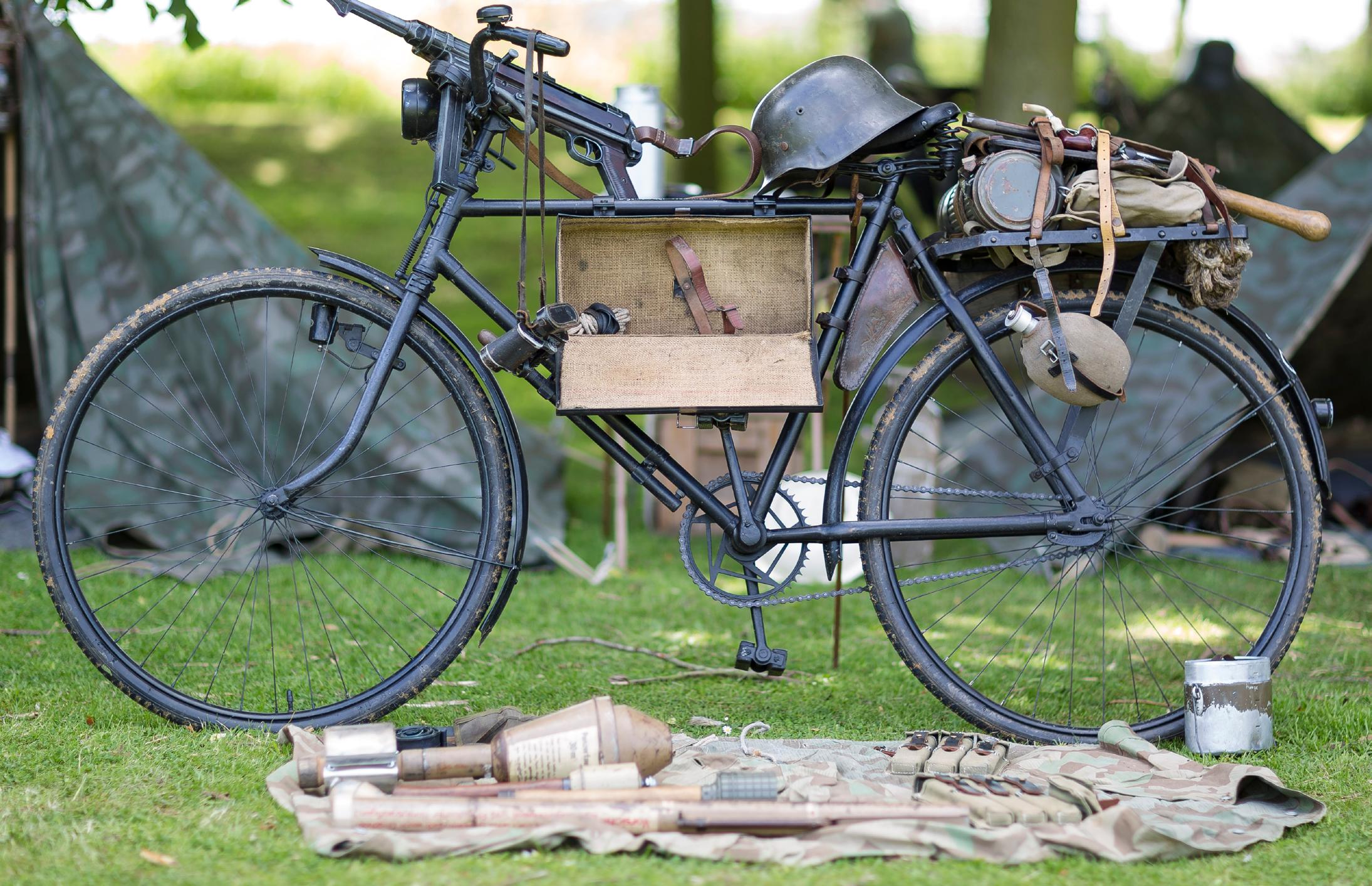
decision seems to have been that the Red Guards spotted air reconnaissance conducted by the German 8th Army based in Tallinn and therefore expected a bigger counterattack.
On the 27th April, as the pressure from the avant-garde of the Red Western Army increased, Detachment Hamilton and Detachment Röder were subordinated to Detachment Brandenstein. While Detachment Röder kept securing Loviisa against attacks from the east, Detachment Hamilton was moved towards Orimattila, some 20 kilometres south of Lahti. Hamilton left one bicycle company (Kuhlglatz) to defend against any potential attacks from the east, and he advanced north in the direction of Lahti with his other bicycle company and cavalry. The next day Hamilton got the order to move in the direction of Pennala (south of Lahti), where, due to air reconnaissance, Brandenstein expected a breakthrough of the Red Western Amy. Detachment Hamilton was reinforced by two infantry companies and two mountain howitzers. They reached Pennala and positions were established on the eastern bank of the river Luhdenjokiin on the morning of the 29th April. At two in the afternoon, Hamilton got the order to cross the Luhdenjoki and assault the railway station in the village of Herrala, where strong Red forces had started to disembark. In the early morning of the 1st May, Hamilton attacked Herrala station from two sides with two bicycle companies accompanied by a mountain howitzer each. Before midday the railway station was captured. Among the assets seized were two armoured trains, four artillery pieces, two airplanes, 20 locomotives, 300 railway wagons with material and a great number of machine guns. During the follow-up attack the next day (2nd May), Detachment Hamilton took 7,000 prisoners of war8 and brought a victorious end to operations in the area.
Lessons learnt
What lessons can be learnt from this small part of German-
Finnish military history, which took place more than one hundred years ago? First, the value of very light, and thus quickly deployable, forces (here Jäger on bicycle) is clear, as the victory at Lahti would not have been possible without them. Speed of action was key to success, and the character of the light forces deployed delivered it. Another lesson is that tempo can be influenced by factors such as terrain. Bicycle troops were not the fastest elements on the battlefield (consider, for example, the armoured trains), but they were a useful and rapidly deployable option. In comparison, enemy troops moved at a much slower pace and the delta in speed meant the Germans were able to outmanoeuvre their foe. The German OODA [observe, orient, decide and act] loop was also faster than that of the enemy. Orders consisted of only a few sentences, and at battalion level commanders had complete freedom in the execution of the higher command’s intent. Third, the value of mixed task forces down to company level was of crucial importance. Besides speed, fire power proved decisive and artillery pieces were attached directly to the bicycle companies (as field canons proved too cumbersome in the woody terrain, mountain howitzers were chosen as the main indirect fire support weapon). Together with mental agility, physical robustness was a key asset of the victorious troops. Considering the composition of light troops, and the fact that they could not rely on motorised transport, this robustness was a condito sine qua non for their deployment (and success). In 1918, it was a combination of all of these factors that led to a tactical victory that resulted in positive operational, and arguably even strategic, outcomes. Technology has, of course, changed warfare considerably since the First World War but the ability to deploy light troops is needed now more than ever before.
8KA, SArk 1521 G4/13, Aufklärungs-Abteilung Hamilton, Kriegstagebuch der Aufklärungs-Abteilung Hamilton, 2.5.1918.
Jack Duncan Visiting Fellow, CHACR
In the timeless study of organised human conflict, airborne operations are a relatively new addition to the warfighting mix, with the first major operation executed by the Luftwaffe’s Fallschirmjäger at Sola Air Base on the 9th April 1940 as a component of Operation Weserübung. In the decades since, airborne forces have become a staple of most developed militaries that diversify their capabilities. In the case of the United Kingdom, The Parachute Regiment and more recently the 16 Air Assault Brigade Combat Team, have ‘flown’ the airborne flag with distinction on deployments to Algeria, Normandy, the Rhine, Suez, the Falkland Islands and Afghanistan (to name but a few). As the British Army’s Global Response Force within the 1st Division, the 16 Air Assault Brigade Combat Team is held constantly at high readiness, perennially prepared for immediate deployment and is a key component of the Service’s resilience and reach. Returning to the capability’s opening chapters, however, the Second Word War offers extensive insights into the common themes and prerequisites that determine the success of airborne missions. Largely unrelated to periodor conflict-specific factors, these historic lessons continue to have relevance today and this article will focus on two of the most determinative facets of airborne action.
Exemplary communication enabled the German Fallschirmjäger to effectively react to challenges on the ground and seize Fort Eben-Emael.
The first is the need for clear and constant interunit communication, particularly between elements that hold complementary capabilities. This may seem like a given – an assumption inherently baked into every phase of military action of all stripes – but it is of paramount importance for airborne operations, in which plans must often adapt to rapid changes in circumstance. Excellent and timely communication with other components strengthens an operation’s resilience at the tactical level and is a mitigating defence against unforeseen developments that may disrupt its initial objectives.
It was such exemplary communication that enabled the German Fallschirmjäger to effectively react to challenges on the ground and seize Fort Eben-Emael over the 10th and 11th of May 1940. In the opening hours of Fall Gelb, 42 DFS 230

gliders carrying 493 airborne troops departed Ostheim and Butzweilerhof airfields with the intention of neutralising the Belgian fort (which afforded its occupants strategic overlook of bridgeheads across the Albert Canal) and capturing three nearby bridges at Veldwezelt, Vroenhoven and Kanne in advance of the German 18th Army’s impending ground assault. The first key instance of clear communication definitively staving off failure was at Veldwezelt Bridge, where nine gliders landed and quickly overwhelmed the lightly armed Belgian defenders, disabling pillboxes with grenades and a bunker with an explosive charge. However, the airborne troops started suffering heavy fire from two previously undetected artillery units half a kilometre away, which they were not able to neutralise with their light weapons. The artillery would have had the capacity to both pin down the airborne troops (with eight already killed and 30 wounded) and very possibly collapse the bridge – which would have been a total operational failure for Group Steel, the code name given to these German forces. Recognising the need for assistance, the commander requested urgent air support to take out the artillery. It came in the form of a handful of Ju 87 Stukas, which succeeded in suppressing the serious threat and secured the immediate vicinity, enabling the troops to hold on until their relief by Wehrmacht ground forces at 2130. Absent that direct communication channel to the other Luftwaffe units, the operation at Veldwezelt may have been entirely different. Likewise, Group Granite at the Fort itself were also forced to call in Stuka support to neutralise one of the holdout cupolas, which was pinning down the airborne troops and inflicting casualties.
Another indication of the importance of clear inter-unit communication, and, indeed, mission command, during the German airborne assault on Eben-Emael is the case of Oberleutnant Rudolf Witzig, who commanded Group Granite, the glider force tasked with taking the fort proper. During the initial flight, two of the gliders’ tow-cables were severed far too early, leading them to land in Germany –including Witzig’s DFS 230. Both were from Group Granite, leaving it understrength and commanded by a subordinate before it even reached its target. However, upon the unintended landing Witzig was able to contact the airfield


and prepare a Junkers Ju 52 and a replacement glider to reach him and return him to the operation. He arrived on the roof of the fort amidst the fighting following the initial assault and ahead of the Belgian counter-attacks, enabling the airborne forces to be reinforced and back under their regular command at a critical juncture.
It is difficult to overstate the importance of robust, sustained inter-unit communication for the success of airborne operations in protecting against unexpected developments that would otherwise impede achieving the objectives. It proved to be determinative in the German success in seizing Fort EbenEmael and the surrounding three bridges over the Albert Canal, which facilitated the swift crossing of the waterway by the German 18th Army into central Belgium.
The experience of airborne forces was very different during Operation Mercury, the German invasion of Crete in May 1941. Once more, they formed the backbone of the mission – given the Royal Navy’s regional strength disincentivised a major amphibious invasion of the island from newly-occupied Greece. However, it proved a misappropriation of their effective battlefield role that would cost the Germans 5,894 casualties in 13 days, even if the operation was ultimately successful in securing Crete. Faced by stiff resistance from Allied forces, in the deployment’s first two days German personnel were seriously vulnerable to counter-attack on their positions around Maleme Airfield. On the 22nd May, the planned British and New Zealand counter-attack was abruptly cancelled due to concerns over Luftwaffe air superiority. It is entirely possible that such an attack at that early stage could have dislodged the still under equipped and vastly outnumbered German airborne units, before repeated waves of reinforcements of assault infantry began to land at Maleme and secure the vicinity. The large-scale use of the Fallschirmjäger as the leading fighting force in Crete put the airborne soldiers into a combat role for which they were not best suited and brought about enormous casualties for the Germans, so much so that Hitler forbade further large-scale airborne troop operations. Indeed, it is reasonable to argue that the Germans succeeded in Crete in the campaign’s infancy not because of the effectiveness of the airborne forces, but rather primarily because of the Allied hesitation to assault Maleme Airfield on the 22nd May, whilst the airborne units remained exposed and the Allies retained a clear numerical and material advantage. Large-scale, impractical deployment of airborne forces trade high costs for limited tactical effectiveness.
the Luftwaffe would play a primary role in keeping Allied forces intervening in Norway at bay, and thus establishing a forward operating base early in the campaign would be critical. On the 9th April 1940, 132 German Fallschirmjäger of the 7th Flieger Division were dropped directly onto the airfield by 12 Ju 52s, vastly outnumbering the 64 personnel of the two Norwegian platoons stationed there. Despite elaborate Norwegian plans to significantly fortify the airfield, only one bunker was completed for the defenders’ use on the 9th April, leaving them exposed once the Norwegian machine gunner inside was swiftly incapacitated by a hand grenade. Despite only being equipped with light hand-held weapons, the Fallschirmjäger were sufficiently armed to overwhelm the equally lightly-equipped two platoons of defenders and rapidly secure the airfield.

When they are used as targeted auxiliary units with precise smallscale objectives, airborne forces can be extraordinarily effective – as seen at Sola and Dombas in Norway.
The precise, targeted application of the airborne forces enabled the Fallschirmjäger to disorientate and quickly overpower the Norwegian garrison on the first morning of the invasion and secure their objectives in a way a much larger force may have risked failure or at least provoked a far more costly fight for the airfield. A more sizeable German contingent would have been more likely to prompt a robust Norwegian response from the relatively closeby 7th Infantry Division (that could field some 6,400 soldiers), which may have perceived a counter-attack to be a strategic necessity to stem wider German ground operations in western Norway and the Hordaland (rather than just the Luftwaffe springboard it was intended to be). Instead, the precision airborne landings secured the Oberkommando der Wehrmacht objectives at the tactical level and the mission’s limited scale ensured that, at the strategic level, the Norwegian command was compelled to prioritise other sectors to respond to the multifaceted German campaign, ensuring Norway could muster no force sufficiently strong enough to effectively counter-attack at Sola.
Conversely, and flagging the second focus of this article, when they are used as targeted auxiliary units with precise small-scale objectives, airborne forces can be extraordinarily effective – as seen at Sola and Dombas in Norway. Identified early on by the Oberkommando der Wehrmacht as a strategically vital airbase for supporting future Luftwaffe and Kriegsmarine operations in the North Sea and around Britain, the airfield at Sola in south-western Norway was a key target for Operation Weserübung. It was envisaged that
To the northeast of Sola, in the very heart of central Norway in the Gudbrandshal Valley, was the railway line that connected Oslo and Trondheim, with a critical junction at Dombas. The Allies began landing at Narvik and in the Romsdal region on the 14th April, with similar landings at various junctures along the North Sea coast in the following days. On the same day, 15 Ju 52 transport aircraft dropped 185 Fallschirmjäger at Dombas with the intention of destroying the railway junction and blocking any Allied advance through the area. Unfortunately for the Germans, the Norwegian 2nd Battalion of Infantry Regiment 11 was passing through Dombas during the drop and only 63 paratroopers made it to the planned landing site; with the rest being killed during the descent under heavy anti-aircraft fire or dispersed over an impossibly wide area.
The railway line was damaged but not severed, forcing the German units to quickly withdraw to surrounding farms to regroup as ever-growing Norwegian units arrived. Norwegian engineers swiftly repaired the railway junction, and it was functioning again the following day. However, in a testament to the importance of inter-unit communication, the surviving

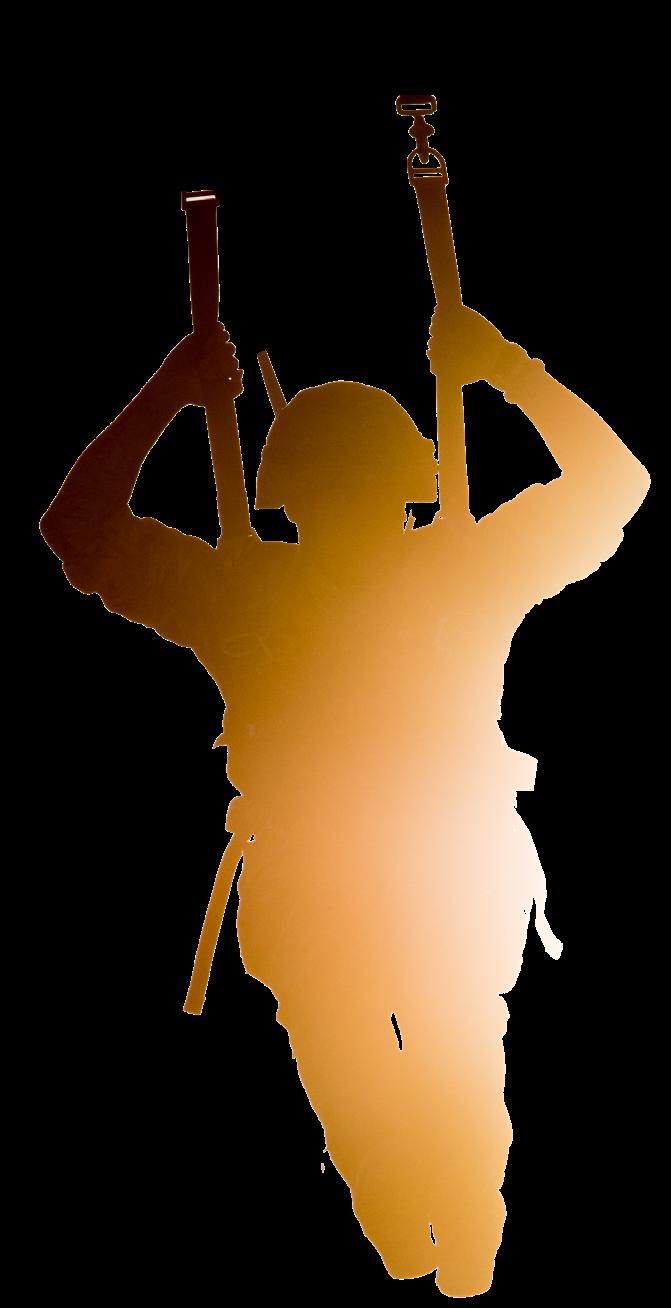
Limited actions (in size, objectives and ambition) by airborne troops, with good communications and when well connected with a range of other capabilities, can have disproportionate effects at both the tactical and operational levels. “”
Fallschirmjäger maintained radio contact with Germany and coordinated repeated resupply drops by air from Ju 52s. Resustained, the paratroopers prolonged their stand, keeping the enemy engaged for longer and delaying Norwegian efforts to clear the Gudbrandshal Valley and enable an Allied advance towards the now-occupied cities of Oslo and Trondheim. Eventually, field artillery was called upon to hammer the entrenched Germans, who, with no means to retreat or repel the heavier fire, were forced to surrender on the 19th April.
At a purely tactical level, the Dombas airborne operation was a failure; the objective of destroying the railway junction was not met – it was damaged but almost instantaneously repaired. However, it was unequivocally successful at the broader operational level, as for five crucial days a very small number of German Fallschirmjäger tied down a vast number of Norwegian units and blocked the lines between Oslo and Trondheim, hampering Allied capacity to advance inland to counter the German gains in the south as the Wehrmacht began reinforcing its units at various drop zones and began to link them up.
Similar to at Sola, the small size of the Fallschirmjäger deployment initially compelled the Norwegian command not to send reinforcements, believing the 2nd Battalion was sufficient to contain and quell the incursion. However, once it became apparent several days later that the airborne troops were being continually resupplied and had dug into commanding positions around the railway junction, the Norwegians did send additional units and heavier weapons, including a 40mm anti-aircraft gun. Nonetheless, it would take
several more days before the Fallschirmjäger would surrender, buying the Wehrmacht in central and southern Norway key time to strengthen and expand its positions by tying down a disproportionate force at Dombas and delaying any Allied counter-attack through Gudbrandshal. A larger German force would likely have precipitated a faster and more forceful Norwegian response and likely blunted the impact of the Fallschirmjäger at the operational level.
The various campaigns and operations of the Second World War offer numerous insightful and enduring lessons and factors that continue to bear relevance for determining success or failure in contemporary airborne operations. In particular, the importance of robust inter-unit communication as a defence against changing or unforeseen circumstances, and the importance of deploying airborne forces in their most effective context: in smaller-scale, targeted auxiliary roles rather than as the leading elements of major operations at the strategic level, where their impact is restricted (by virtue of their typically light arms and geographical dislocation), and comes at enormous cost.
In summary, therefore, perhaps the biggest lesson for modern operations from this handful of Second World War German examples, is that limited actions (in size, objectives and ambition) by airborne troops, with good communications and when well connected with a range of other capabilities, can have disproportionate effects at both the tactical and operational levels. ‘Airborne raiding’, for want of a neater term, therefore can remain a disproportionately effective tool, when well used.
William Thomas Allison Professor of History, Georgia Southern University
The term ‘light infantry’ brings to mind exactly what is implied – a unit specifically trained and equipped for high mobility, logistical independence and adaptability to different operating environments; an infantry unit that travels and operates ‘light’. Unlike heavy infantry divisions, which can be slow to move, reliant on logistics and tactically rigid, light infantry detachments ideally are free to be “fleet, nimble, and resourceful”. Compared to the centralised command structure of larger units, light infantry commands benefit from a more decentralised approach that promotes initiative and innovation. These features give light infantry versatility and independence, perhaps its greatest strengths.1
Light infantry is ideal for small offensive and counterinsurgency operations, reconnaissance, patrolling and, occasionally, in defensive roles. The 20th century offers many compelling examples of effective light infantry use. For instance, Major General Orde Wingate’s Chindits, a multinational force of Gurkha, African, British and American troops, harassed Japanese supply and communication lines during the 1944 Burma campaign. Similarly, the so-called ‘light’ Chinese Communist Forces fought against United Nations forces in the Korean War, and the British used light forces to conduct counterinsurgency operations in Malaya and Borneo. Although the operating environments and military objectives differ across these examples, all involved infantry forces that embraced the “fleet, nimble, and resourceful” mantra.2
While Rangers and US Army Special Forces deployed to Vietnam, new light infantry brigades also deployed, reflecting the Army’s shift toward brigade-sized units separate from divisions that could be attached or operate independently. This doctrinal shift also reflected the Army’s reorganisation following the Second World War. In 1956, the Army moved away from its traditional, highly effective ‘triangular’ division structure to the ‘pentomic’

division model, as concepts of a nuclear battlefield convinced some military leaders, notably the Army Chief of Staff General Maxwell Taylor, that the conventional battlefield of the Second World War was now outdated. While the triangular structure maintained tightly organised infantry divisions, the new pentomic concept built infantry divisions around five self-sufficient battlegroups. Supported by atomic artillery, these infantry battlegroups, or brigades, allowed a division to be airlifted into the battlespace dispersed, creating a layered defence. This strategy reduced the risk of a tightly formed division being wiped out while also forcing the enemy (the Soviet Army) to attack multiple units, thus diluting its efforts. The concept relied on flawed assumptions, including that an isolated infantry brigade could survive a tactical nuclear strike and continue a conventional defence, and that a nuclear exchange could be contained at the tactical level. The new nuclear-focused Pentomic Army ironically laid the groundwork for the separate light infantry brigades used in Vietnam.3
In 1962, the short-lived Pentomic force was replaced by the Modern Mobile Army (MOMAR) model through the Reorganization of Army Divisions (ROAD) programme, aligning with President Kennedy’s ‘flexible response’ approach, aiming for more versatile non-nuclear crisis response options. ROAD created a more adaptable structure for deterrence, counterinsurgency and major operations, allowing divisions to tailor their organisation.4 A ROAD brigade consisted of a headquarters, reconnaissance, armour, engineers, artillery and associated units, supporting up to five battalions. While functioning as a mini-division, it could attach to larger units such as a division or corps. Limited mobility was a challenge, with helicopter mobility in early development, which soon became critical for light infantry in Vietnam.5 With only dirt ‘highways’ and often impassable muddy tracks, air mobility quickly became the preferred method to move brigade elements. A typical light infantry brigade in Vietnam could have up to half the number of ground vehicles

Scott R. Michael, A Historical Perspective on Light Infantry, Combat Studies Institute Research Survey No. 6 (Fort Leavenworth, Kansas: US Army Command and General Staff
Ibid., xii-xiii; Gregory K. Anderson, et al, “The Queen of Battle: A Case for True Light Infantry Capability,” Military Review (July-August 2024): 96-97. See Michael, A Historical Perspective on Light Infantry, for a thorough analysis of these and other light infantry units during and after the Second World War.
Robert F. M. Williams, “The Rise and Fall of the Pentomic Army,” War on the Rocks (November 25, 2022), warontherocks.com/2022/11/the-rise-and-fall-of-the-pentomicarmy, accessed July 1, 2025; John P. Byler, The Pentomic Transition (Fort Leavenworth, Kansas: School of Advanced Military Studies, 2020), 1-27. See also Andrew Bacevich, The Pentomic Era: The US Army Between Korea and Vietnam (Washington, DC: National Defense University Press, 1986).
Brian McAllister Linn, Elvis’s Army: Cold War GIs and the Atomic Battlefield (Cambridge, Massachusetts: Harvard University Press, 2016), 300-301.
John B. Wilson, Manuever and Firepower: The Evolution of Divisions and Separate Brigades (Washington, DC: US Army Center of Military History, 1998), 291-318.
John J. Tolson, Vietnam Studies: Airmobility, 1961-1971 (Washington, DC: US Army Center of Military History, 1973), 1-47.

With only dirt ‘highways’ and often impassable muddy tracks, air mobility quickly became the preferred method to move brigade elements. A typical light infantry brigade in Vietnam could have up to half the number of ground vehicles compared to a regular infantry brigade, relying instead on enhanced air mobility.
compared to a regular infantry brigade, relying instead on enhanced air mobility.6
As Army historian John J. McGrath notes, “in many ways, Vietnam was a war of brigades”.7 Brigades, not divisions, were the first Army units to deploy to Vietnam, starting with the 173rd Airborne Brigade, organised as ‘light’ in Okinawa, to Bien Hoa in May 1965. Being more mobile and semiindependent under the MOMAR/ROAD model, deployment by brigade suited basing, mobility and manoeuvring in Vietnam’s unforgiving, isolated battlespace. In total, four light infantry brigades – the 11th, 196th, 198th and 199th – in addition to the 173rd Airborne Brigade mentioned above, deployed to Vietnam. Each brigade consisted of at least four manoeuvre battalions. Support units assigned to light infantry brigades included an engineer company, an aviation detachment, a chemical detachment, an artillery battalion, an armoured reconnaissance company or cavalry troop and a support battalion. Depending on a brigade’s mission, additional support units could include military police or base security units, a public information detachment and a signal company.8 A light infantry unit typically operated from a fire support base or landing zone by helicopter to patrol its tactical area of responsibility to detect enemy communications, supply routes, caches or set ambushes. Brigade strength at a
fire support base varied with battalion assignments, usually rotating units for base defence while others were in the field. Despite carrying 80 pounds of gear – ammunition, supplies, radios and bivouac equipment – infantrymen depended on frequent helicopter resupply and medevacs.9
Light infantry brigades participated in a range of operations during the war, including Cedar Falls and Junction City.10 Operation Attleboro, for example, launched in September 1966, shows the potentially complex nature of light infantry operations. In September 1966, II Field Force commander Major General Frederick Weyand ordered the 196th Light Infantry Brigade to search for rice and weapons caches along
7John J. McGrath, The Brigade: A History—Its Organization and Employment in the US Army (Fort Leavenworth, Kansas: Combat Studies Institute Press, 2004), 65-67.
8Shelby Stanton, Vietnam Order of Battle (New York: Galahad Books, 1986), 87-89.
9McGrath, The Brigade, 66-68. See also Kristian Lindhart, “Deployment of Light Infantry Under Air Mobility Doctrine: A Historical Study of Helicopter Deployed Light Infantry,” Scandinavian Journal of Military Studies 4:1 (2021): 256-266.
10See Bernard William Rogers, Vietnam Studies: CEDAR FALLS-JUNCION CITY: A Turning Point (Washington, DC: US Army Center of Military History, 1989). The operations occurred in January and February-May 1967 in and around the infamous Iron Triangle area northwest of Saigon, targeting the 9th PLAF Division and the Central Office of South Vietnam (COSVN) headquarters.
the Saigon River in Tay Ninh Province. What started as a successful mission for one battalion quickly expanded without proper intelligence. The 196th, recently arrived in Vietnam with new brigade commander Brigadier General deSaussure, added more battalions after discovering additional caches. As People’s Army of Vietnam (PAVN) and People’s Liberation Armed Forces (PLAF) of South Vietnam divisions converged on the strung-out battalions, deSaussure lost operational control. Weyand replaced him with 1st Division commander General William DePuy, who coordinated air support and brought in additional units, including the 173rd Airborne. The operation grew from a battalion task to a Field Force-level operation that ultimately compelled the 9th PLAF Division to withdraw after losing 1,016 killed. The 196th Light Infantry Brigade fought effectively once proper leadership was established, supported by helicopter resupply and medevac, highlighting that light infantry could fight in Vietnam with adequate air support.11
During the Tet Offensive (January-February 1968), while the 11th, 196th and 198th Light Infantry Brigades conducted small-unit operations in the southern I Corps Tactical Zone, the 199th – self-described as the ‘Red Catchers’ – fiercely defended Long Binh, headquarters for II Field Force. Supported by the 11th Armoured Cavalry, the 199th Light Infantry Brigade repelled assaults by the 274th and 275th PLAF Regiments, then pushed back PLAF units in nearby Ho Nai. After three days of intense fighting, the 199th reported over 900 enemy killed against 19 soldiers lost and 150 wounded. The brigade’s 3rd Battalion, 7th Infantry, heli-lifted to Saigon’s Cholon District to retake Phu Tho Racetrack from PLAF units. After eight hours of intense fighting, the battalion secured the area and remained to clear PLAF fighters from Cholon. The fighting in Cholon resembled urban combat in Hue City, showing light infantry’s versatility and mobility.12
Based on the ‘plug-and-play’ nature of the brigade model and the use of light infantry units in Vietnam for patrolling, reconnaissance, counterinsurgency and base defence, these brigades were often assigned to task forces and divisions. For example, in April 1967, the 196th Light Infantry Brigade (later joined by the 198th and 11th Light Infantry Brigades) became part of Task Force Oregon, which also included units from the 101st Airborne and the 25th Infantry Divisions. Operating along Highway 1 near Duc Pho and Chu Lai in the I Corps Tactical Zone, this division-sized unit aimed to locate and eliminate PAVN regiments. Although mobility helped contain the PAVN, Task Force Oregon failed to destroy the PAVN forces. Due to logistical and command needs, Westmoreland reformed Task Force Oregon into the 23rd Infantry Division (the old Americal Division) in September 1967. The 11th, 196th and 198th Light Infantry Brigades remained with the 23rd for their remaining deployment.13
While light infantry brigades had successes in Vietnam, they also faced challenges like Attleboro, which had been a close call. Elements of the 11th Light Infantry Brigade were involved in the My Lai Massacre, where poor leadership, bad intelligence and failed command and control contributed to the killing of hundreds of non-combatants. In August 1969, a company of the 196th Light Infantry Brigade refused to move out after days of combat in extreme heat, resulting in the reassignment of the platoon leader and no action taken against the troops involved. Similar refusals occurred in 1972 with the 196th near Da Nang.14 These incidents reflect the
challenges of combat, command and leadership faced by all combat units in a complex, unpopular war. Despite obstacles like ambushes, booby traps, snipers, extreme weather, demanding terrain and a determined enemy, light infantry brigades performed well. Despite designated as ‘light’, the brigades still depended upon reliable communications, timely resupply, good intelligence, clear tactical goals and competent leadership to be effective in combat.15
While this article focuses on US Army light infantry brigades, it is essential to note that they faced perhaps the most motivated and resilient light infantry force of the 20th century. The PLAF and PAVN operated like the Chindits in the Second World War and the Chinese Communist Forces during the Korean War. Carrying a bare minimum on their backs with tenuous resupply and no rapid medevac, they stood toe-to-toe with one of the best-equipped and trained military forces in the world.16
The Army’s light infantry concept persisted after Vietnam. As the Army shifted from counterinsurgency in Southeast Asia to confronting the Soviet Red Army with its new AirLand Battle doctrine, heavily mechanised units gained more support. Recognising the overemphasis on mechanised forces, in 1984 Army Chief of Staff General John Wickham proposed highly trained, rapid-deployable light forces. Inspired by British success in the Falklands and the lack of mechanised infantry in Grenada, Wickham argued that heavy mechanised forces limited deployability and flexibility to apply appropriate force for specific objectives. For Wickham, the “light infantry division concept” held “geo-strategic value as well as battlefield utility” for the Army in the 1980s. Wickham overcame opposition and restructured five divisions around the light infantry concept, including the 7th, 25th and 6th Infantry Divisions, and the 10th Mountain Division. More recently, the 2019 Army Modernization Strategy also emphasised a “light and lethal” approach for multi-domain operations. Light infantry’s appeal and relevancy remain critical to the contemporary threat environment.17
11Glenn F. Williams, Taking the Offensive: October 1966-September 1967 (Washington, DC: US Army Center of Military History, 2016), 16-22; Rod Paschall, “Operation Attleboro: From Calamity to Curshing Victory,” Vietnam (August 2011): 24-29; William Head, “The Tiangle of Iron and Rubber: Ground Actions and Airpower during Operation Attleboro,” Air Power History (Winter 2020): 33-44.
12Patrick Feng, “The 199th Infantry Brigade,” Army Historical Foundation, armyhistory. org/the-199th-infantry-brigade, accessed June 22, 2025.
13Williams, Taking the Offensive, 52-64.
14“Incident in Song Chang Valley,” Time (September 5, 1969), time.com/ archive/6637427/world-incident-in-song-chang-valley, accessed June 26, 2025; David Axe, “A US Army Brigade ‘Mutinied’ Twice in Three Years in Vietnam: The 196th Light Infantry Brigade had a Bad Reputation,” Trench Art (April 25, 2024), daxe.substack. com/p/a-us-army-brigade-mutinied-twice, accessed July 1, 2025.
15See, for example, DTIC AD0525878: Lessons Learned, Headquarters, 196th Infantry Brigade, February 2, 1968, Internet Archive, archive.org/details/DTIC_AD0525878, accessed June 3, 2025, and DTIC AD0507858: Lessons Learned, Headquarters, 199th Infantry Brigade, March 4, 1970, Internet Archive, archive.org/details/DTIC_ AD0507858/mode/2up, accessed June 3, 2025.
16See, for example. Ken Conboy and Ken Bora, The NVA and Viet Cong (Oxford: Osprey Publishing, 1992).
17Chief of Staff of the US Army, White Paper 1984, “Light Infantry Divisions” (April 16, 1984), docslib.org/doc/2535471/white-paper-1984-light-infantry-divisions, accessed June 28, 2025; US Army Futures Command, “2019 Army Modernizaton Strategy,” (October 17, 2019), army.mil/standto/archive/2019/10/17, accessed July 5, 2025; Congressional Research Service, “The 2024 Army Force Structure Transformation Initiative” Report R47985 (February 5, 2025), congress.gov/crs-product/R47985, accessed July 5, 2025; Anderson, et al, “The Queen of Battle”: 98-102.
Professor Matthias Strohn Head of Historical Analysis, CHACR

The history of war and warfare is long and complex, and so is the use of light forces within this history. The examples of the good and useful – and also of the less good and less useful – employment of light forces are endless. The selection of historical epochs and events that are presented in this Ares & Athena are thus merely exactly this – a selection. We could have included discussions on the auxiliary forces that supported the Roman legions. According to the Roman author Tacitus, these troops made up approximately 50 per cent of the Roman armed forces and included light infantry, cavalry and specialists such as archers. We could have analysed the use of light forces by the Condottieri, the war lords and military leaders of Renaissance Italy, or the role these troops played during the 30 Years War. And yet, the artilces collected in this edition shed light on the use and employment of light forces throughout history, and, more importantly, they allow us to draw some conclusions that are relevant for light forces today.
Perhaps the most important point to stress is that light forces have been an integral and important part of the military toolbox. In our analysis of war, we often concentrate on the major events, and this means, in this context, on major battles. These are important and were, sometimes, decisive, but, more often, they were not, and they did not bring about an end to wars. In the 18th century, as analysed on earlier pages, this meant that the phases between major battles were arguably just as important as the big clashes of arms on the battlefield. And these periods were characterised by constant harassing of the enemy forces, by ambushing troops and cutting supply lines. Light forces were key to this.
The articles in this Ares & Athena also show that light forces can have a decisive effect. Dr Agilolf Kesselring’s contribution on the light forces
in Finland makes this clear, so to does Jack Duncan’s description of the use of German airborne forces in the Second World War. The fact that the US Army’s light infantry concept persisted after Vietnam, as William Allison explains, also points towards the understanding of the usefulness and importance of light forces. But it would be too easy to say that this has always and simply been so. The use of light forces requires a detailed understanding of their abilities and capabilities, the mission and the enemy. To stay with the airborne example: Eben Emael was a huge success.
Market Garden was not.
Terrain, as always, has a decisive impact on how an operation can be conducted. This was one of the main reasons for the rise and use of light forces in America in the 18th century and in the HabsburgOttoman border lands. The same applies to Finland (see the articles on the current use of light forces in the Nordic states). Other terrains might require a different force. The Central European plain is not necessarily a terrain that lends itself to the use of light forces, and it is therefore no surprise that during the Cold War a clear shift of all armies towards armoured formations was visible.
The full orchestra of warfare might be required when the balloon goes up. Using light forces merely as a cost-saving measure, because they might be cheaper than more heavily equipped units and formations, does not do them justice and potentially harms the Army and thus the nation as a whole. “”
Lastly, the articles presented here convey a variety of types of light forces – cavalry, infantry and airborne. A clear definition of what light forces really are must be a starting point for an informed discussion about the effects these troops can have. One might say this is semantics, but it is not. A clear definition of the structure and capability flows into a defined structure and tasks. In all examples presented here, light forces (in whatever shape or form) were operating closely with other types of forces. The full orchestra of warfare might be required when the balloon goes up. Using light forces merely as a cost-saving measure, because they might be cheaper than more heavily equipped units and formations (similar to the developments at the end of the Seven Years War), does not do them justice, and potentially harms the Army and thus the nation as a whole.
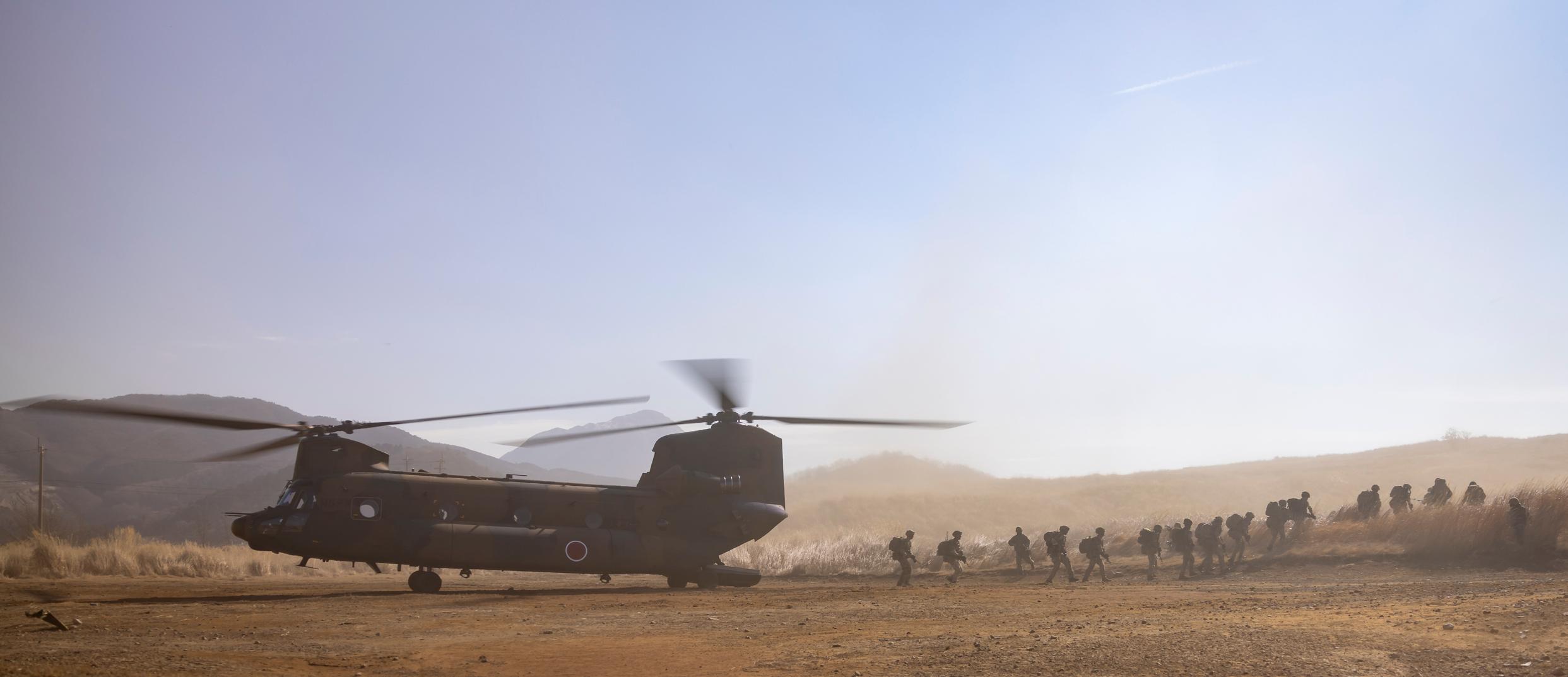
The training and composition of light forces often make them the first choice for deployments in challenging terrain and circumstances. This section analyses the utility of light forces in different scenarios, ranging from airborne deployments to subterranean and urban operations.


Urban warfare demands dismounted infantry: Accept it. Prepare them.
The utility of light forces for security assistance activities
The evolution of tunnel warfare and the deployment of light forces
Are we drawing the right lessons from Ukraine
is

“You can fly over a land forever; you may bomb it, atomize it, pulverize it and wipe it clean of life – but if you desire to defend it, protect it and keep it for civilization, you must do this on your feet, with a rifle, by putting your young men into the mud.” – T.R. Fehrenbach1
With the continued urbanisation of not only the world but modern warfare, T.R. Fehrenbach’s “mud” may well be cities. Urban warfare requires all arms – from engineers and armour to artillery and dismounted infantry. History consistently shows that whether attacking or defending, the side that integrates all elements of combat power most efficiently gains the advantage. One of the clearest and most consistent lessons of modern urban warfare is that dismounted infantry are a vital ingredient in the recipe for success, especially in highintensity conflicts where cities become battlefields. When cities become ‘rubbled’ or ‘ruined’ – flattened, burned, pulverised by artillery and air strikes – airpower or tanks alone cannot seize, clear or hold ground. You need boots on the ground. The unique capabilities of dismounted infantry make them indispensable for seizing, clearing and holding urban terrain, especially in complex environments such as Kyiv, Gaza, Mariupol or Bakhmut.
Urban terrain is restrictive by nature – tight streets, collapsed buildings, debris-choked alleyways. Armoured vehicles often can’t get through or become predictable targets when they try. Dismounted infantry can move through windows, create passages through walls, climb over rubble, use subterranean access points and occupy vertical terrain that vehicles can’t reach. Their mobility is unmatched in dense environments.
Foot soldiers can move quietly and exploit cover more effectively than vehicles. This advantage allows them to operate undetected, set up ambushes, infiltrate cities or flank enemy positions. The use of non-linear movement and urban camouflage gives dismounted infantry a tactical edge in the chaos of city fighting.
Urban warfare is a knife fight. Hallways, stairwells, basement corridors – these are the battle spaces of the infantry. The rifleman, supported by grenadiers and machine gunners, becomes the decisive weapon system. No drone or tank can substitute for a trained squad clearing street to street.
Infantry can hold terrain far longer than any remote asset.
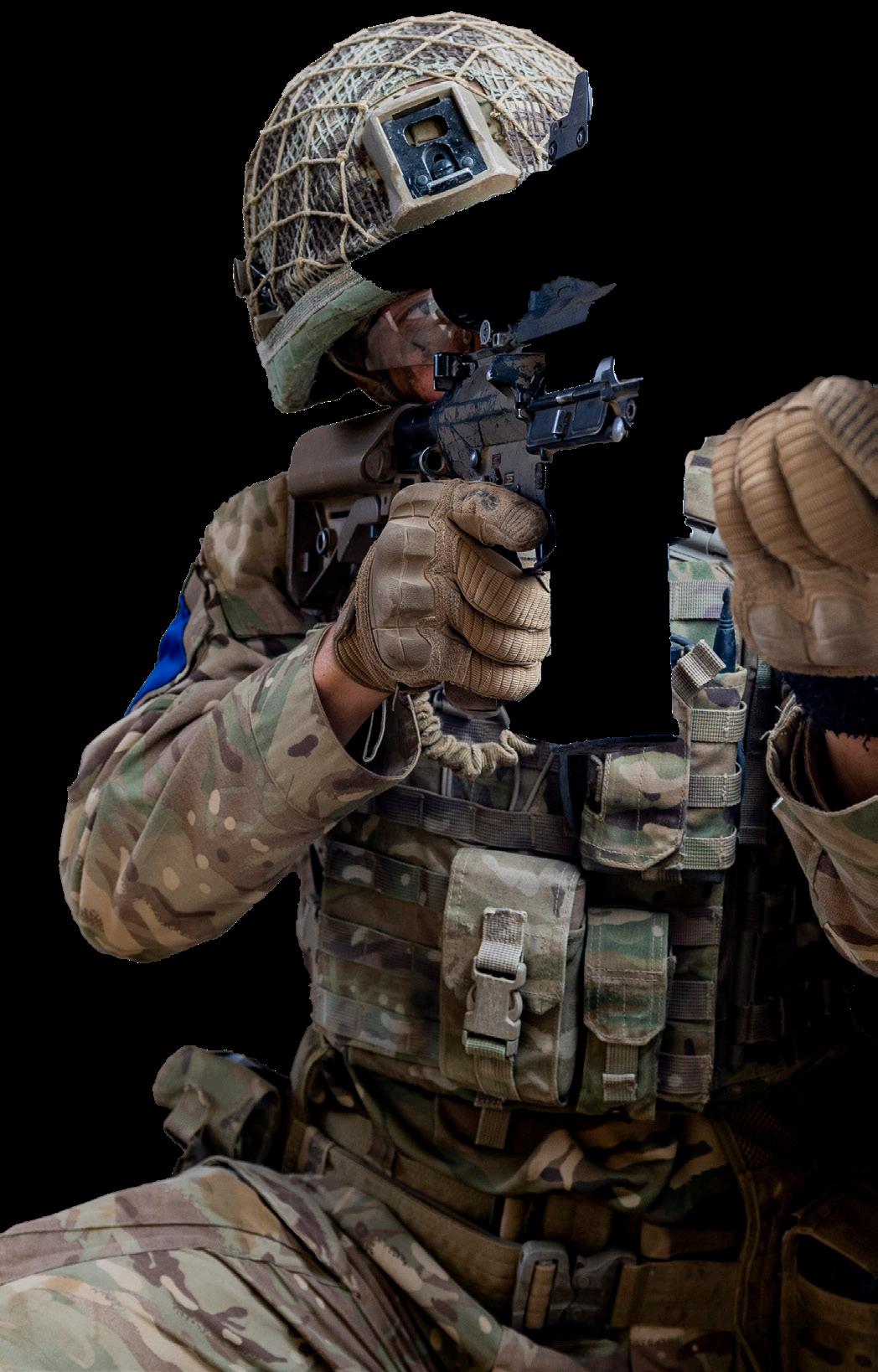

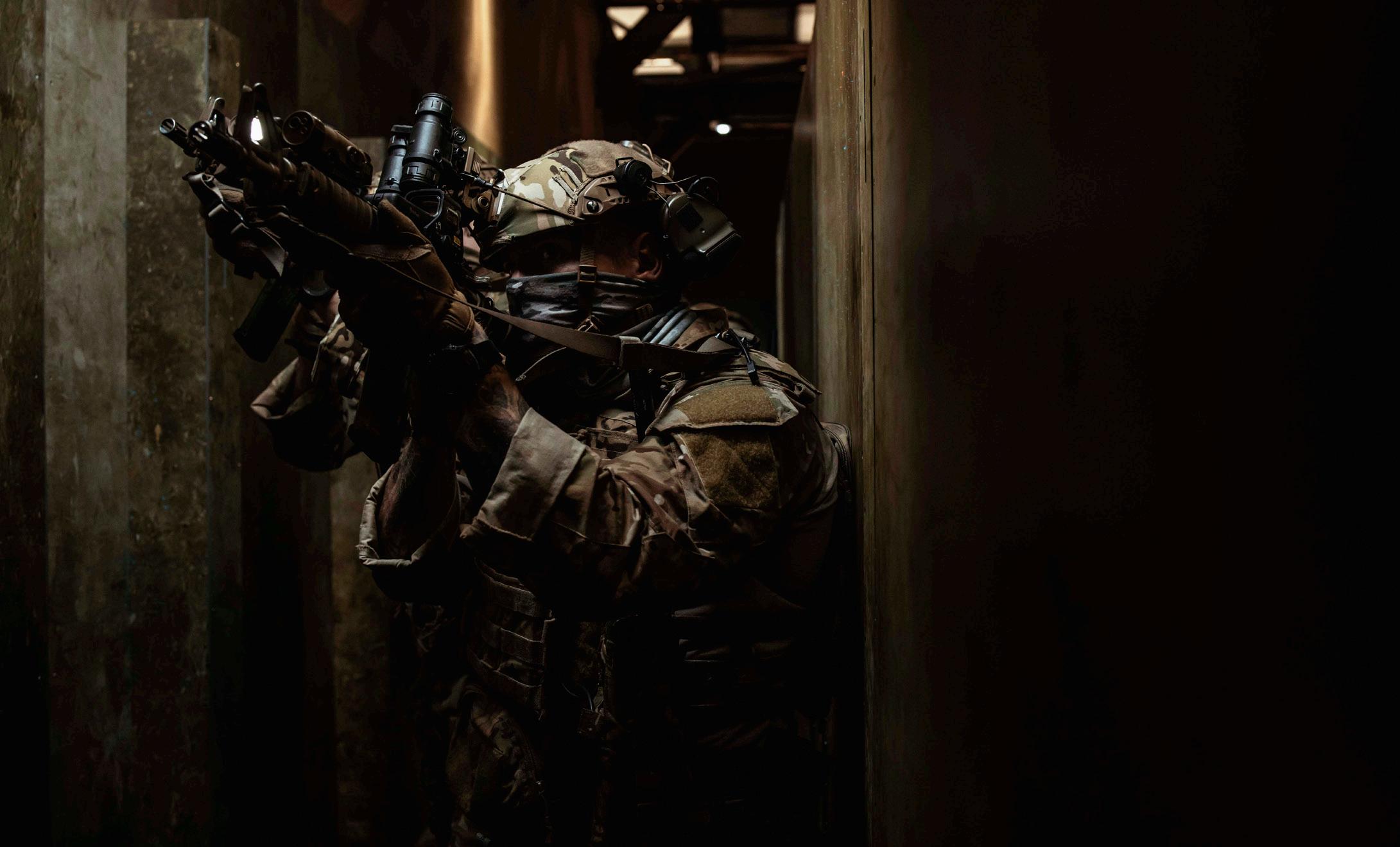
They interact with civilians, identify threats that machines overlook and occupy terrain in a way that asserts control. Especially in stability or occupation phases, infantry presence is not just tactical – it’s strategic.
The subterranean factor
Today’s cities are not just two-dimensional battlefields. Adversaries are increasingly exploiting the third dimension: below the surface. From Hamas’ tunnel networks in Gaza and Hezbollah tunnels in southern Lebanon to Russian soldiers using tunnels in eastern Ukraine, subterranean warfare is now a core feature of urban combat.
Dismounted infantry are uniquely suited for this fight. With the right equipment and specialised training, small units can conduct reconnaissance, raids and clearance operations underground. Or, like the Israel Defense Forces in Gaza, even conduct manoeuvre warfare attacking the enemy on two planes – surface and subsurface.2 This kind of warfare demands physical endurance, mental toughness and a tight squad cohesion only infantry can provide. But it is not without risk. Underground spaces are prone to collapse, chemical hazards and the denial of global positioning system (GPS) and radio communications. Ventilation is poor. Visibility is often zero. These are not conditions for the lightly trained. Subterranean operations require a level of readiness, precision and leadership far beyond conventional field manoeuvres. Waiting until a unit is deployed into an urban environment with a complex subterranean threat is too late to prepare.
Recent conflicts have tested and confirmed this reality across multiple theatres – revealing how light forces, especially dismounted infantry, shape outcomes in cities around the world.
Shusha (2020): In the final days of the 2020 Second Nagorno-Karabakh War, Azerbaijani special operations and
Underground spaces are prone to collapse, chemical hazards and the denial of global positioning system and radio communications. Ventilation is poor. Visibility is often zero. These are not conditions for the lightly trained. Subterranean operations require a level of readiness, precision and leadership far beyond conventional field manoeuvres.
commando units executed a near-mythic infiltration to seize the fortress city of Shusha – an operation that proved decisive in ending the conflict.3 Operating without armoured support, the Azerbaijani forces trekked for several days through the wooded and mountainous terrain surrounding the city, carrying heavy loads to patrol bases and then minimal gear for the assault to maintain speed and stealth.
Armenian defenders had fortified the high ground, believing the cliffs impassable. However, under the cover of darkness, Azerbaijani troops scaled near-vertical rock faces, leveraging rock-climbing techniques and critical terrain analysis. Once inside, they initiated close-quarters combat in narrow alleyways and multi-storey buildings, relying on light infantry weapons and squad-based manoeuvre. Their ability to move undetected and adapt rapidly in close terrain forced the defending Armenian units into retreat. This operation revealed the vulnerabilities of fixed defences in urban terrain and demonstrated how elite light infantry, properly trained and motivated, can shape the outcome of a war.
Kyiv (2022): Russia’s plan to rapidly seize Kyiv through a decapitation strike collapsed in the war’s opening weeks – due in large part to its own flawed force design and underestimation of the urban battlespace. The Russian military had recently restructured around battalion tactical groups, which prioritised armour, artillery and centralised control at the expense of infantry. Although battalion tactical groups typically fielded 700-900 soldiers, most had fewer
2Spencer, John. “Israel’s New Approach to Tunnels: A Paradigm Shift in Underground Warfare.” Modern War Institute, April 11, 2024. mwi.westpoint.edu/israels-newapproach-to-tunnels-a-paradigm-shift-in-underground-warfare
3Spencer, John, and Harshana Ghoorhoo. “The Battle of Shusha City and the Missed Lessons of the 2020 Nagorno-Karabakh War.” Modern War Institute, July 14, 2021. mwi.westpoint.edu/the-battle-of-shusha-city-and-the-missed-lessons-of-the-2020-nagornokarabakh-war
than 300 dismounted troops – far too few to seize, clear or hold urban terrain.4 As a result, Russian mechanised columns advanced along predictable axes – through Hostomel, Bucha and Irpin – without adequate infantry to provide security, scout or respond to Ukrainian resistance.
Ukrainian forces exploited this vulnerability with dispersed, adaptive infantry units, supplemented in many cases by civilian volunteers who provided reconnaissance, logistics and local support. Armed with Javelins, Next Generation Light Anti-armour Weapons and rocket-propelled grenades, small teams executed ambushes in urban choke points, destroyed logistics convoys and rapidly redeployed. Many operated independently for days, sustained by civilian networks that provided intelligence and mobility. Urban blocks were layered with kill zones and sniper positions, while roads and intersections were channelled or booby-trapped to expose Russian vehicles to concentrated fire. As Russian battalion tactical groups failed to secure flanks or adapt to asymmetric threats, their advances stalled. By late March, the offensive on Kyiv had collapsed entirely. The battle reaffirmed that mechanised forces without adequate dismounted infantry are brittle and vulnerable in urban warfare.
Mariupol (2022): From March to May 2022, Mariupol became one of the most dramatic examples of modern urban resistance. Ukrainian defenders – including Marines, Azov Regiment fighters, National Guard units, and Territorial Defense volunteers – initially attempted to hold the city’s outer neighbourhoods against a rapid Russian advance. As pressure mounted, they conducted a phased tactical withdrawal into the eastern industrial district, including the sprawling Azovstal and Illich steel plants.
of Mariupol tied down significant Russian combat power and disrupted operations across Eastern Ukraine.
Bakhmut (2022–2023): The ten-month battle for Bakhmut was marked by attrition and street-by-street combat reminiscent of Stalingrad. Russia, led by Wagner mercenaries and penal units, launched daily infantry assaults on Ukrainian trench lines carved through urban terrain. Both sides turned basements into command posts and high-rises into sniper nests. Many positions changed hands multiple times in a day. Ukrainian units implemented strict infantry rotation schedules to preserve combat power. Junior leaders played outsized roles, coordinating fires, logistics and manoeuvre while under constant pressure. The fight demonstrated that despite high-tech fires and drones, resilient and adaptive foot soldiers remain the backbone of urban control.

Infantry protect tanks from closerange threats like anti-tank teams hiding in upper floors or alleyways, while tanks shield infantry from snipers, heavy weapons and fortified positions. It is a symbiotic relationship – one that becomes essential in the cluttered, threedimensional battlespace of cities. Urban combat changes street by street, floor by floor.
These facilities offered hardened shelter, extensive underground networks, and defensible choke points. Ukrainian infantry used tunnels and reinforced bunkers to conduct stealth movement, counterattacks and civilian evacuations, even as Russian forces employed thermobaric weapons and relentless bombardment. Despite encirclement, Ukrainian forces carried out multiple daring helicopter resupply missions under fire. Between late March and mid-April, Ukrainian helicopters repeatedly penetrated Russian air defences to deliver ammunition, medical supplies and dismounted reinforcements.5 These missions were a testament to the defenders’ cohesion and the strategic role of infantry even under siege. The defence
4Kofman, Michael, and Rob Lee. “Not Built for Purpose: The Russian Military’s Ill-Fated Force Design.” War on the Rocks, June 2, 2022. warontherocks.com/2022/06/not-builtfor-purpose-the-russian-militarys-ill-fated-force-design
5Spencer, John, and Liam Collins. “The Untold Story of the Ukrainian Helicopter Rescue Missions During the Mariupol Siege.” Time, February 15, 2024. time.com/6694858/ ukrainian-helicopter-missions-mariupol-siege
Gaza (2023-Present): Following the Hamasled 7th October massacre, the Israel Defense Forces launched a large-scale ground operation in Gaza, aimed at dismantling Hamas’ military infrastructure embedded within dense civilian terrain. Infantry brigades had to quickly adapt to the layered threat environment, which included booby-trapped homes, ambushes in collapsed buildings and fortified tunnel networks woven into residential areas. The Israel Defense Forces advanced methodically, integrating engineers, armoured units, surveillance and attack drones, and small infantry teams to clear neighbourhoods and identify hidden threats. Despite possessing superior surveillance and precision firepower, Israeli commanders found that the decisive advantage in close-quarters combat came from dismounted infantry capable of making real-time decisions, distinguishing combatants from civilians, and operating in spaces no machine or munition could reach.
The campaign has required Israeli soldiers to fight in one of the most heavily prepared urban defences in modern history – built over years by Hamas in anticipation of such a conflict. Infantry units have conducted house-to-house, floor-by-floor and tunnel-by-tunnel operations to find fighters, weapons caches and command centres concealed in schools, mosques and residential buildings. Hamas’ use of civilian infrastructure as cover and its distributed, compartmentalised military structure have made the process of dismantling its capabilities slow, dangerous and reliant on the physical presence of ground troops. Urban terrain, complexity and the absence of clear front lines have reinforced the longstanding truth: even for the most advanced military, urban warfare ultimately comes down to small units of infantry clearing ground at great personal risk.
Necessity of combined arms urban operations
Modern urban warfare is won not by any single capability, but by the seamless integration of all available arms. Dismounted
infantry must be supported – but they must also be present. Tanks offer concrete-penetrating firepower and protection. Infantry offer eyes, flexibility and close-in lethality. Each complements and mitigates the vulnerabilities of the other in urban combat. Infantry protect tanks from close-range threats like anti-tank teams hiding in upper floors or alleyways, while tanks shield infantry from snipers, heavy weapons and fortified positions. It is a symbiotic relationship – one that becomes essential in the cluttered, three-dimensional battlespace of cities. Urban combat changes street by street, floor by floor. Combined arms teams allow commanders to apply the right tool at the right time – whether breaching a fortified structure, suppressing a sniper, evacuating casualties or clearing a tunnel entrance under fire. In this environment, no single platform wins the fight. It is the fusion of capabilities, centred on the infantry, that enables success.
Infantry units provide real-time intelligence that no drone or satellite can replicate. They talk to civilians, sense atmospherics and map the human terrain. This is vital not only for fighting but for stabilising post-combat zones.
Urban warfare is the most physically, psychologically and tactically demanding form of combat. It requires a unique blend of mental toughness, tactical skill and adaptive leadership. If armies want to win in future cities, they must deliberately train, man and equip their forces for the environments where tomorrow’s wars will be fought.
Training must go far beyond basic building clearance. Forces must train in underground complexes, high-rises and simulated ‘rubbled’ terrain against thinking, adaptive adversaries. Subterranean warfare in particular demands
a new mindset – navigating darkness, limited air and GPSdenied conditions in tightly knit teams.
Equipment must evolve. Urban units require concretepenetrating munitions, non-GPS-based navigation tools, lightweight breaching kits, disposable reconnaissance and attack drones, and scalable personal protection. Urban infantry must be equipped not like conventional line units, but like the point of the spear – because in cities, they are.
Leadership is perhaps the most decisive factor. Urban combat devolves quickly to the squad and platoon level, where junior leaders must make split-second decisions under extreme stress, often without guidance from higher headquarters. These leaders must not only demonstrate initiative but also synchronise multiple enablers in real time –drones, engineers, indirect fires, medics and armour – while manoeuvring through confined, high-risk environments. This kind of tactical agility must be cultivated through deliberate education, realistic live-fire training and a command philosophy that prioritises decentralised execution.
Finally, dismounted infantry must be fully integrated into a multi-domain system – supported by drones, precision fires and resilient communications that function within ‘urban canyons’. Victory in this environment depends on the fusion of capabilities across domains but always centres on the infantry in the fight.
Urban warfare isn’t going away. If anything, it is becoming the defining terrain of modern conflict. The central actor in that environment – the soldier on foot – remains irreplaceable. Whether holding a key intersection in Kyiv or clearing a tunnel in Gaza, dismounted infantry are the decisive force. Accept it. Train them. Man them. Equip them. Prepare for urban warfare.
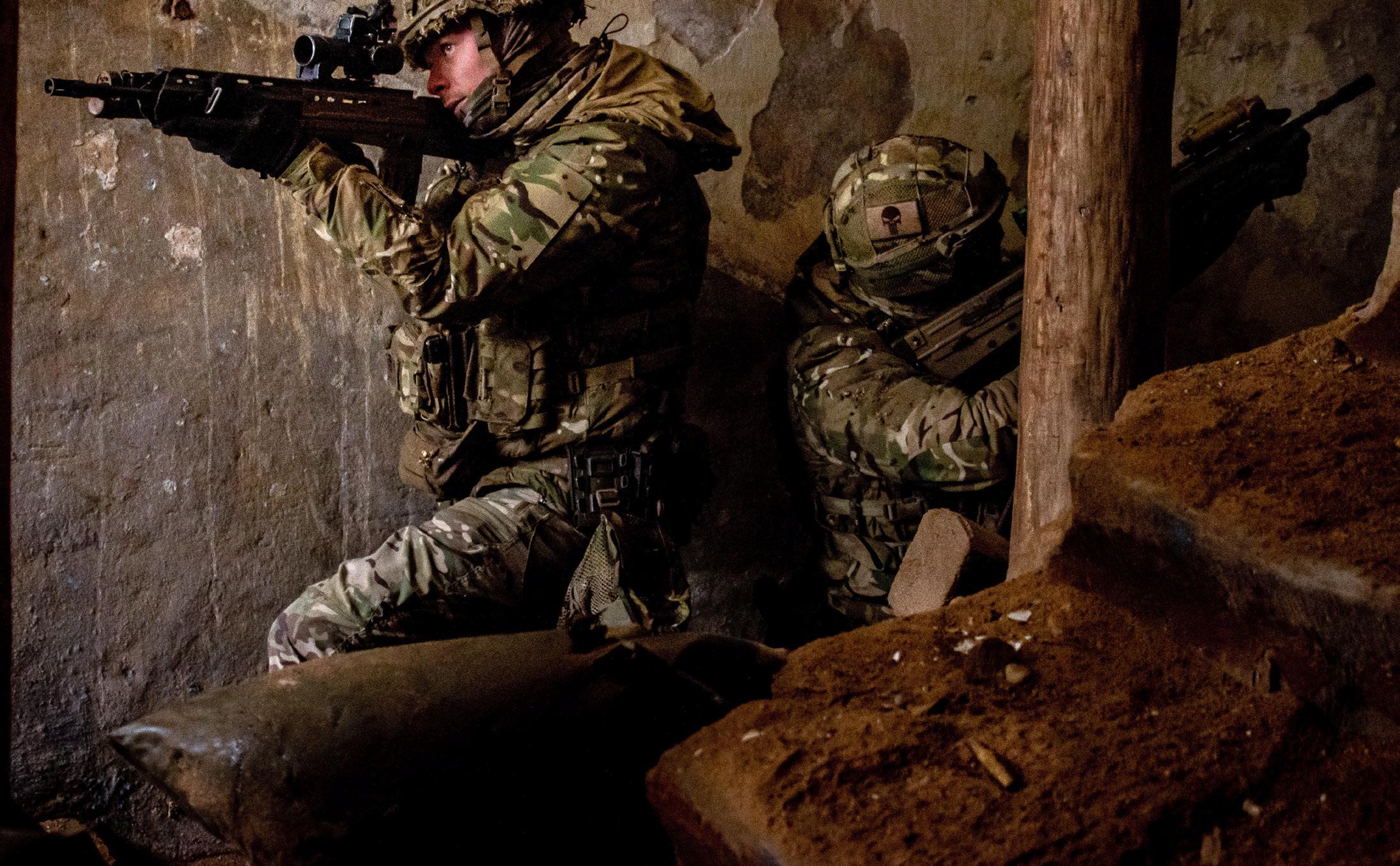

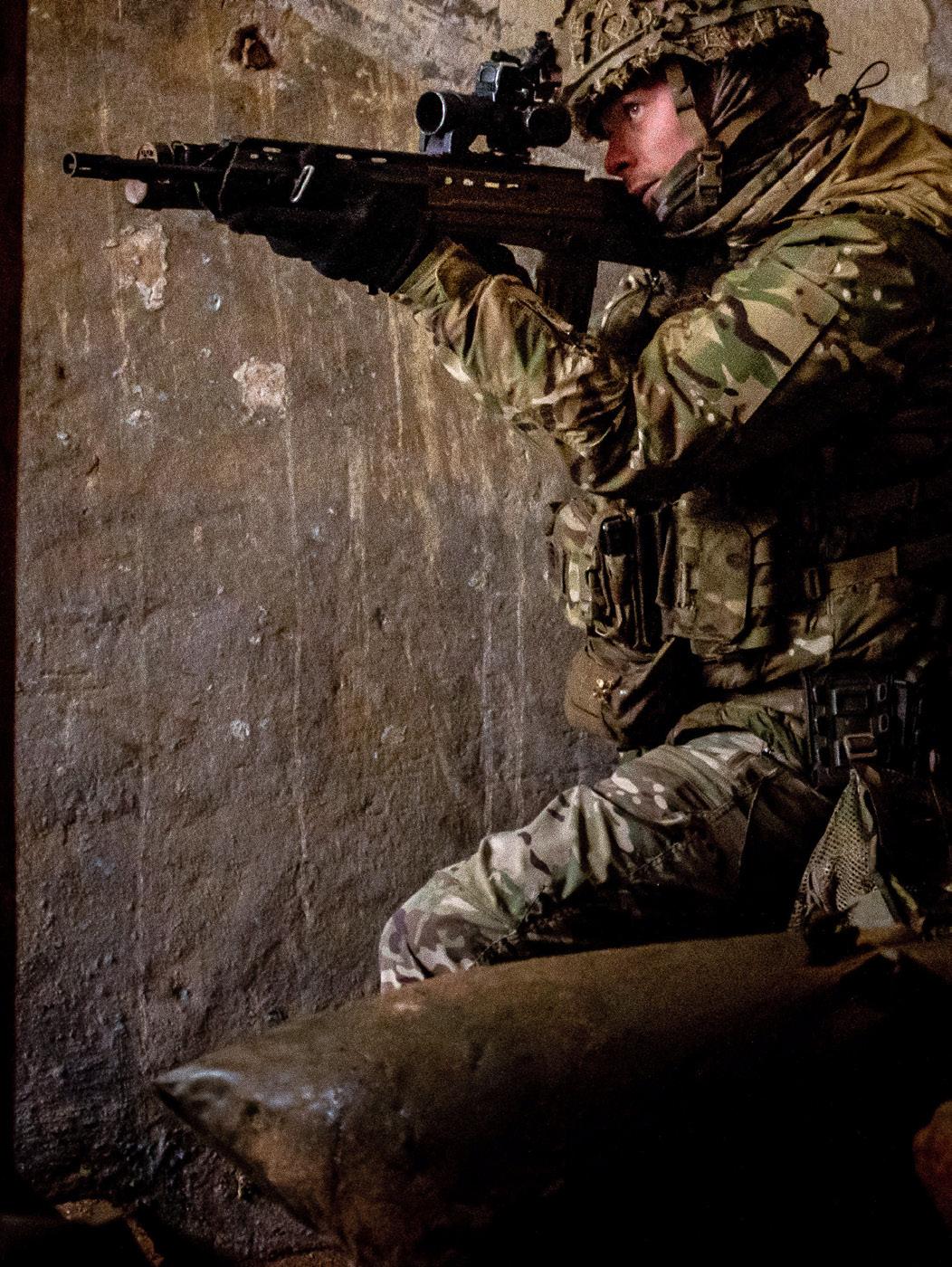
Dr Alex Neads Assistant Professor of International Security Durham Global Security Institute, Durham University
The provision of military training and advice to the armed forces of a partner country, also known as Security Force Assistance (SFA), is an undertaking closely associated with light forces. Under Army 2020, it was the light forces of 1 (UK) Division that were tasked with assisting partner forces across the globe.1 Similarly, the British Army’s dedicated SFA brigade was established as a light infantry organisation, while the Army Special Operations Brigade – which specialises in accompanying partner forces on high-risk operations – likewise grew from light infantry origins. Thus, in the British Army, the provision of security assistance has increasingly become the business of light forces, and especially light infantry.
Indeed, in many respects, light forces appear ideally suited to the conduct of SFA. Light infantry units are comparatively easy to deploy at distance, capable of operating in complex or rugged terrain and austere environments, and are often seen as the building-block of armies. It is little wonder then that the provision of dismounted infantry training to partner forces has been a mainstay of British expeditionary operations during the past quarter of a century – especially given the centrality of affordable military mass to stabilisation and counterinsurgency operations. Moreover, the British Army has a relatively high proportion of light troops, and a strong international reputation in training robust, capable light infantry. In the (perhaps apocryphal) words of a former Russian staff officer, “Britain has always had the best light infantry in the world, and the bastards get places faster than we would like”.2
increasingly less relevant. Certainly, while analysts continue to disagree about the implications of technological change for the future of armoured manoeuvre,3 heavy armoured forces have historically been the centrepiece of British military contributions to warfighting at scale. If the priority for UK Defence lies in deterring further threats to European security, then the utility of light forces in future assistance and cooperation missions – with NATO allies and beyond – is uncertain.

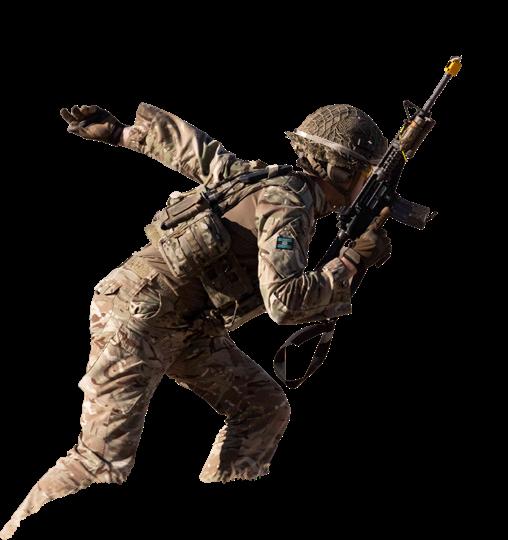
The British Army has a relatively high proportion of light troops, and a strong international reputation in training robust, capable light infantry. In the (perhaps apocryphal) words of a former Russian staff officer, ‘Britain has always had the best light infantry in the world, and the bastards get places faster than we would like’.
However, Russia’s repeated invasions of Ukraine and the resumption of major warfare in Europe has begun to call this relationship into question. As the British Army refocuses on the problems of continental deterrence, troops and roles so closely associated with stabilisation operations may seem
1British Army, Transforming the British Army: An Update (Andover: Army Headquarters, 2013), pp. 8, data.parliament.uk/DepositedPapers/Files/DEP2014-0042/20140110PQ01968B-SOames-A2020-Update-Glossy-U.pdf.
2Mark Galeotti, ‘Forget Britain’s nuclear deterrent – here’s what Russia is really afraid of’, The Guardian, 19 January 2018, theguardian.com/commentisfree/2018/jan/19/ nuclear-weapons-uk-defence-review-russia?CMP=fb_gu
3Phillips O’Brien, ‘War Will Never be this Bulky Again’, The Atlantic, 26 May 2022, theatlantic.com/ideas/archive/2022/05/ukraine-russia-putin-war/638423; Rob Lee, ‘The Tank Is Not Obsolete, and Other Observations About the Future of Combat’, War on the Rocks, 6 September 2022, warontherocks.com/2022/09/the-tank-is-not-obsolete-andother-observations-about-the-future-of-combat
This article will re-examine the relationship between SFA and light forces to assess their ongoing utility in a shifting geopolitical landscape. It will explore the circumstances under which SFA became so closely associated with light forces by analysing security assistance during two defining examples of expeditionary stabilisation operations: Sierra Leone and Kosovo. It then assesses the recent trend towards creating specialised units for SFA, considering the extent to which effective security assistance inherently requires dedicated, specialised – and by extension, light – forces. The article concludes that light forces became the primary vehicle for SFA due to the particular character of the stabilisation and engagement tasks that have dominated operations over the past 25 years. However, this association is neither inherent nor invariable, and the UK must consider carefully both the structures required for military cooperation in a changing geopolitical climate, and where Britain’s light forces can best engage for influence and effect. Although light forces will continue to offer value in the provision of SFA, future assistance activities will require a wider range of capabilities and actors for success.
Security Force Assistance to Sierra Leone
British intervention in the Sierra Leonean civil war in 2000 was initially intended to evacuate British citizens as rebels from the Revolutionary United Front (RUF) advanced on the country’s capital, Freetown. However, Operation Palliser quickly expanded into a wider effort to secure the fragile democratic government of President Kabbah through direct support to the Sierra Leone Army (SLA), subsequently reconstituted as the Republic of Sierra Leone Armed Forces (RSLAF). The speed and distance of the initial deployment called for light, rapidly deployable expeditionary forces, and so Operation Palliser depended on light airborne forces from The Parachute Regiment supported by Royal Marines from the UK’s Amphibious Ready Group. Light troops were also well suited to Sierra Leone’s difficult geography. Freetown itself is separated from the country’s main airport by a wide estuary, traversable only by flat-bottomed boats or a circuitous track, obliging British troops to fight for control over this critical access route through the bush. Even then, landing craft, Mexiflote rafts
and helicopters were still required to maintain supply lines and move artillery and stores inland, given the poor roads, limited port facilities and the difficult jungle terrain.
Operation Palliser successfully prevented the RUF from seizing Freetown, shifting the UK’s focus to developing enough capacity in the Sierra Leonean military to stabilise the country. The SLA had carried out a series of violent coups and counter-coups during the civil war, and much of the military’s institutional fabric had effectively collapsed. Consequently, British military assistance adopted a threepronged approach. Firstly, British officers were embedded in the Sierra Leonean Ministry of Defence and SLA operational headquarters to reconstitute administrative functions and coordinate army and pro-government militia activity. Secondly, British officers were embedded in SLA units down to battalion level to advise Sierra Leonean commanders and assist in the command and control of operations. Finally, under Operation Basilica, the UK deployed a series of short-term training teams to retrain entire Sierra Leonean units in a tented encampment at the SLA’s Benguema training area. As the RUF was gradually defeated and entered into negotiations, British trainers were also responsible for integrating small numbers of former RUF rebels into the new RSLAF as part of a wider UN-led process.4
Given the nature of the fighting and the country’s limited resources, British training primarily focused on low-level, light-role infantry skills. Sierra Leonean units were rotated through a six-week course focusing on basic fieldcraft and marksmanship, navigation and communications, first aid and small-unit tactics such as patrolling skills and fire and
4Alex Neads, ‘Improvise, Adapt and Fail to Overcome? Capacity Building, Culture and Exogenous Change in Sierra Leone’, Journal of Strategic Studies, 42:3-4 (2019), pp. 425-447.
5Neads, ‘Improvise, Adapt and Fail to Overcome?’, p. 436.
6Ibid., p. 436.
7Ibid., pp. 437-8.
movement. Instructors for successive short-term training teams were provided by a series of British infantry battalions, beginning with 2 Royal Anglian and followed by 1 Royal Irish, 1 Prince of Wales’s Own Regiment of Yorkshire, 2 Royal Gurkha Rifles, and finally 1 and 2 Light Infantry. Although a number of these battalions were configured as armoured infantry, all short-term training teams deployed as light role units, typically structured into a training element of around 50 instructors supported by a force protection company conducting patrols on foot, in Land Rovers or from helicopters.
By October 2001, around 9,300 Sierra Leonean soldiers had passed through basic infantry training delivered by UK short-term training teams – almost the whole Sierra Leonean military.5 These training teams undoubtedly did improve the tactical capabilities of Sierra Leonean units to some degree, but their real utility lay in conjunction with the wider framework of British assistance. As one British adviser later recalled, the teams improved soldiers’ ability “to react quickly… which had been absent before, and then suddenly you could manoeuvre groups of people, and keep a structure”.6 However, improvements in tactical skills and discipline only really bore fruit as part of wider British efforts to improve Sierra Leonean logistics, equipment and command-and-control, and to manage graft and patrimonial corruption. In the summer of 2000, for example, the UK provided 10,000 surplus Self-Loading Rifles and 10 million rounds of ammunition to the SLA to replace the army’s disparate collection of ageing Kalashnikovs. Not only did these ‘new’ rifles help to improve the accountability of weapons and ammunition, they also improved the SLA’s fire discipline relative to the RUF by replacing fully-automatic personal weapons with a semi-automatic one, thereby improving combat effectiveness.7
At the end of the civil war in 2002, the UK committed to support the post-war reform of RSLAF into an affordable, accountable and effective professional military via a Britishled International Military Advisory and Training Team.
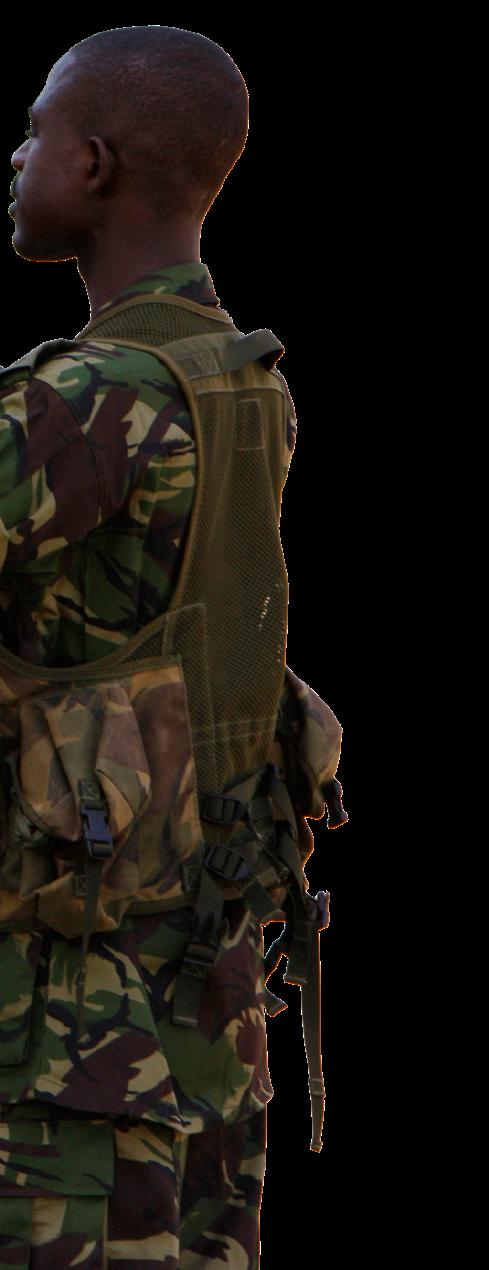
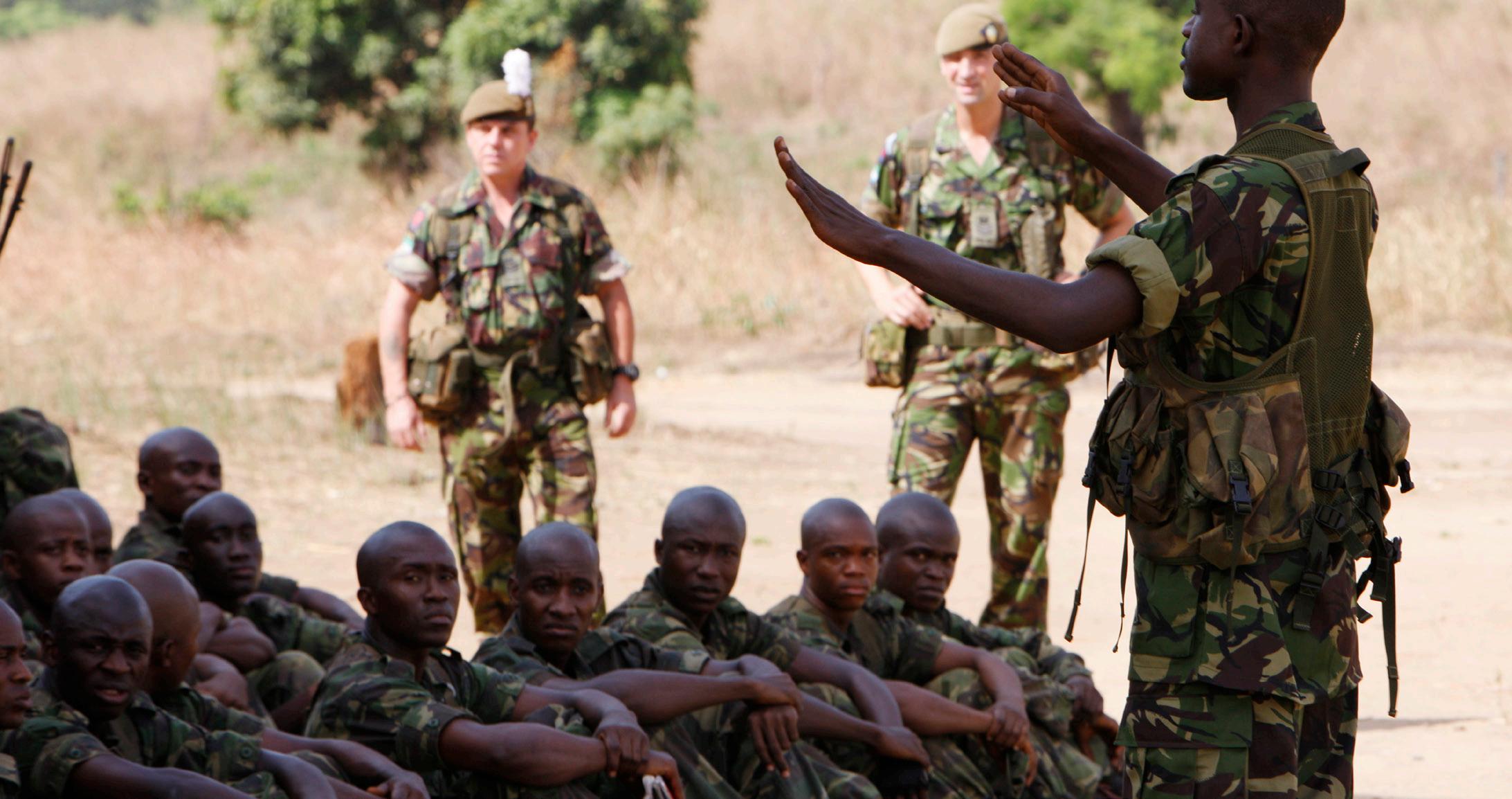
The post-war RSLAF initially focused on institutional redevelopment and border security, but the force also hoped to deploy troops on UN peacekeeping operations.8 Consequently, post-war reforms maintained the previous focus on light forces, developing the RSLAF into an infantry army structured around three light role infantry brigades. This ensured the force remained affordable while facilitating future peacekeeping deployments, and the RSLAF went on to deploy its recce element to Darfur as part of UNAMID [United Nations-African Union Mission in Darfur] in 2009 and later provided an infantry battalion to AMISOM [African Union Mission in Somalia]. The inherent flexibility of the RSLAF’s light infantry structure has also proved its worth in domestic contingency operations. During the West African Ebola outbreak and the COVID-19 pandemic, for example, RSLAF units carried out public order duties, provided infection control cordons, couriered medical samples and provided working parties to bury the dead, alongside more conventional border security tasks. Thus, light forces providing light infantry training were ideally suited to the operational and political context in Sierra Leone, and were consequently at the heart of both initial stabilisation efforts and the subsequent institutional development of the partner force.
Compared to Sierra Leone, the relationship between light forces and post-conflict security assistance in Kosovo is rather more complicated. In 1999, NATO peacekeeping troops entered Kosovo following an air campaign intended
8On the UK’s commitment to Security Sector Reform in Sierra Leone, see Paul Jackson & Peter Albrecht, Reconstructing Security after Conflict: Security Sector Reform in Sierra Leone (Basingstoke: Palgrave 2011).
9For a background to the Kosovo War, see Robert Muharremi & Alisa Ramadani, Transforming a Guerilla into a Regular Army: From the Kosovo Liberation Army to the Army of the Republic of Kosovo (Cham: Palgrave/Springer, 2024), pp. 1-64.
10Alpaslan Özerdem, ‘From a “Terrorist” Group to a “Civil Defence” Corps: The “Transformation” of the Kosovo Liberation Army’, International Peacekeeping, 10:3, (2003) pp. 79-101.
11Ibid. p. 93.
to pressure Serbian Yugoslav forces to withdraw. The intervention marked the culmination of the Kosovo War, which had seen Kosovo Liberation Army (KLA) guerrillas fight to expel Serb troops in the face of widespread human rights abuses and ethnic cleansing. Although the arrival of NATO’s Kosovo Force (KFOR) signalled the end of the fighting, it did not resolve underlying geopolitical issues. Kosovo technically remained part of Serbia, and Serbs continued to view it as an integral part of their homeland despite Kosovo’s new UN administration. Meanwhile, Kosovo’s ethnic Albanian majority wanted an independent Kosovan state, or eventual incorporation into neighbouring Albania. KFOR thus found itself treading a delicate line to deter further Serb aggression against Kosovo while simultaneously safeguarding minority Serb enclaves in the north against Kosovar Albanian reprisals.9
This tension was reflected in NATO’s initial approach to security assistance in Kosovo. KFOR’s international mandate precluded the presence of any other security force in Kosovo, and neither Serbia nor Russia would countenance the creation of a Kosovan army. Yet, the KLA had just evicted the Serbian military from Kosovo by force, and could potentially turn its insurgency skills on NATO should its political ambitions be quashed. The resulting plan was a fudge intended to meet the letter of international agreements while placating the KLA. The KLA would disarm and demobilise, and KFOR would help to establish a new Kosovo Protection Corps (KPC) to be recruited primarily from former KLA fighters.10 Importantly, the KPC was to be a civilian disaster response agency with responsibility for civil contingencies, such as search and rescue and post-conflict reconstruction. However, while the KPC was an unarmed civilian organisation, it would be structured and uniformed along military lines with a rank structure and chain-of-command. Moreover, the Albanian word for ‘protection’ also means ‘defence’, allowing former KLA fighters to view the KPC as a proto-army while maintaining its civilian status internationally.11
KFOR became responsible for establishing the KPC, with

Athletic assistance: A member of the Kosovo Protection Corps is guided around an obstacle course by a British PTI serving as part of KFOR in 2001.
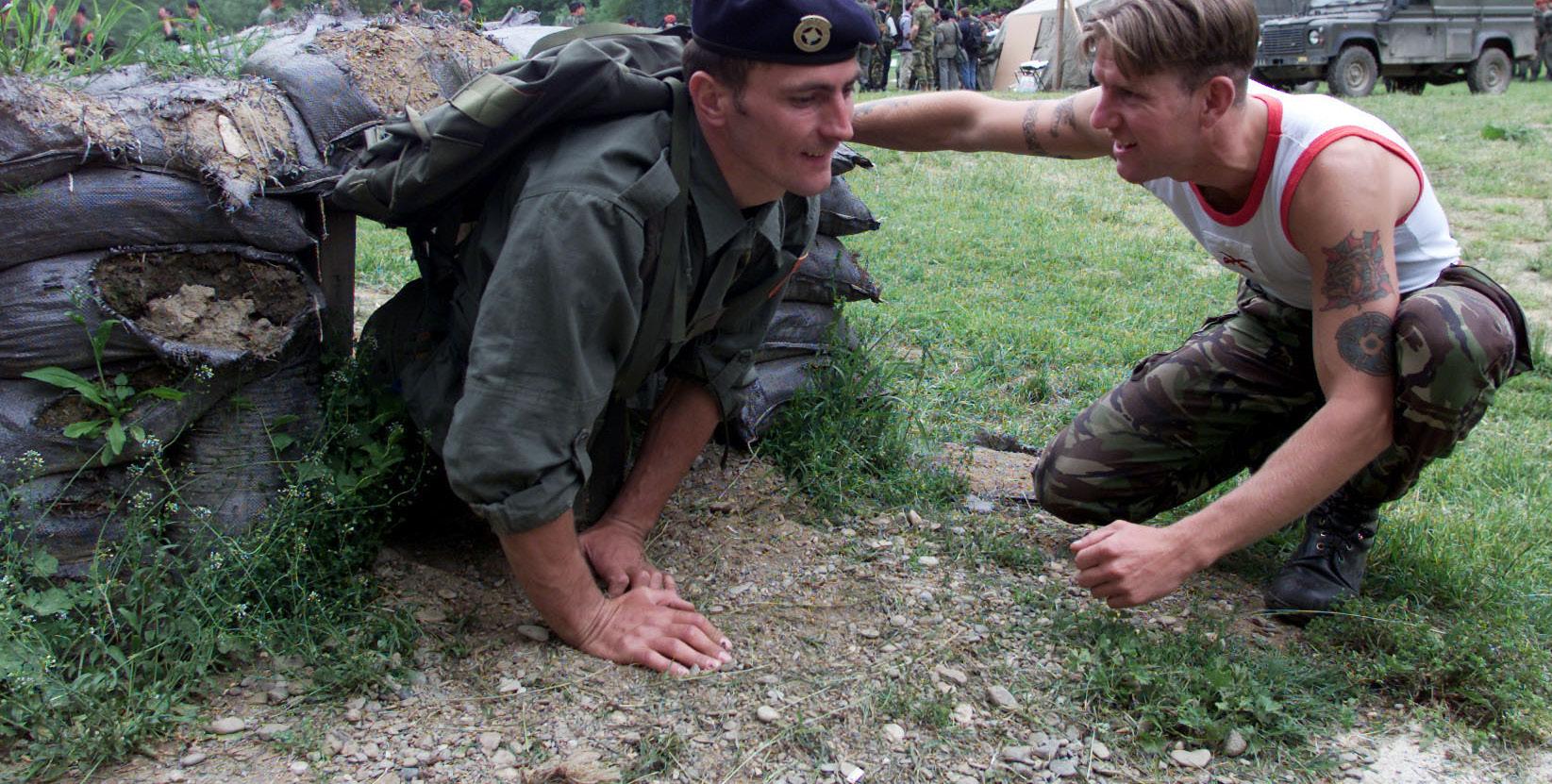
each troop-contributing country training new KPC units stationed in their area of operations. However, the political context surrounding the establishment of the KPC directly shaped the training KFOR could provide. Thus, while KFOR contained a significant amount of heavy armoured units, KPC training focused on elementary skills at the intersection of basic military training and civilian response work. This included land navigation, mountain search-and-rescue, demining and basic radio communications, typically in a dismounted pseudo-infantry context. Even then, the KPC evidently wanted much more robust military training than KFOR could provide. As the commanding officer of the British Training and Advisory Group in 2001 remarked: “The Kosovo Protection Corps to a man aspire to become the army of Kosovo in the future, something that is not allowed for under the agreement which they currently abide by... All we can say to them is ‘we hear you but we are here to help you become a civil emergency response organisation’ – that is all we are able to offer.”12
“”
The Kosovo Security Force has relied on bilateral training for capability development... UK Security Force Assistance to Kosovo has focused on institutional development and light infantry training.
However, following Kosovo’s unilateral declaration of independence in 2008, the KPC was replaced by a military Kosovo Security Force (KSF). Nonetheless, the KSF was only equipped with small arms and light weapons, and its role remained limited to placate international opposition. Consequently, the KSF adopted a light infantry structure comprised of one infantry brigade, one support brigade and one training brigade.13 In principle, KFOR was tasked with demobilising the KPC and standing up the KSF in accordance with NATO standards. Yet, a number of NATO member states refused to recognise Kosovo’s independence, creating a dilemma for KFOR which found itself responsible for training an army whose legitimacy it could not acknowledge. As a result, KFOR initially focused on civilian oversight mechanisms and administrative processes, effectively obliging the KPC to disband itself. Although KFOR did subsequently provide training to the new KSF, this largely continued existing KPC training programmes as the least controversial activities.14 Kosovo was also prevented from joining NATO’s Partnership for Peace, though the KSF was given access to some NATO exercises.
Consequently, the KSF has relied instead on bilateral training for capability development, primarily with the US, Italy, Turkey, Albania and the UK. The Iowa National Guard in particular has provided a sustained programme of short-term training teams and joint exercises under the US National Guard State Partnership Programme, including officer and non-commissioned officer development, tactical skills and medical training. UK SFA to Kosovo has likewise focused on institutional development and light infantry training. British Army short-term training teams have developed the KSF’s physical training instructor cadre,15 while KSF teams have participated in Cambrian Patrol and exercised in the Falklands alongside the roulement infantry company.16 More recently, the KSF has also provided infantry instructors to help train Ukrainian troops in the UK as part of Operation Interflex.
This emphasis on light forces has persisted, even after Kosovo
began to ‘normalise’ the KSF into a conventional military in 2019. This initiated a ten-year plan to NATO-interoperability, alongside a desire to acquire wider capabilities and equipment including an air wing.17 To date, the KSF has started to convert its existing infantry battalions into regiments using regular NATO exercises in Kosovo to validate training.18 However, this transformation programme is constrained by the KSF’s limited budget and ongoing dependence on external assistance. For example, the KSF’s recent acquisition of protected mobility and support vehicles has depended in part on substantial donations in kind from Turkey, the US and Germany. Moreover, both NATO and the EU have opposed Kosovo’s decision to normalise the KSF, and have periodically suspended military assistance during periods of political tension. In 2023, the KSF was ejected from a NATO exercise in Kosovo after the government unilaterally asserted greater control over Serb enclaves, resulting in riots that injured a number of KFOR peacekeepers. Consequently, the KSF remains a predominantly light force despite growing cross-border threats from Serbia, in no small part as a result of the wider political context shaping security assistance to Kosovo.
To specialise or not to specialise? Light forces and the future of SFA
In both Sierra Leone and Kosovo, SFA centred on the development of light capabilities in partner forces primarily structured around infantry units. Yet, most Western armed forces have traditionally viewed security assistance as a general task that any kind of military unit might be expected to undertake. The US military is a notable outlier in this regard, having long possessed units with specialised skills in partnering indigenous forces, such as US Army Special Forces (the ‘Green Berets’). However, the US Army’s decision to create a series of dedicated Security Force Assistance Brigades in 2017
12British Army, ‘Soldier: Magazine of the British Army’, 57:7, July 2001, pp. 17-18, soldier.army.mod.uk/media/mtgctuc3/july-2001-vol-57-no7.pdf
13Muharremi & Ramadani, Transforming a Guerilla into a Regular Army, pp. 65-78.
14See for example, Lawrence Marzouk, ‘NATO Halts Cooperation with Kosovo Security Force’, Balkan Insight, 8 March 2010, balkaninsight.com/2010/03/08/nato-haltscooperation-with-kosovo-security-force
15British Embassy Pristina, ‘British Army supports development of the Kosovo Security Force (KSF)’, 27 July 2016, gov.uk/government/news/british-army-supports-development-ofthe-kosovo-security-force-ksf
16‘The KSF team won the Bronze Medal in the “Cambrian Patrol” patrol competition’, Telegrafi, 2019, telegrafi.com/en/ekipi-fsk-se-fitoi-medaljen-e-bronzte-ne-garen-epatrullimit-cambrian-patrol; ‘The Assembly decides to send the KSF contingent to the Falkland Islands6’, Telegrafi, 2023, telegrafi.com/en/kuvendi-vendos-per-dergimin-ekontingjentit-te-fsk-se-ne-ishujt-falkland
17‘Maqedonci në SHBA: Kosova do të ketë helikopterë “Black Hawk”’, Telegrafi, February 2025, telegrafi.com/maqedonci-ne-shba-kosova-te-kete-helikoptere-black-hawk
18Altina Marmullaku, ‘FSK-ja në kuadër të përgatitjeve për “Defender Europe 2023”, përfundon ushtrimin “Steel Alpha 2023”’, 8 May 2023, albanianpost.com/fsk-ja-nekuader-te-pergatitjeve-per-defender-europe-2023-perfundon-ushtrimin-steel-alpha-2023
19U.S. Army Public Affairs, ‘Army creates Security Force Assistance Brigade and Military Advisor Training Academy at Fort Benning’, 16 February 2017, army.mil/ article/182646/army_creates_security_force_assistance_brigade_and_military_advisor_ training_academy_at_fort_benning

Light forces have often been central to the provision of security assistance to partner armies overseas. To a significant extent, this close association between light (and especially infantry) units and SFA is a product of their relative flexibility and comparative ease of deployment on expeditionary operations, as well as their ability to operate in austere environments with a limited logistic footprint.
prompted a wider interest in the establishment of specialised assistance units among NATO allies.19
In the UK, the British Army initially established the Specialised Infantry Group to retain hard-won experience of military mentoring acquired in Afghanistan and Iraq. This subsequently became the foundation of the British Army’s new Ranger Regiment, modelled on the US Army Special Forces and forming the core of a new Army Special Operations Brigade.20 The British Army also converted an existing infantry brigade into a Security Force Assistance Brigade, creating 11th (SFA) Brigade. In so doing, the UK came to mirror the US model of engagement structured
20Captain Ben Tomlinson, ‘Assessing the Ongoing Development of the Ranger Regiment’, CHACR In-Depth Briefing No. 68, November 2023, chacr.org.uk/2023/11/28/rangerregiment
21British Army, ‘Future Soldier Guide’, p. 17.
22Colonel Tom Bilo, ‘BELSOF: Quo Vadis?’, Kingston Insights, 1:6, July 201, thekcis.org/ publications/insights/insight-16
23Italian Army, ‘Seminario sul potenziamento della capacità SFA dell’Esercito’, 7 December 2023, esercito.difesa.it/comunicazione/Pagine/Seminario-sul-potenziamento-dellacapacit%C3%A0-SFA-dell’Esercito.aspx
24See for example, NATO Security Force Assistance Centre of Excellence, ‘SFA Operator Profile: Analysis Report’, NATO SFA CoE, 2021, nsfacoe.org/wp-content/ uploads/2022/04/SFA-OPERATOR-PROFILE.pdf
25British Army, ‘Solider: Magazine of the British Army’, December 2024, p. 15. soldier. army.mod.uk/media/dkohqog4/soldier-dec-2024.pdf
around Special Operations ‘accompany’ and conventional ‘SFA’ units.21 Simultaneously, the Belgian Army began to convert its existing light Para-Commando brigade into a Special Operations Regiment, with military assistance articulated as a core mission alongside direct action and special reconnaissance.22 Italy too has shown interest in developing specialised forces for security assistance. The Italian Army has established the NATO Centre of Excellence for SFA, co-located with its Infantry School, and is the penholder for NATO SFA doctrine. The Italian Army has also announced that it will establish a national SFA centre and has oriented an existing brigade to SFA tasks.23
At face value, these developments appear to cement the relationship between light expeditionary infantry forces and SFA, while simultaneously emphasising the importance of specialist training and dedicated force structures. Indeed, successful assistance activities are often considered to depend upon a raft of cross-cultural, linguistic and interpersonal ‘soft’ skills, alongside high levels of proficiency in core soldiering skills.24 Yet, the necessity of specialisation to conduct effective military assistance is not universally accepted, and some NATO allies have never adopted dedicated SFA formations despite significant experience of operating alongside partner forces. Moreover, the British Army has recently re-purposed its single Security Force Assistance Brigade, jettisoning its dedicated SFA role, raising questions about both the particularity of SFA as an activity and the supposed utility of light forces for such tasks.25
Belgium, for instance, has made extensive use of its Special Forces and Special Operations Regiment for SFA missions in recent years, in part owing to their high readiness and comparative ease of deployment. In contrast, the high training burden required to maintain competencies on armoured vehicles creates significant opportunity costs for mounted units deploying on expeditionary training tasks. Yet, senior Belgian officers continue to view SFA as a task that could be assigned to heavy units depending on context and requirements, and Belgian armoured units were repeatedly deployed in assistance roles during sustained operations in Afghanistan.26 In fact, the French Army has concluded that ordinary line units can actually offer some advantages for SFA, for precisely this reason. While specialist partnering skills can be taught to some degree during pre-deployment training, conventional forces can offer uniquely deep expertise in their respective areas of functional specialism – such as artillery, logistics or armoured warfare.27 Accordingly, British armoured units have been pivotal to training their Ukrainian counterparts on Challenger 2 main battle tanks, while efforts to develop mounted capabilities in Afghanistan likewise relied on advisers from armoured cavalry formations.
assistance. However, the particular utility of light troops for SFA should not be overstated, and heavy forces are likely to be far more significant in assistance activities focusing on the development of conventional warfare capabilities at scale. As a result, SFA should not be seen as a ‘one-weight-fits-all’ activity, and so changes to British Army force structures could have significant implications for the potential scope and utility of future UK assistance activities.
Assistance should not
be seen as a
‘one-weight-fitsall’ activity, and so changes to British Army force structures could have significant implications for the potential scope and utility of future UK
Consequently, assistance missions that privilege the development of conventional warfighting capabilities will likely depend on expertise from heavier armoured units far more than has typically been the case during past stabilisation interventions. Moreover, while specialised advisory units have often been built around light infantry organisations, this is not always the case. Indeed, US Army Security Force Assistance Brigades include combat support and service support elements, such as artillery, engineer, medical and logistic troops, precisely because they are seen as a vehicle for developing partner force capabilities in multidomain operations and combined arms warfare. Some US Security Force Assistance Brigades can also advise partner force armoured units in skills from manoeuvre to maintenance – especially when they operate US-made armoured vehicles.28 Hence, the utility of both light forces and specialised advisory units will significantly depend on the extent to which their functional expertise matches the contextual requirements of future assistance missions, rather than on any supposedly inherent special qualities for SFA.
assistance activities.
Importantly, the extent to which British light forces can meaningfully contribute to European security through cooperation with continental NATO allies will significantly depend on the lessons those nations themselves draw about future capabilities. Although the implications of Ukraine on the future character of conflict remain contested, a number of European armed forces continue to place significant stock in heavy armoured forces.29 Given this, cooperation and training activities conducted by British light forces seem unlikely to carry much sway with NATO allies who have decided that their future is armoured. Yet, British light troops may equally struggle to gain traction with allies whose geography lends itself more naturally to the employment of light troops, such as in the High North, given the climatic specialisation required to operate effectively in such areas. Conversely, the US pivot to Asia may create opportunities for UK SFA elsewhere that light forces are better placed to meet. In particular, there is a danger that the withdrawal of US assistance along Europe’s periphery will create a vacuum that rival states step in to fill – with attendant negative consequences for both regional and European security. In the Sahel, for example, Russian military advisers have increasingly replaced Western security assistance, yet regional insurgencies continue unabated and have now begun to threaten a number of littoral West African states.30 In such situations, the British Army’s light forces could be usefully employed to counter the influence of geopolitical rivals and help stabilise friendly states through the provision of SFA – as past experience in Sierra Leone and Kosovo attests.
This research was supported by the British Academy under grant number SRG23\230634.
Whether as part of a specialised advisory unit or not, light forces have often been central to the provision of security assistance to partner armies overseas. To a significant extent, this close association between light (and especially infantry) units and SFA is a product of their relative flexibility and comparative ease of deployment on expeditionary operations, as well as their ability to operate in austere environments with a limited logistic footprint. Moreover, while elementary soldiering skills are not the sole preserve of light infantry units, recent stabilisation and counter-insurgency interventions have tended to privilege the development of basic dismounted infantry capabilities in partner forces. It is no surprise, therefore, that light infantry units have often formed the core of specialised units dedicated to the provision of military
26Ivor Wiltenburg & Vibeke Gootzen, ‘Military Adaptation to Combat Mentoring: Belgium’s Operational Mentoring and Liaison Team experience’, Defense & Security Analysis, 40:1 (2024), p. 9; Interview with Lieutenant General Vincent Descheemaeker, Assistant Chief of Staff Operations and Training, Belgian Armed Forces, conducted 28 June 2024.
27Interview with Colonel Grégoire Madelin, Commander of the French Army’s Land Centre for Partnered Military Operations, conducted 25 June 2024.
28US Security Force Assistance Command, ‘Security Force Assistance Command Factbook 2025’, 13 February 2025, p. 13, https://api.army.mil/e2/c/ downloads/2025/02/13/e2a03007/2025-sfac-factbook.pdf
29Peter Suciu, ‘Poland Is Becoming NATO’s Tank Powerhouse’, The National Interest, 6 November 2024, nationalinterest.org/blog/buzz/poland-becoming-natos-tankpowerhouse-213593; Dylan Malyasov, ‘Poland to buy more K2 tanks in $6.2B deal’, Defence Blog, 9 March 2025, defence-blog.com/poland-to-buy-more-k2-tanks-in-6-2b-deal
30Alex Neads, ‘The Role of Security Force Assistance in a Competitive World’, CHACR In-Depth Briefing 84, September 2024, chacr.org.uk/wp-content/uploads/2024/09/ IDB-81-Security-Force-Assistance-.pdf
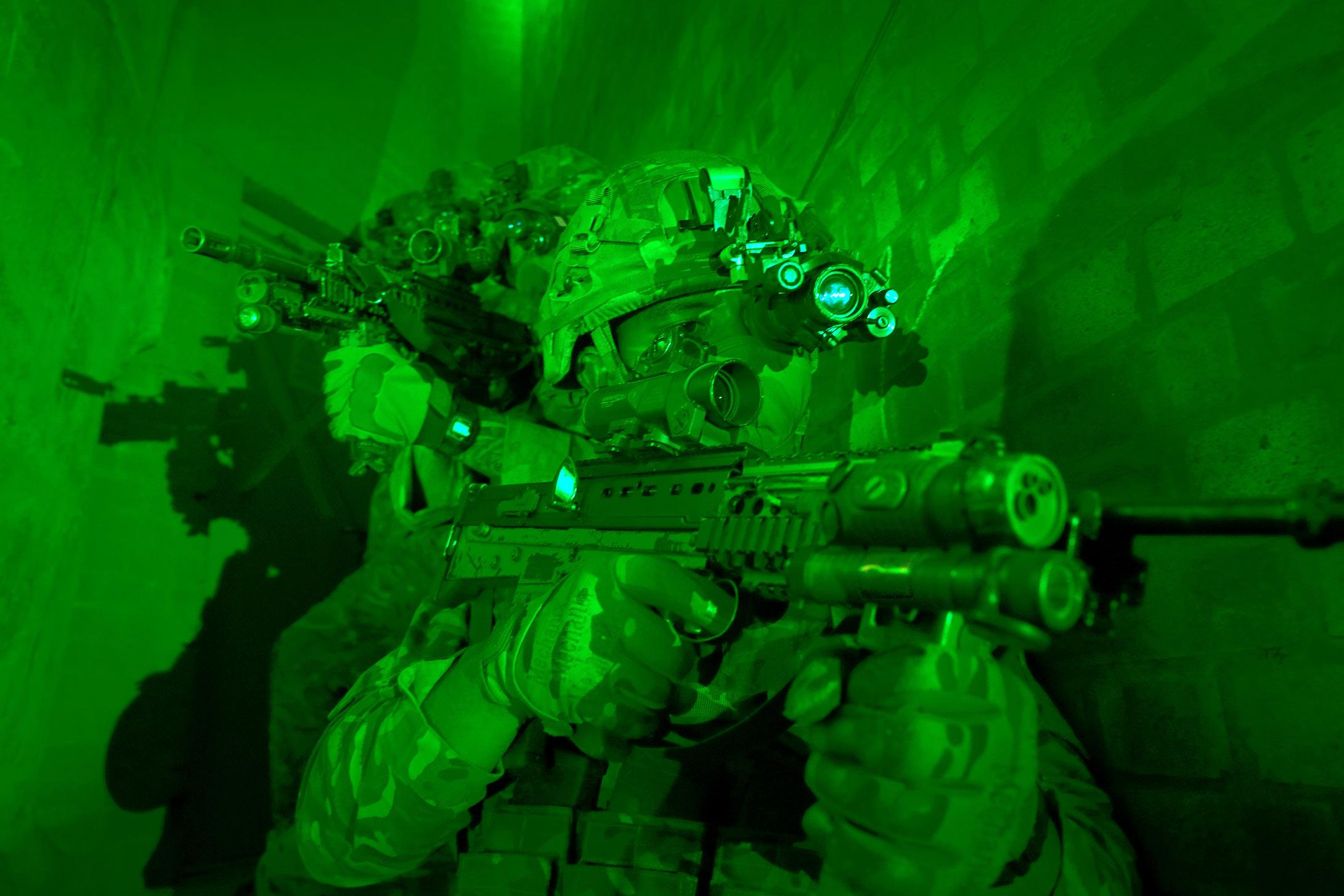
Warfare has traditionally been defined in the domains of land, sea and air. However, beneath the surface lies a fourth domain that is often overlooked: the subterranean battlefield. Tunnel warfare, the practice of conducting military operations underground, has a history as old as warfare itself. From ancient sappers burrowing beneath castle walls to insurgents digging ‘rat holes’ to evade modern surveillance, underground tactics have continually evolved. Now, in an era of drone saturation and all-seeing intelligence, surveillance, target acquisition and reconnaissance, tunnel networks have reemerged as a powerful asymmetric tool, exemplified by Hamas’ sprawling ‘metro’ beneath Gaza and Hezbollah’s fortified tunnel systems in Lebanon. This article examines the development of tunnel warfare throughout history and analyses what its latest forms mean for NATO forces operating in today’s urban war zones.
As Paul Springer notes in his excellent History of Tunnelling,
1fpri.org/article/2015/04/fighting-under-the-earth-the-history-of-tunneling-in-warfare
2mwi.westpoint.edu/north-korean-nuclear-button-cools-threat-underground-lingers
3washingtonpost.com/news/worldviews/wp/2017/04/14/the-islamic-state-has-tunnelseverywhere-its-making-them-much-harder-to-defeat
subterranean warfare has existed for thousands of years. Throughout history, tunnel warfare has provided armies with a way to bypass or weaken stronger defences, dating back to ancient Assyrian sappers and medieval castle sieges. Techniques such as sapping (digging beneath walls and collapsing them by setting fire to timber supports) were met with equally inventive countermeasures, including listening posts and counter-tunnels, leading to fierce, close-quarters combat underground. The introduction of explosives in the 19th and 20th centuries transformed the practice, reaching a destructive scale during the First World War, particularly with mining operations beneath enemy trenches. By the time of the Second World War, both offensive and defensive tunnel systems played a vital role in campaigns ranging from the Maginot Line to Iwo Jima.1 During the Cold War, North Korea developed infiltration tunnels under the demilitarised zone, demonstrating how tunnels became an integral part of national military strategy.2
In the post-World War era, tunnels became a hallmark of guerrilla warfare, especially for groups facing superior firepower. The Viet Cong’s Cu Chi tunnels housed entire underground communities and enabled ambushes and evasions that confounded US forces. This pattern continued with Al Qaeda in Tora Bora and resurged in the 2010s with non-state actors like ISIS, which weaponised urban tunnel networks to manoeuvre unseen, launch ambushes and even incorporate drone reconnaissance into subterranean operations.3 From Syria to Mali, tunnel warfare has allowed insurgents to negate
conventional militaries’ surveillance and strike capabilities, turning the underground into both sanctuary and weapon. These conflicts reveal a consistent strategic theme: tunnelling offers asymmetric forces a means to ‘match the overmatch’ of more technologically advanced enemies.4
Nowhere has tunnel warfare been developed to such an extent in modern times as in Gaza. Hamas has constructed a vast underground network across the Gaza Strip, transforming tunnels from a simple tactic to a core part of its military strategy.5 Often called the ‘Gaza metro’, this network is believed to span hundreds of kilometres. Hamas’ leaders themselves claimed in 2021 to have more than 500 kilometres of tunnels – about half the length of New York City’s subway system. Israeli intelligence estimates prior to the 2023 war similarly suggested a total of between 350 and 450 miles of tunnels and bunkers.6 These passages wind beneath cities, refugee camps and border zones, reaching depths of up to 200 feet in some areas. Dozens of shafts lead from houses, mosques, schools or even hospitals down into Hamas’ underground routes. Essentially, Hamas has built an entire parallel military infrastructure beneath Gaza’s densely populated surface, using civilians above as cover against attack.
Hamas’ tunnel network serves various operational purposes. Firstly, it provides a secure sanctuary for command and control. Key Hamas commanders can hide in bunkers connected by tunnels, communicating through buried wires or runners, largely protected from Israel’s air strikes. Israeli forces have uncovered elaborate command posts and arms depots embedded deep beneath Gaza’s urban landscape.7
bombardment on the surface, then emerge behind Israeli lines or in rear areas to ambush troops; a deadly game of cat and mouse made possible by underground mobility.8
Thirdly, the tunnels act as storage and logistics centres.9 Weapons caches, ammunition stores, workshops for assembling rockets and field hospitals have all been discovered underground. This minimises Hamas’ footprint above ground and protects vital supplies from air strikes.

“”
Nowhere has tunnel warfare been developed to such an extent in modern times as in Gaza. Hamas has constructed a vast underground network across the Gaza Strip, transforming tunnels from a simple tactic to a core part of its military strategy.
Secondly, the tunnels offer protected manoeuvre space for Hamas fighters. They serve as covert transit routes, allowing militants to redeploy across different neighbourhoods unseen. These tunnels enable Hamas units to withstand intense
4armytimes.com/news/your-army/2019/02/26/the-subterranean-battlefield-warfare-isgoing-underground-into-dark-tight-spaces
5reuters.com/graphics/ISRAEL-PALESTINIANS/GAZA-TUNNELS/gkvldmzorvb
6mwi.westpoint.edu/israels-new-approach-to-tunnels-a-paradigm-shift-in-underground-warfare
7jpost.com/israel-news/defense-news/article-856880
8nytimes.com/2024/07/13/world/middleeast/hamas-gaza-israel-fighting.html 9washingtonpost.com/national-security/2024/10/05/hamas-tunnels-weapons-gaza-waroctober-7-attacks
10haaretz.com/2011-10-11/ty-article/timeline-1-940-days-from-gilad-shalits-abductionto-his-release/0000017f-e0cf-d804-ad7f-f1ff8f6e0000
11theguardian.com/world/2014/aug/02/tunnels-hamas-israel-struggle-gaza-war
12mwi.westpoint.edu/israels-new-approach-to-tunnels-a-paradigm-shift-in-undergroundwarfare
13reuters.com/graphics/ISRAEL-PALESTINIANS/GAZA-TUNNELS/gkvldmzorvb 14fpri.org/article/2015/04/fighting-under-the-earth-the-history-of-tunneling-in-warfare
Lastly, Hamas has employed tunnels for offensive infiltration into enemy territory. Before Israel built a deep border barrier, Hamas often dug outward towards Israeli land. These crossborder tunnels aimed to carry out surprise raids, facilitate the kidnapping of Israeli soldiers or civilians, and generally bypass the formidable border fence. In 2006, for instance, Hamas fighters tunnelled into Israel near Kerem Shalom and seized Israel Defense Forces (IDF) soldier Gilad Shalit.10 During the 2014 Gaza conflict, multiple Hamas assault teams attempted incursions through concealed tunnel exits on the Israeli side of the border.11
The scale and sophistication of Hamas’ tunnelling in Gaza is unmatched by other non-state actors. Israeli assessments, supported by captured documents, reveal Hamas has dedicated significant resources to this underground city. It reportedly took nearly a year to dig just one kilometre of tunnel, costing around $275,000 per kilometre.12 Considering materials, equipment and manpower provided by teams working continuously, Hamas may have spent over $1 billion on its tunnel programme. Despite the blockade and limited resources, this commitment highlights how vital tunnels are to Hamas’ strategy of warfare. The network demonstrates impressive engineering, with many tunnels lined with concrete, wired for electricity, equipped with ventilation pipes, and some wide enough to accommodate motorcycles or small vehicles.
In late 2023, Israeli forces uncovered a particularly large tunnel near Gaza’s northern Erez crossing. The tunnel was three metres in diameter and four kilometres long, reinforced with iron, and featuring a 50-metre-deep underground ramp, built by Hamas to quickly move fighters and potentially vehicles to the border area. This ‘super-tunnel’ served as an underground highway for launching raids. Hamas’ propaganda later released footage of its 7th October attackers emerging from a tunnel within Israel’s border defences. This was a striking demonstration that, after years of planning, the tunnels had become a vital part of Hamas’ offensive capabilities.13
The IDF probably have more experience fighting in tunnels than any other modern military, yet Hamas’ network has proven to be an incredibly difficult target. In the 2014 conflict, Israeli units had to go sector by sector, locating and physically entering Hamas tunnels to plant explosives, since air strikes alone could not collapse the deeper, reinforced passages.14 This exposed the soldiers to booby traps and ambushes in
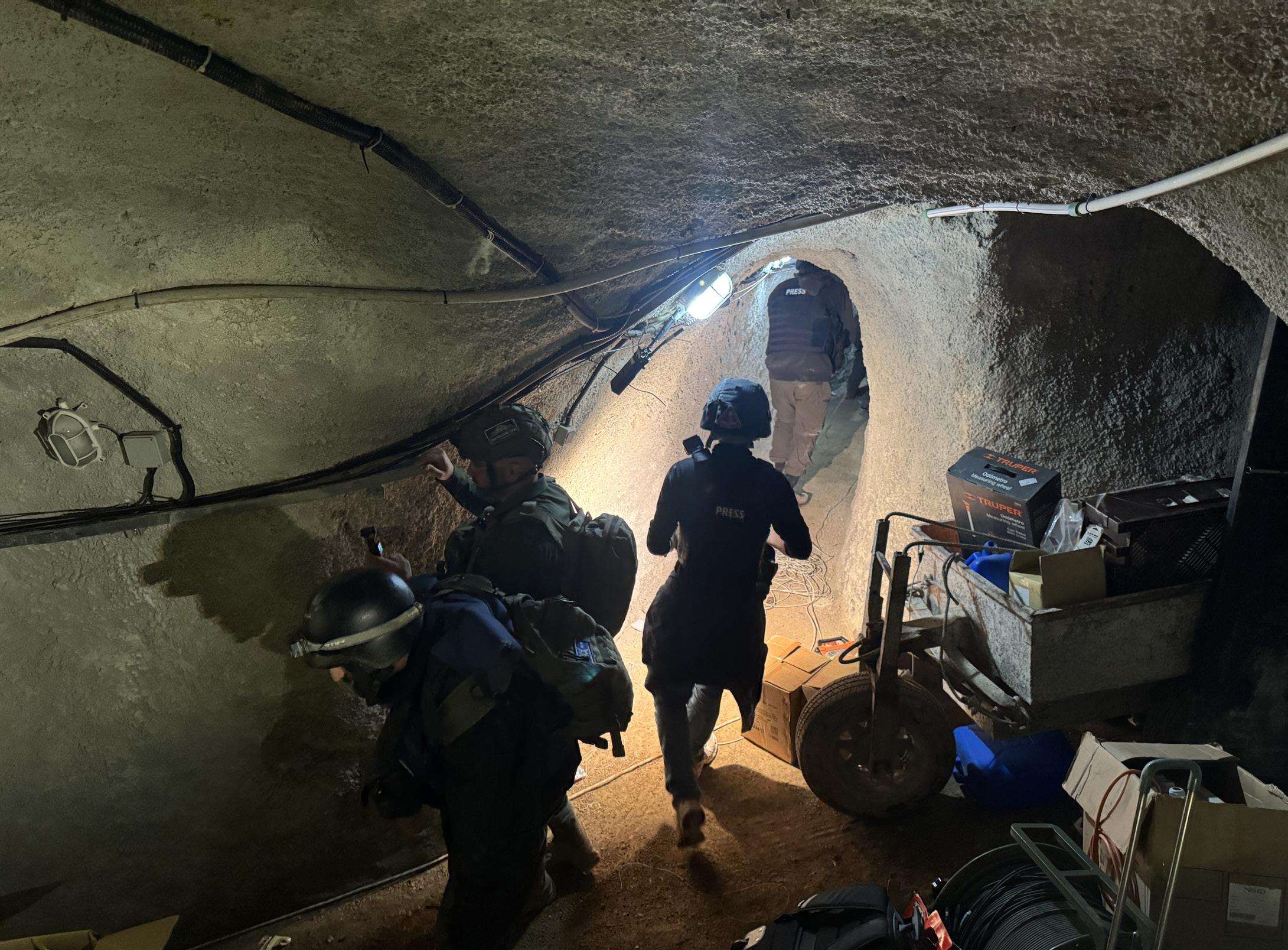
cramped conditions. On one occasion, Israeli sappers clearing a tunnel were attacked by Hamas fighters who emerged from a concealed hatch behind them, illustrating the defenders’ advantage underground.
By 2023, the IDF had established specialised tunnel-warfare formations (notably the special forces Yahalom combat engineering unit and Oketz military working dog unit with tunnel-trained dogs) and stocked niche equipment like oxygen-supplying gear, mapping robots and handheld groundpenetrating radar. Even so, Israeli commanders admitted that no army had faced a tunnel system as extensive as Gaza’s and initial operations met unexpected hurdles. Hamas had spent over 15 years transforming Gaza’s subsurface into a fortress, and it showed.15 Even today, 21 months into the Gaza War at the time of writing, the IDF has not been able to destroy the whole network.
Israeli forces in late 2023 quickly found that destroying the hundreds of kilometres of tunnels would require far more explosives and time than anticipated. Engineers experimented with novel methods, such as pumping liquid explosives or flooding tunnels, but these techniques were labour-intensive and could only neutralise limited segments at a time. To blow
15mwi.westpoint.edu/israels-new-approach-to-tunnels-a-paradigm-shift-in-undergroundwarfare
16Ibid.
17Analysis
up just one kilometre of tunnel, roughly 15 metric tonnes of TNT had to be placed internally. Given such daunting logistics, the IDF prioritised only the most threatening tunnels (such as those near sensitive sites or enabling enemy manoeuvre) for destruction. The rest would simply be sealed or monitored.16
Hamas’ tunnel strategy has posed Israel, a high-tech conventional military, with a nightmare scenario: a defensive web that neutralises many of Israel’s advantages in intelligence and firepower, forcing brutal close combat on Hamas’ terms. For other militaries observing, it has become a case study in the potential asymmetry of subterranean warfare.
While Hamas built its tunnels under siege conditions in Gaza’s sands, the Lebanese militia Hezbollah has, in parallel, constructed its own underground network in the rocky hills of south Lebanon. Hezbollah’s tunnels are less visible to the world, but the 2024 Israel-Lebanon conflict revealed an extensive system that has expanded since the 1980s. Unlike Hamas’ metro under densely populated city blocks, Hezbollah’s tunnels burrow through mountains and bedrock, a difference with significant tactical implications.
Hezbollah probably started digging tunnels in the mid-1980s, when it was fighting a guerrilla war against Israeli occupation of southern Lebanon. Even during Israel’s 18-year occupation (1982–2000), Hezbollah fighters used small bunkers and short tunnels to hide from Israeli air strikes and to infiltrate frontline positions. After Israel’s withdrawal in 2000, and especially after the 2006 Lebanon War, Hezbollah significantly expanded its underground activities. With generous Iranian funding
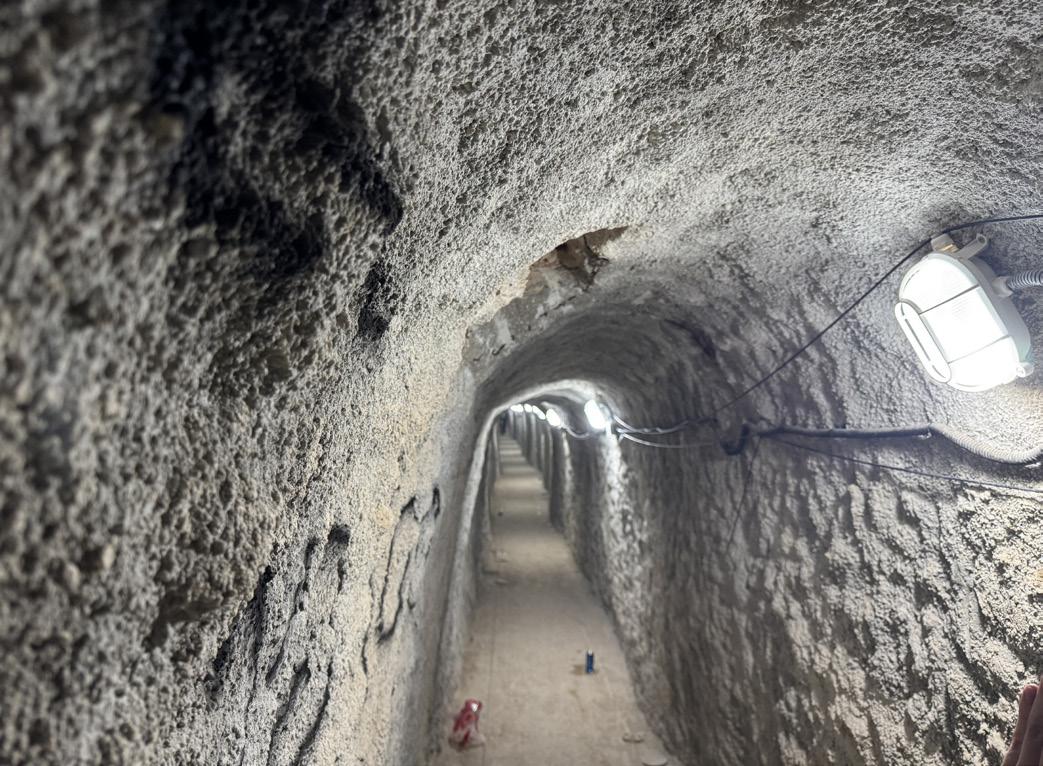

and reportedly technical help from Iran and North Korea,17 Hezbollah has spent the last two decades tunnelling with power tools and explosives into Lebanon’s tough geology. The network now extends for hundreds of kilometres across south Lebanon. Some individual tunnels are reportedly up to 45 kilometres long, connecting key Hezbollah strongholds and arms depots from the Israeli border all the way to the Bekaa Valley and even towards Beirut. If accurate, this means a fighter in a tunnel near the border could travel underground for dozens of miles and exit near the Syrian frontier, or vice versa; an incredible level of mobility hidden from drones above.18
During the 2006 war, Hezbollah’s initial defensive success was attributed in part to its extensive use of bunkers and interconnected firing positions. In late 2024, I visited one of these tunnels under the village of Maroun Al Ras. It was two kilometres long, lined with spray concrete and complete with an operations centre, arms stockpiles, living quarters and even underground medical facilities, all equipped with ventilation, power and built-in fire suppression systems.
These positions were concealed beneath villages or within forested nature reserves. They enabled Hezbollah to endure extensive Israeli bombardments and still launch volleys of rockets and anti-tank ambushes. Israeli troops advancing into south Lebanon in 2006 often discovered that Hezbollah fighters could emerge from hidden tunnel exits or camouflaged bunkers, fire and then disappear, like the tactics used by the Viet Cong in Vietnam. Indeed, some Hezbollah units held out for weeks in border villages by utilising underground fall-back positions after each skirmish.
Tunnel vision (clockwise from far left): A junction in a Hezbollah tunnel, which highlights the structure’s size and the complexity of its cabling; a tunnel lined with spray concrete and fitted with wired-in lighting; and a fully-tiled rest area within a Hezbollah tunnel (November 2024). Pictures: Andrew Fox
Having observed this effect, Israel became determined to identify any Hezbollah tunnels crossing the border that could facilitate a larger surprise attack. In late 2018, the IDF launched Operation Northern Shield and systematically uncovered six major cross-border tunnels that Hezbollah had dug into Israel. These were not small crawlspaces: they were attack tunnels designed to allow thousands of Hezbollah fighters to flow into Israel in an invasion scenario. The tunnels are straight, with few turns that would be expected in a fighting tunnel to prevent enfilade fire. The exit of the tunnel in Maroun Al Ras was perfectly aligned with a downhill likely axis of assault, via a re-entrant, leading directly to the Israeli hamlet of Avivim.
Hezbollah’s tunnel systems share some functions with Hamas’ but differ in construction and deployment. The hard rock terrain in Lebanon forced Hezbollah to bore slowly with drills and explosives, resulting in fewer but extremely robust tunnels. These tunnels, carved into limestone and granite, can withstand heavy bombing – far more than Hamas’ tunnels in soft sand. Many Hezbollah tunnels are deep inside hillsides or beneath ridges, making them difficult to detect and resilient against bunker-buster munitions. Hezbollah has also incorporated its tunnels into the natural cave systems common in the region.19
Despite surface parallels between Hamas and Hezbollah tunnels, there are significant differences. Geologically, Gaza’s tunnels are dug in soft soil and require extensive concrete reinforcement to prevent collapse, whereas Lebanon’s rocky tunnels are naturally more robust but take much longer to excavate. Strategically, Hamas’ tunnel network beneath Gaza is intertwined with densely populated urban areas and serves as the core of its military strategy, deliberately using civilian cover to drive up civilian casualties when attacked by Israel.20
Hezbollah’s tunnels, on the other hand, although sometimes beneath villages, also extend through open countryside and deep into uninhabited mountains. Hezbollah does use human shields, but not to the same extent as Hamas’ ‘underground human shield’ strategy in Gaza. Additionally, Hamas’ tunnels mainly support operations within the Gaza Strip (plus brief cross-border incursions), whereas Hezbollah’s network is more extensive, connecting different Lebanese regions, and is designed for both deep defence and potential large-scale invasions of enemy territory.
Tunnel warfare today is not confined to purpose-dug militant tunnels. Modern cities themselves sit atop extensive subterranean infrastructure, including sewer systems, utility tunnels, subway lines and deep parking garages, which can become battlefields. The urban underground offers both
18-19mwi.westpoint.edu/israels-campaign-against-hezbollah-and-the-fight-for-southernlebanons-tunnels
20henryjacksonsociety.org/wp-content/uploads/2025/05/HJS-Hamass-Human-ShieldStrategy-in-Gaza-Report-WEB.pdf
risks and opportunities in warfare, and recent conflicts have underscored the need to treat the subsurface as an extension of the urban fight.
Historically, fighting in city sewers and catacombs is not a new phenomenon. During the Battle of Stalingrad (1942), closequarters combat became so fierce that even sewer tunnels turned into battlegrounds, with Red Army and German troops stalking each other beneath the rubble in what soldiers grimly called Rattenkrieg: Rat War.21 Soviet forces used sewers to manoeuvre between districts and launch counterattacks behind German lines.
Similarly, during the Warsaw Uprising of 1944, Polish resistance fighters famously employed the city’s sewer network to move supplies, communicate between isolated pockets and even escape when the uprising faltered.22 These episodes taught early lessons: controlling or at least denying the enemy access to subterranean routes in cities can be crucial, lest defenders reappear in your rear. Urban planners during the Cold War even anticipated this; civil defence plans often included networks of tunnels or shelters that could be repurposed by combatants.23
In recent urban combat, insurgents and terrorists have repeatedly exploited the city’s underground. During the Battle of Mosul (2016–17), ISIS fighters turned every neighbourhood into a two-level threat: above ground, snipers and barricades, and below ground, tunnels and sewers. Iraqi units discovered that entire blocks had interconnected cellars or crude tunnels dug between buildings, allowing ISIS cells to evade street-by-street clearing operations. After advancing through a street, Iraqi soldiers could never be certain the area was fully clear. ISIS militants might emerge from hidden basement tunnels once frontline troops had passed to attack logistics convoys or newly liberated areas. The element of surprise and deception that tunnels provided ISIS was a force multiplier: small teams could strike and then withdraw into ratlines only they knew about. ISIS also incorporated existing sewer lines into their defences. In cities such as Fallujah and Raqqa, underground municipal corridors were used to avoid drones and air strikes, to transport casualties to secret field clinics and to plant improvised explosive devices in routes beneath advancing troops.24
storm drain had to be checked. New tactics emerged, like using explosives to intentionally collapse known tunnel segments (at risk of damaging surface structures) or pumping smoke or gas to flush out fighters, though the latter poses legal and ethical issues in populated areas. Specialised weapons, such as small bunker-buster munitions or fuel-air explosives, were employed against ISIS tunnels when locations could be identified.
Ultimately, however, clearing many tunnels required soldiers or engineers to physically enter them. The psychological and physical toll of this kind of combat is high. Fighting underground means contending with pitch darkness, tight confines and often poor air quality; conditions that can trigger feelings of helplessness in even experienced troops.25
The environment neutralises many traditional advantages: radios may not work, GPS is useless and armoured vehicles clearly cannot follow. A recent US Army review bluntly noted that all the firepower and sensor technology that gives dominance on the surface is largely invalidated once troops go underground. The battle becomes primitive. Troops must depend on flashlights, night-vision equipment (if there is any illumination at all), suppressed weapons to prevent ear damage in echoing tunnels, and old-fashioned courage to venture into the unknown. As in Vietnam decades ago, small-statured, agile soldiers often led the way. Many modern militaries now include training for ‘breaching and clearing’ sewer-like environments as part of their urban warfare exercises, precisely because such scenarios are likely to occur in dense urban combat.
In essence, urban warfare and underground warfare are two sides of the same coin: to dominate a city, you cannot ignore what lies beneath it.
Regular military forces have had to adapt rapidly to these subterranean threats in cities. In Mosul, US advisers noted that operations slowed as much time was spent clearing belowground as above-ground. Every basement, tunnel entrance and
21history.com/this-day-in-history/february-2/battle-of-stalingrad-ends
22Myjak-Pycia, A. (2024). The peripheral interior and people as infrastructure: adopting the sewer system for passage. The Journal of Architecture, 29(3), 235–270.
23civildefence.co.uk/secret-tunnels.php
24washingtonpost.com/news/worldviews/wp/2017/04/14/the-islamic-state-has-tunnelseverywhere-its-making-them-much-harder-to-defeat
25armytimes.com/news/your-army/2019/02/26/the-subterranean-battlefield-warfare-isgoing-underground-into-dark-tight-spaces
City infrastructures can also be exploited by defenders to create hazards. For example, militant groups have been known to boobytrap underground utility lines or metro tunnels to cause street collapses or flooding. Modern cities also contain subterranean critical nodes (communication hubs, power transformers, metro stations) that militaries might need to capture intact. This increases complexity: forces might find themselves fighting not only in tunnels purposebuilt by the enemy but also in subway stations or drainage systems that were never designed for combat but become battlegrounds out of necessity. Nearly every major city has such spaces. NATO forces preparing for operations in cities from Eastern Europe to the Middle East must therefore plan for this subterranean dimension. In essence, urban warfare and underground warfare are two sides of the same coin: to dominate a city, you cannot ignore what lies beneath it.
The evolution of tunnel warfare holds several important lessons for NATO militaries. Both the historical record and recent experiences of partners like Israel and Iraq suggest that future conflicts, whether against irregular insurgents or a well-armed state, will likely involve an underground component. NATO forces, which for decades focused on conventional open battlefield supremacy, are now paying closer attention to the subterranean fight. Here are some of the key considerations:
NATO forces face a growing need to adapt to subterranean warfare, requiring specialised training, doctrine and equipment. Training programmes must now include tunnel
Whether securing a city’s sewer system to flush out snipers, detecting and destroying a cross-border tunnel before infiltration or denying an insurgent the ability to hide below ground, NATO forces must be ready to own the underground.
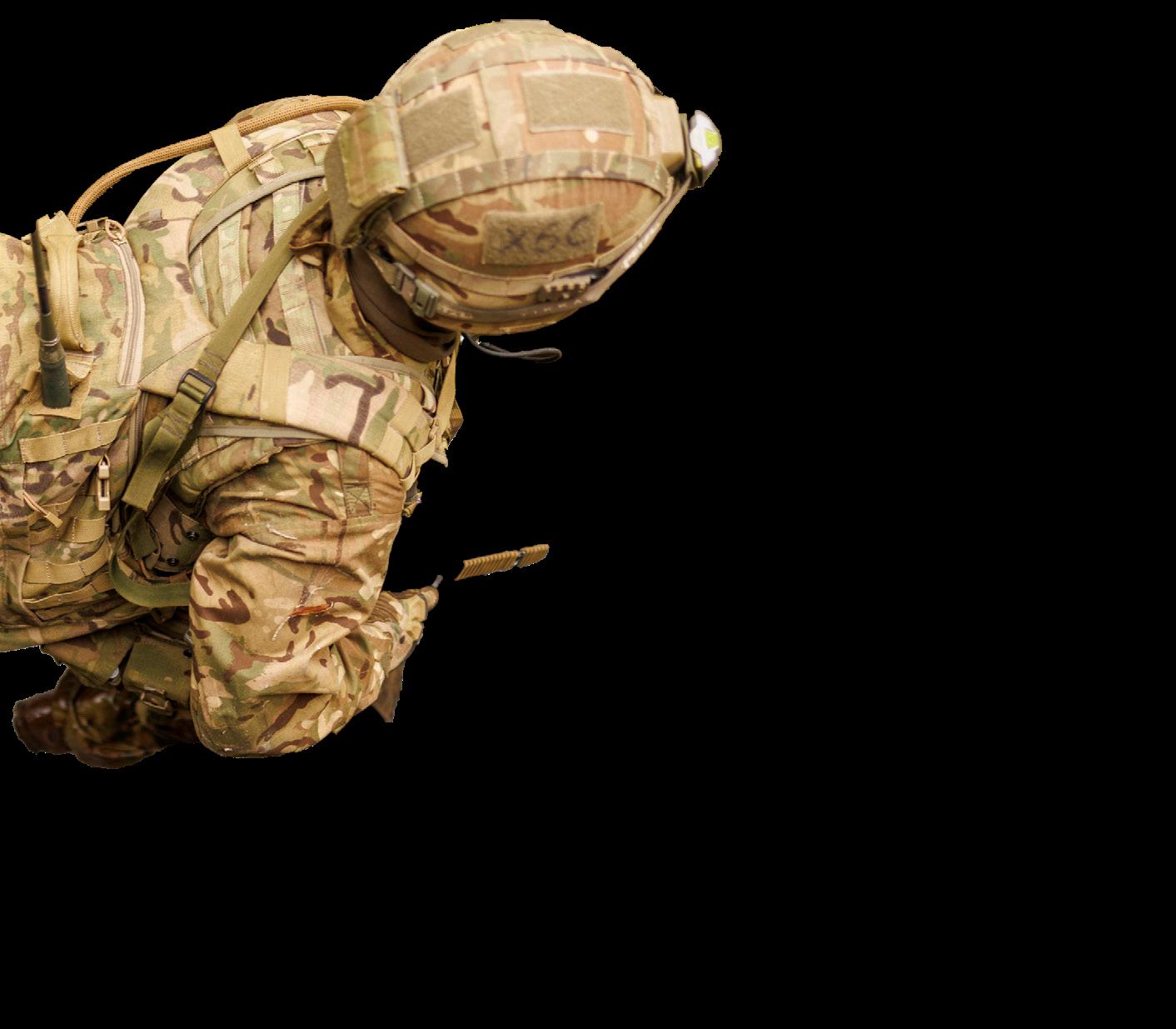
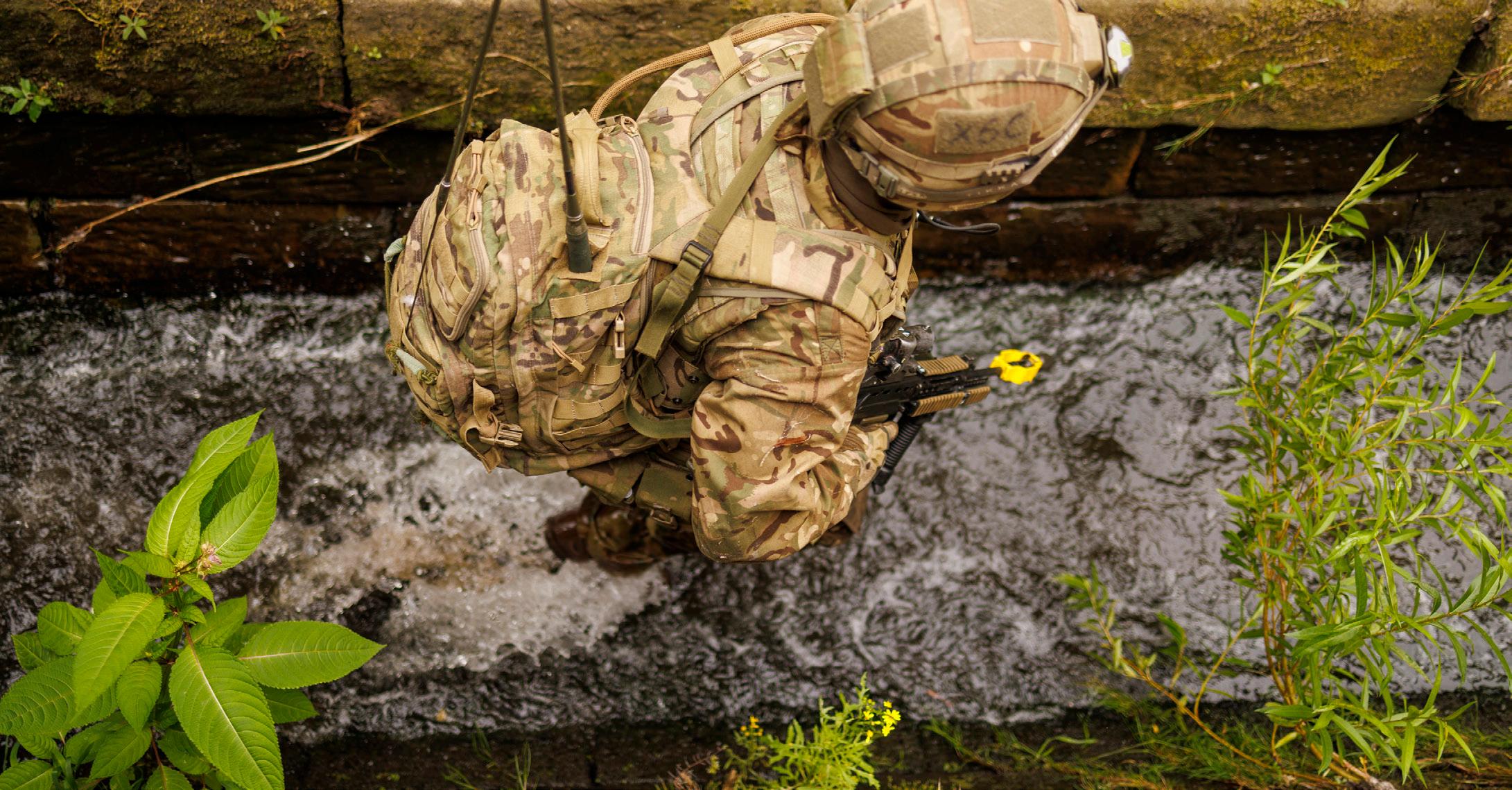
breaching, navigation and close-quarters combat in confined environments, as demonstrated in large-scale exercises like African Lion 2024.26 Updated doctrines and cross-training with allies such as the IDF are vital for developing subterranean capabilities without repeating hard-earned lessons.
On the equipment front, NATO forces must address challenges such as lost communications, a lack of GPS and hazardous acoustics by deploying tailored technologies, including thermal imagers, inertial navigation systems, robotic scouts and ground-penetrating sensors. However, detection remains difficult without human intelligence and military forces must prepare for defensive measures such as sealing or bypassing tunnels, deploying counter-infiltration units and reinforcing vulnerable infrastructure.
At both operational and strategic levels, NATO commanders must recognise tunnel warfare as a deliberate tool of attritional conflict that demands patience, flexibility and cross-domain coordination. Options include a combination of destructive and containment tactics, psychological operations and advanced engineering methods. Gathering intelligence on tunnel networks remains a significant challenge, requiring a blend of geospatial analysis, interrogations and specialised detection teams. NATO can enhance its effectiveness by leveraging allied experiences and should consider establishing specialised training areas for subterranean operations. As future conflicts may involve cities with extensive metro systems and reinforced bunkers, especially in Eastern Europe, tunnel warfare is no longer just a peripheral threat but a key element of modern conflict preparedness.
Tunnel warfare has come full circle from ancient besiegers digging under castle walls to today’s militants burrowing beneath modern cities. The enduring lesson is that going underground offers unique advantages to the side that is outmatched in open combat. By denying information and protection to the stronger adversary, tunnels alter the balance of power in unexpected ways. For NATO forces, the proliferation of subterranean threats means that no
battlefield can be considered ‘secure’ until what lies below is addressed. This does not imply that NATO must start building tunnels itself; rather, it must be able to fight and win in the subterranean dimension when required. Recent conflicts involving Hamas, Hezbollah, ISIS and others have provided a harsh wake-up call, but also valuable insights. They emphasise the importance of investing in training, technology and tactics specifically designed for underground combat, ranging from developing tunnel-clearing teams at the platoon level to equipping engineers with advanced detection tools and demolition methods.
There is cause for optimism: Western militaries have historically been adaptive, and we already see NATO beginning to rise to the challenge. Multinational exercises are tackling the scenario and knowledge from partners like Israel is being integrated. The ongoing Israeli experience in Gaza, for instance, demonstrates both the dire difficulty of a massive tunnel campaign and also innovative approaches to overcome it, such as coordinated surface-subsurface manoeuvres and new breaching techniques. The IDF’s hard-earned lessons will help save the lives of soldiers in future battles in other regions. NATO would do well to study those lessons closely.
In modern warfare, dominance will belong to the force that can operate seamlessly in all domains, including the subterranean. Whether securing a city’s sewer system to flush out snipers, detecting and destroying a cross-border tunnel before infiltration or denying an insurgent the ability to hide below ground, NATO forces must be ready to own the underground. Tunnel warfare is no longer an antiquated footnote of history; it is a vibrant, evolving facet of contemporary conflict, and one that NATO in the 21st century ignores at its peril. By confronting this underground challenge head-on, NATO can ensure that the next tunnel war will hold fewer nightmares and more manageable threats for the soldiers tasked with fighting it.
26defence-blog.com/us-military-conducts-tunnel-warfare-exercise-in-morocco
Brigadier General Armel Dirou Deputy Commander 1st (UK) DIV
On the 24th February 2022, the Russian ground invasion of Ukraine began and, within hours of it doing so, air assault units were landing on Hostomel airport in a bid to build the invading forces a bridgehead west of the Dnipro River and Kyiv. Simultaneously, Boryspil airport was also targeted as part of Russia’s – ultimately unsuccessful – attempt to seize control of the main airfields in the vicinity of the Ukrainian capital. Such airborne assaults are rarely used in modern war because they are high risk – physically, tactically, operatively and even politically – and the capability needed for them is difficult to maintain. Therefore, the events that unfolded at Hostomel and Boryspil are worthy of our attention as we seek to be better warfighters, and allow us to assess whether the concept of airborne assault remains relevant in the 21st century. In the wake of Russia’s ill-fated endeavour to capture Ukraine’s airports, Western observers were quick to assert that airborne units and paratroopers might no longer be relevant in modern conflict. This article suggests that these commentators were too hasty in their conclusions, and highlights that many specific factors led to the Russian failure.
Choice of an appropriate strategy
Putin decided to invade Ukraine when he did for two reasons. He first considered that Western countries were severely weakened, as expressed in the Russian National Security Strategy published in 2003: “The desire of Western countries to maintain their hegemony... is accompanied by a decline in the effectiveness of the global security system (...). The problem of moral leadership and the creation of an attractive ideological basis for the future world order is becoming increasingly urgent (...). The formation of a new architecture, new rules and new principles of world order is accompanied by new opportunities for the Russian Federation.”1 Secondly, the Russians considered the Ukrainian Army as inferior, both in terms of manpower and fighting spirit.
Referring to the Soviet and the Russian corpus of strategy, Russian leaders aim to defeat their adversary either through quick and brutal destruction or by progressive and determined attrition. The Russian actions in the early stages of the invasion showed that they favoured the former approach. Kyiv was identified as the centre of gravity, and it was assumed

that its seizure would immediately lead to Ukraine’s strategic collapse. In line with the Soviet theoretician Svechin, who had stated that such a strategy “requires yet another premise, namely the extraordinary victory ”, Russian commanders had based their war plan on a decisive blow against the enemy’s capital. Key to achieving this objective were the attacks on the airports of Boryspil and Hostomel, east and west of Kyiv, which were intended to create bridgeheads that would support the main land thrust towards the city. The premise was that surprise would be total and guarantee military success, with the overwhelming shock to the Ukrainian political system and population resulting in an “extraordinary victory”.2 Putin was keen for a repeat of what Soviet troops successfully performed in Prague in 1968 and in Kabul in 1979: the seizure of a capital’s airport that would strike at the political heart of the country. All the pieces were ready on the chessboard and the game could begin.
“”
Putin was keen for a repeat of what Soviet troops successfully performed in Prague in 1968 and in Kabul in 1979: the seizure of a capital’s airport that would strike at the political heart of the country.
On the 24th February 2022, a package of 34 aircraft – a mix of K52, Mi24 and Mi28 attack helicopters and Mi8 manoeuvre helicopters – took off from Belarus and, flying at a very low altitude, crossed the Ukrainian border at around 0930 and followed the course of
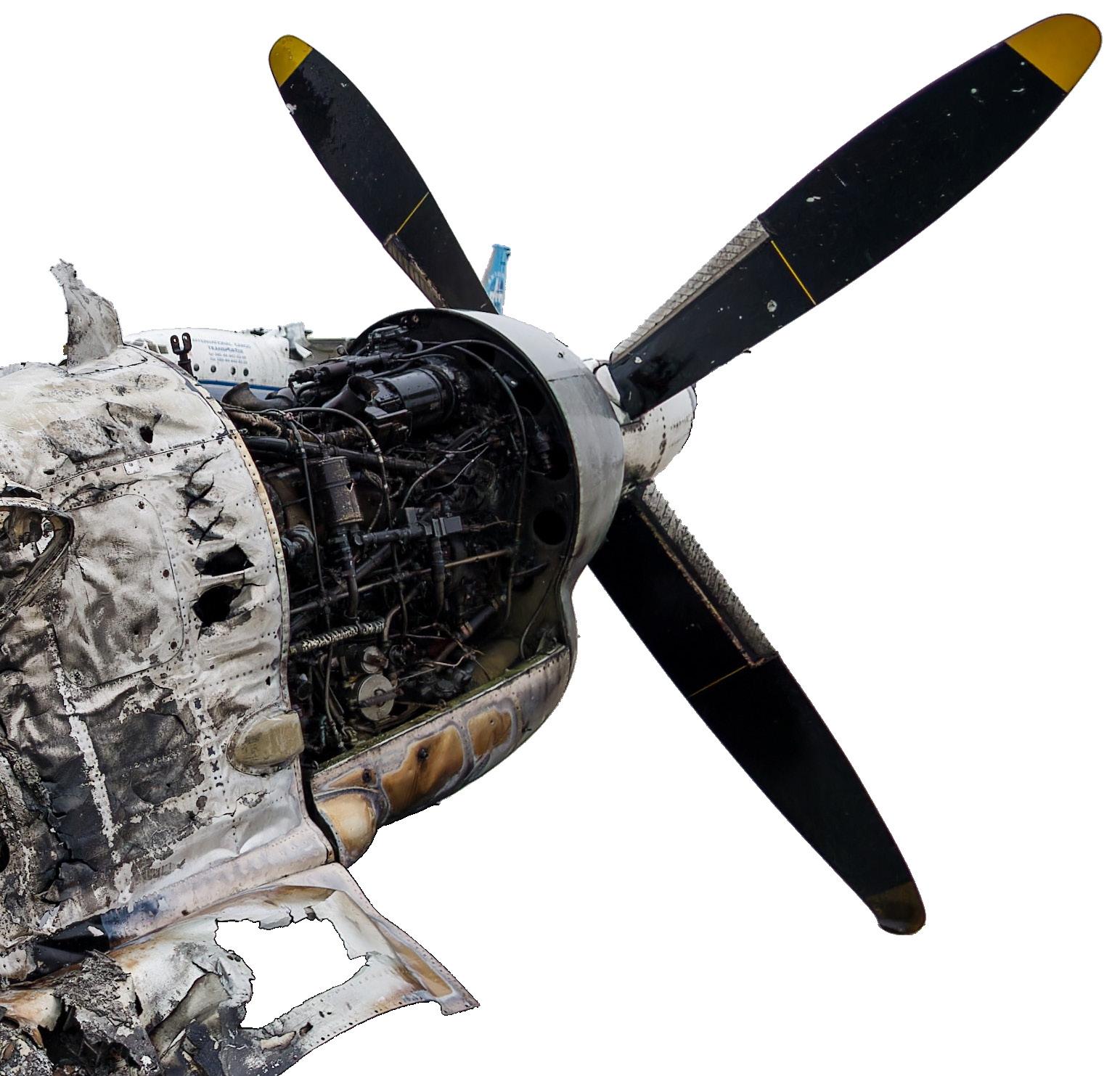

the Dnipro River. Reaching a dam north of Kyiv, the fleet turned west toward Hostomel airport. There, with no plans or preparations in place to defend the airfield, 200 conscripts from the Ukrainian National Guard had no defensive positions to assume. The Ukrainian troops fought bravely, but outnumbered by 300 Russian elite soldiers with superior equipment, were eventually forced to withdraw.
However, the Ukrainian command immediately understood the aim of the Russian airborne assault and mobilised troops to counter the attack; 80 and 95 Air Assault Brigades were moved by helicopter to Hostomel airport, and 72 Mechanised Brigade – with its MBTs and armoured artillery assets – was set in march on the ground. As a consequence, the Russians aborted the second part of their mission, the envisaged strengthening of their forces through the airlifting of 1,000 paratroopers and light armoured vehicles from Pskov to the airport. Instead, Russian mechanised units crossed the border from Belarus and exploited the absence of Ukrainian defensive positions in the Chernobyl Exclusion Zone. The subsequent arrival of this armoured column at the outskirts of Hostomel forced the numerically inferior defenders to withdraw but, in order to prevent any further Russian landings, Ukrainian artillery destroyed the airport as soon as their troops were clear. Russia did succeed in seizing the airport and city of Hostomel, but took the decision to pull back to Belarus on the 1st April 2022 due to sustaining heavy casualties, poor logistics and a lack of progress in the face of fierce Ukrainian resistance.
Tactically, the battle of Hostomel could be considered as a Russian success because the invading force did seize its objectives, but it was an operational failure on the grounds that it did not produce the expected effects and the “extraordinary victory” anticipated. In response, Moscow radically changed its stance, switching from a strategy of destruction to a strategy of attrition, which: “Constitutes a search for material superiority and the fight for it, but this search is not limited solely to the desire to deploy superior forces in a decisive sector. [The aim is to] create the condition for a ‘decisive point’ to exist. The weary path of a strategy of attrition, which leads to the expenditure of much greater resources than a short destructive strike aimed at the heart of the enemy, is in general chosen only when a war cannot be ended by a single blow.”3
Consequently, should we conclude that airborne troops are useless and irrelevant in contemporary conflicts, as some seem to be saying? We should probably be a bit more prudent in our judgement. The Russians overestimated their own forces and underestimated their adversary: “Russia’s political-military elites oscillate between two extreme feelings: a sense of imminent collapse and an intoxicating sense of power. Russia’s actions in 2021-2022 were the perfect
2Op. cit. p.241.
3Op. cit. p. 277.
product of this paradoxical thinking.”4 Remaining at this strategic level, the Russians failed in terms of cross-cultural knowledge.5 The general assumption that Ukrainians and Russians belong to the same ethnic-cultural group of the ‘Rus’ implied to the Russian planners that the Ukrainians would not fight hard against their brethren and that the resistance would not be prolonged. Subsequently, the Russian commanders did not take into account the resilience of Ukraine’s military. Even though they managed to surprise the Ukrainian forces, their strike was not enough to make them collapse under the pressure of a joint assault. The said resilience of Ukrainian troops and headquarters allowed their ground troops to face the Russian air assaults at Hostomel and Boryspil.
Regarding the date of the invasion and the initial offensive layout of the invading troops, we can see that the Russians launched their attack too late in the winter. As a consequence, they could not manoeuvre off-road because of the thaw and resulting muddy terrain (rasputitsa). Constrained to the use of main roads, their manoeuvre was slow and difficult, because routes became congested with vehicles, making forward artillery support and logistical support very difficult. This last point deserves special consideration because we must emphasise the fact that the logistic element was heavily reliant on rail. As a consequence, the Russian main force was not able to link up with its airborne units.
As a consequence, during the air assault’s first wave, two helicopters were shot down by MANPADS [man-portable airdefence systems].
In addition, chance is a factor in war. Unluckily for the Russian airborne troops, they faced determined Ukrainian soldiers who eventually thwarted the Russian plan. The Russian inability to deploy follow-up troops and reinforcements doomed the air assault units.


The Russian helicopters were flying at low altitudes in order to avoid being detected by radar, but they did not take into account the use of portable surfaceto-air missiles. As a consequence... two helicopters were shot down.
The Russian forces were neither prepared in line with their doctrine nor tactically ready for such a complex operation, in part because the army had not been part of modernisation and development priorities.6 Because Russia greatly underestimated their adversary, they forgot that: “One must envision an unavoidable change in the situation during combat actions for operations designed to go to great depth and pursuing decisive goals: unavoidable reinforcement of the enemy, an increase in the density of his front, appearance of an entire series of positions reinforced hurriedly and beforehand on routes of advance.”7 However, whereas Russian doctrine considers that an airborne operation can be conducted at battalion level until 80 kilometres deep, the action at Hostomel airport was around four to five times further than their usual doctrinal norms. Russian troops were overstretched and not able to advance rapidly, and therefore the paratroopers remained isolated for longer than anticipated. “An attacker should remember that simply moving forward merely weakens him and is only advantageous to the extent that it reduces the distance to a culminating point in the space of which he can reap the fruit of his successes.”8 Doctrine can be bypassed only if it is understood, because the planning of such an operation “cannot be defined on the basis of the ‘inspiration’, the ‘caprice’, of a particular commander”.9 Furthermore, Russian commanders underestimated the enemy’s airdefence. The Russian helicopters were flying at low altitudes in order to avoid being detected by radar, but they did not take into account the use of portable surface-to-air missiles.
So, do the operations at Hostomel and Boryspil mean that airborne troops are no longer a potent military capability? The opening hours of the war in Ukraine may suggest so, but, when analysed in more detail, it becomes clear that the defeat of Russia’s airborne forces was not attributable to the inability of such units to operate effectively in modern war scenarios.
The Russians were over-confident that an attack – any attack, in fact – on Ukraine would be successful given the strategic parameters. As a consequence, the Russian planners ignored their own doctrine and many of the accepted wisdoms relating to the deployment of airborne forces; chiefly that airborne forces must be committed in accordance with their capabilities and with the required support. The strengths and weaknesses of light and quickly deployable airborne forces must be fully considered and, in the case of the Ukraine war, that is not what happened.
At Hostomel, the Russians lacked sufficient supporting fires – from artillery and/or aircraft – for deep strike operations. Deficient in this vital asset, Russian forces were left vulnerable to Ukrainian artillery fire coming from the capital and had no ability to counter it. As a result, the airborne forces failed to seize and secure the airfield quickly enough to support the assault on Kyiv.
In summary, shortcomings in Russian military planning –rather than any specific shortfalls in the capability of airborne forces – were culpable for Putin’s vision going awry. One might say that Hostomel was not a bridge too far, it was merely too far and out of reach for the Russian forces.
4Dimitri Minic, Pensée et culture stratégiques russes, Editions de la Maison des Sciences de l’Homme, Paris, 2023, p. 355.
5On this subject, it is worth reading Vetlana Alexievich’s book, Secondhand Time, The Last of the Soviets (Random House, New York, 2016, p470), which provides an instructive insight into the mindset of people from the former USSR.
6Michael Kofman, Rob Lee, Not built for purpose: Russian military’s ill-fated force design, in War on the Rocks, 2 June 2022, warontherocks.com/2022/06/not-built-for-purpose-therussian-militarys-ill-fated-force-design
7V. K. Triandaffilov, The nature of the operations of modern armies, ed. Jacob W. Kipp, London, 1994, p. 91.
8Aleksandr A. Svechin, Strategy, East View Information Services, Minneapolis, 1992, p.253.
9V. K. Triandaffilov, The nature of the operations of modern armies, Jacob W. Kipp, London, 1994, p.93.

The urban environment is one of the key areas in which light forces can shine and achieve effect. “”
This Ares & Athena set out to explore the utility that light forces have in today’s military realm and reality. ‘The Future’s Bright, The Future’s Light’, an article in the Wavell Room argued some years ago.1 Is this still the case in the light of developments in Europe and the preparation for the defence of the Eastern Flank of NATO? Are light forces a desired attribute in the order of battle of the British Army or are they an add-on, and something that exists merely because there is not enough money in the pot to build up, equip and sustain ‘proper’ (i.e. medium and heavy) forces? This Ares & Athena has made clear that light forces play a very important role in the modern military. Light forces can adapt and deploy quickly. If this is done correctly, within the right military and political context, they can have operational and perhaps even strategic effect. This is the lesson that Brigadier General Armel Dirou’s article provides us with. However, it is a fine line. As Dirou argues, getting the parameters wrong can quickly lead to military failure.
Recent urban operations have reinforced a view that has been held and accepted by militaries for a long time: the urban environment is one of the key areas in which light forces can shine and achieve effect. This is the context of John Spencer’s article, in which he analyses multi-dimensional warfare in restricted areas such as tight streets, collapsed buildings and debris-choked alleyways, which, he argues, demand the deployment of light forces. This view is also supported by Andrew Fox’s article, which takes us to the subterranean battle ground. Reading his analysis and following his examples of subterranean ‘Rattenkrieg’, it is obvious and clear that this is a dimension which demands the deployment of light forces.
Alex Neads’ article takes the reader to
spectrum – from high intensity combat to security assistance activities. He convincingly argues that light forces are wellprepared to perform in such operations. The examples that he provides us with underpin this assumption. However, he also highlights some of the potential pitfalls and issues with light forces in the international context. Once again, it becomes obvious that light forces are not a panacea, but that they can have a operational and perhaps even strategic effect if deployed and used correctly.
In sum, this Ares & Athena has covered ground from one end of the spectrum of conflict to the other. This shows and reinforces (if it needs reinforcing!) the understanding and view that military forces need to be adaptable. As this edition has shown, light forces are well-prepared for this. Having said this, there are situations that are outside of the abilities and capabilities of light forces, and it is important to remember that they are just one tool in the military toolbox that can be used to achieve effect. It would therefore be wrong to regard light forces as the panacea for all problems an army can face. This might be tempting, not least because light forces are less expensive than other forces, but it would be a short-sighted view. This also means that we need to think about what light forces really are and how we define them. In different times, we have understood different things by the term. Internationally, there are also differences in the understanding of the term. Usually, these differences are linked to capability. For instance, the German Bundeswehr is currently undergoing a restructuring. Traditionally, the Jäger (comparable roughly to the Rifles cap badge) were classed as light forces, but, in accordance with the new army design, they are now being classed as medium forces. This is more than just semantics; it decides their role and deployability in what is now, in essence, a mechanised infantry force. When all of these aspects are taken into consideration, light forces will continue to play an important role in the varying scenarios that the changing character of war presents us with when the use of military force is – and it will be – required.

The Nordic and Baltic states are global leaders in the development and use of light forces. Amongst Britain’s closest military partners, senior commanders and thinkers from across the region have shared key insights to support current and future British Army thinking.

Lieutenant Colonel Dmitri Kondratenko (assissted by Major Ivo Peets) Estonian Defence Forces
It has been stated that the control or capture of a specific area or objective cannot be determined if an infantryman’s boot has not walked there. The Estonian Defence Forces maintain the same principle and, today, two manoeuvre infantry brigades, each composed of armoured and mechanised infantry battalions, comprise its primary manoeuvre unit, the First Division. Light infantry units were critical in helping secure the country’s independence after the First World War and, until the occupation of Estonia by the Soviet Union in 1940, significant emphasis was placed on developing and training infantry units. Following the end of the Cold War, as the military of a restored independent country, the Estonian Defence Forces have worked hard to evolve our tactics, training and preparation while continuing to focus on the role of infantry. This, in large part, has been driven by our history and the characteristics of our neighbour and tactical adversary.
The armed forces of the Russian Federation have been and are likely to continue to remain Estonia’s principal strategic threat. They typically execute manoeuvres with armoured and mechanised units, with air and indirect fire support, to achieve a breakthrough – concentrating their striking force on narrow sections of the front to gain an advantage over the defending unit in the designated offensive section. In many areas, this opponent may only use a platoon or company in battle formation when approaching or attacking. The opportunity
for launching a unit in a combat formation in accordance with this doctrine model is restricted in the Estonian terrain, which is characterised by the presence of numerous swampy areas, rivers, canals and lakes, with over half of the landmass being covered in forests. There are virtually no broad open spaces that would support the movement of larger mechanised units. This situation provides light infantry with parity or, in certain instances, an advantage in a battle where such units are capable of executing manoeuvres and techniques that are not otherwise feasible.
Lessons from both the First World War and the Estonian War of Independence (1918-1920) were thoroughly integrated into military practices. The Estonian Defence Forces were established in 1918 amidst active fighting during the struggle for independence. Initially relying heavily on rapidly mobilised light infantry units, this structure was necessitated by Estonia’s limited heavy weaponry and the challenging logistical conditions inherited from prior German occupation and the Russian Empire’s collapse. The conflict is often cited as an example of a small nation’s infantry successfully overcoming a much larger adversary. The victory against Russia reinforced infantry-centric warfare principles, subsequently influencing ongoing training, tactics development and equipment selection and introducing innovative infantry tactics that would later find relevance during the Second World War. Development did not halt after these conflicts; instead, Estonia continued to closely monitor military advancements internationally, actively pursuing cooperation and systematically incorporating new
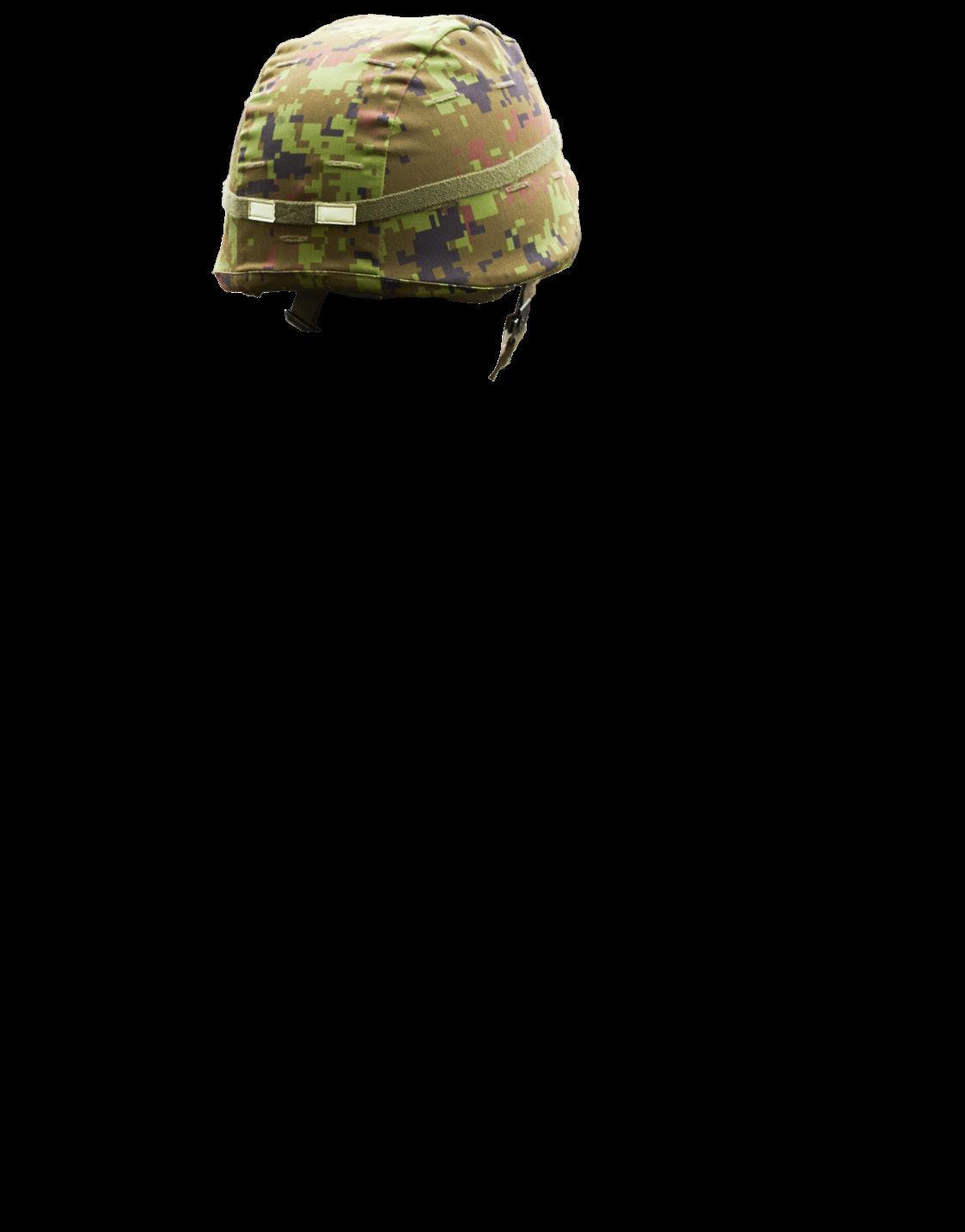

tactics and equipment into its infantry forces. Particular emphasis was placed on mastering tactical movements, refining shooting skills and maintaining rigorous physical conditioning. Historical publications, notably the Estonian military journal Soldier (1919-1940), frequently discussed these infantry tactics. Rather than extensively focusing on larger formations such as companies or battalions, tactical instruction prioritised smaller units’ individual soldiers, squads and sections and underscored the critical role of the section commander. This approach empowered individual soldiers and small units with significant responsibilities, preparing them comprehensively for diverse combat in close, complex or open terrain, and in very different seasonal conditions.
After Estonia regained its independence in 1991, the Estonian Defence Forces did not have many options other than initially contributing to the creation of infantry units. The Estonian Defence Forces’ primary branch was once again the infantry. This implied that the infantry assumed the primary responsibility for repelling any potential adversary. Defensive operations were prioritised. It was recognised that central command would likely be lost in the event of an attack, and that there was an insufficient supply of reliable command and control equipment at the battalion level. In the planning of defensive operations, companies were assigned distinct fighting zones, granting them considerable autonomy in decision-making, as it was impractical to train Estonian infantry forces in Soviet infantry tactics. In the early 1990s, Special Operations Forces instructors from the United States and the United Kingdom arrived to teach infantry tactics to small units. During this period, Estonian officers received infantry tactics education in Finland. The strategies employed in Finnish defensive operations emphasised delaying engagements, wherein the primary focus was not on extensive fortifications that could be besieged and encircled by the adversary, but rather on smaller strongholds capable of halting adversary advances. Additionally, small units executed ambushes, rapid attacks and raids against the fixed adversary forces. Following organised resistance, the forces needed to be prepared to transition to dispersed combat operations or guerrilla warfare. This necessitated the autonomy of platoons and even sections.
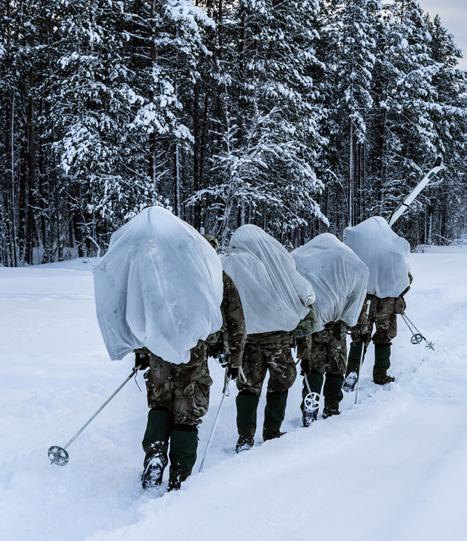
a brigade. An infantryman must be prepared to execute defensive and offensive manoeuvres in closed, semi-closed and open terrains, under extreme circumstances, and possess the capability to engage in combat both during the day and at night across various weather conditions. These demands alone dictate a broad range of training for the Estonian infantry. Engaging in close and semi-closed terrain fundamentally entails close combat, which is predominantly associated with rapid situational orientation and assessment, alongside practiced drills. Physical preparation also plays a significant part. As infantrymen frequently work distant from the support area, they must possess the capability to transport substantial quantities of equipment and materials essential for executing their assigned tasks. Weather conditions necessitate that an infantryman be prepared to adjust to severe survival conditions – this includes constructing a shelter or trench, or modifying an existing infrastructure in accordance with the situational demands.
An infantryman must be prepared to execute defensive and offensive manoeuvres in closed, semiclosed and open terrains, under extreme circumstances, and possess the capability to engage in combat both during the day and at night across various weather conditions.
The re-establishment of the Estonian Defence Forces essentially meant creating the Defence Forces anew and infantry tactics are comprehensively taught by experienced instructors to both conscripts in military units and students at the Estonian Military Academy. Consequently, the tactics employed today by light infantry units in Estonia are highly proficient. All troops, irrespective of their specialisation, acquire fundamental knowledge and skills in infantry tactics. Infantry units, encompassing mechanised and armoured infantry, get training from the platoon to battalion level. Large-scale exercises also involve practising operations within
Estonia has both light, mechanised and armoured infantry units. While the tactics of armoured infantry units are different (infantry operates in conjunction with their fighting vehicles), the primary distinction between light and mechanised units lies in their means of transportation. Nonetheless, upon dismounting, identical principles are used; specifically, the tactics of a light infantry unit commence upon exiting an armoured personnel carrier which then frequently remains distant from the dismounted unit. This happens for several reasons. The insights gained from the RussianUkrainian conflict indicate that following the dismounting of infantry, the armoured personnel carrier must either provide distant support to the infantry or retreat from the area, as it becomes a highly recognisable target that can be rapidly neutralised. In infrequent instances, the turret guns of armoured personnel carriers can serve as supplementary fire support; however, once dismounted, the infantry group usually executes the manoeuvre autonomously. Armoured personnel carriers are utilised for resupply, evacuation or transportation. The armoured personnel carrier unit is dispatched, often under the command of a platoon sergeant. Should the infantry manoeuvre necessitate prolonged operations distinct from the vehicles, the armoured personnel carriers will be consolidated under a unified command by a superior unit (i.e., company or battalion), and the designated group may be allocated specific tasks based on the prevailing circumstances and conditions.
Modern command and control tools provide more centralisation and reliability, resulting in squads and platoons operating under closer company supervision than in earlier practices. The squad functions as an integral component of a superior unit. Nonetheless, given that the prior experience of decentralised combat operations is relatively recent and has significantly influenced training composition, it may be asserted that the groups are tasked with missions that
require them to function independently from the main unit within the framework of a distinct assignment, for instance, executing ambushes in a specified region, targeting adversary combat or logistical support, guarding flanks and doing supplementary reconnaissance.
An Estonian Company, which was essentially a mechanised infantry company mounted on armoured personnel carriers, worked with British units stationed in Helmand from 20062014. The Estonian unit executed all of its responsibilities in Afghanistan with distinction and experienced an extensive range of responsibilities, with tasks executed as part of a company, platoon or squad. The previous training experience was particularly beneficial in terms of the sections’ readiness to operate independently. The tasks assigned to sections and platoons frequently anticipated undetected infiltration into adversary-controlled territory, such as at night, in poor visibility or with helicopters, with the objective of conducting cordon and search operations or establishing conditions for the activities of a larger unit. The advantages of a light infantry unit were readily apparent during the execution of certain activities. The unit was able to move through the terrain in a manner that was undetected by the adversary or to traverse areas that were unsuitable for armoured personnel carriers. Several deception operations were conducted, in which armoured personnel carriers and a smaller group of infantry moved in one direction, thereby attracting the adversary’s attention. At the same time, the main light infantry unit passed the enemy unnoticed and unexpectedly attacked from an unanticipated location. Utilising this strategy yielded excellent outcomes and resulted in the acquisition of substantial quantities of weapons, explosives, narcotics and other materials. Light infantry units were also given tasks in situations where heavy vehicles were useless or the adversary had mined routes to impede movement.
The adversary found it simpler to arrange operations against large targets, such as an armoured personnel carrier or combat vehicle, due to their clear visibility on the terrain. In contrast, the enemy found it significantly more challenging to detect and attack light infantry squads, particularly when they were operating dismounted. When the adversary was aware of the unit’s location and the target was stationary, they typically initiated attacks. The adversary encountered significantly greater challenges in organising operations against light infantry due to their ongoing monitoring of the infantry’s location. The enemy was perpetually perplexed as to whether the unit had already passed through or they had been outflanked when the squads operated independently, moving in three distinct directions. The necessity of mission command at the squad and platoon levels in Afghanistan and the readiness to implement it became apparent. The squad or platoon was assigned a task and objective, and the unit commander individually developed an execution strategy that was contingent upon the circumstances and his or her experience. It is bold to assert but these nuances were crucial in mitigating excessive risk and achieving the best possible outcomes.
Training experiences fighting with a heavy armour unit
The integration exercises that began following the arrival in Estonia of NATO’s Forward Land Forces Battlegroup (FLF BG) – the most recent version being May’s Exercise Hedgehog
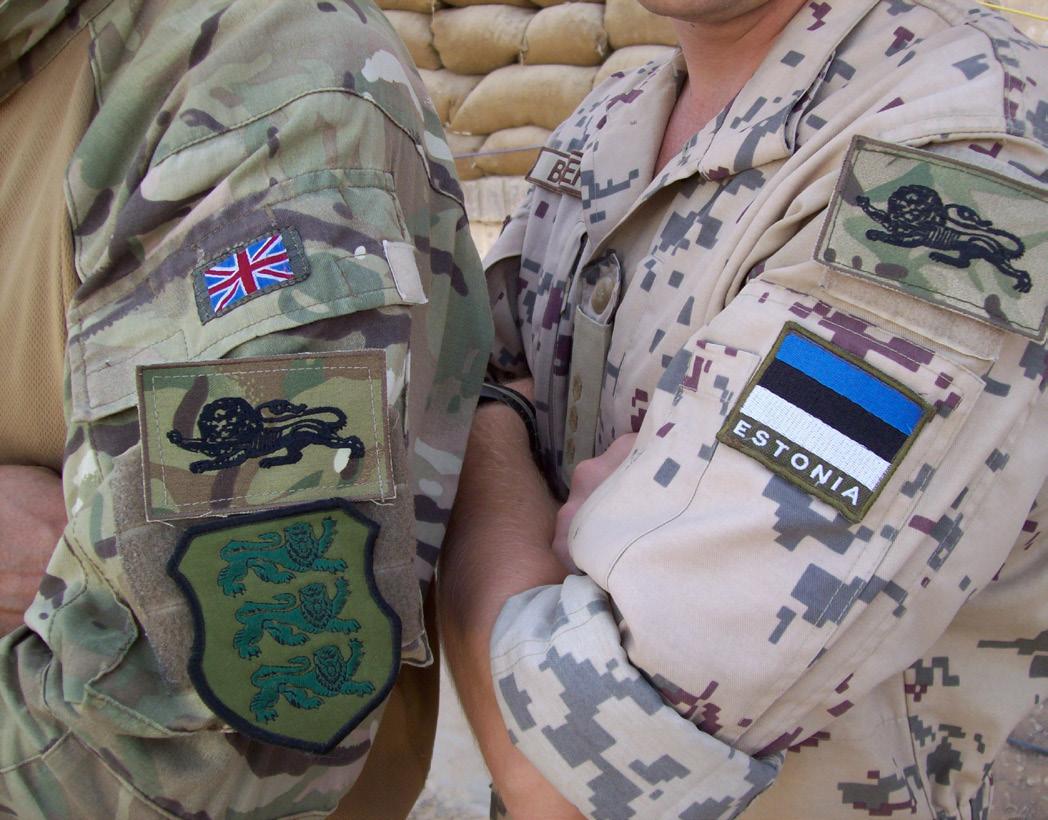
The tasks assigned to sections and platoons [in Helmand] frequently anticipated undetected infiltration into adversarycontrolled territory, such as at night, in poor visibility or with helicopters, with the objective of conducting cordon and search operations or establishing conditions for the activities of a larger unit.
25 involving 13,000 troops – have also demonstrated the advantage of light infantry units in defensive operations against heavier units. The Estonian terrain is canalised, which presents poor opportunities for the movement of large units. In practical terms, the operation appears as follows: approach directions are obstructed and blocked and the use of turret guns from a distance is restricted. The FLF BG has been assigned with the task of advance to contact and seizing the designated objective. Heavy units are employed by the FLF BG in two assault axes. Initially, reconnaissance units are sent out, but their capacity to conduct reconnaissance from vehicles is severely restricted. As the FLF reconnaissance armoured vehicles approach obstacles and seek bypass opportunities, they become vulnerable to fire from light infantry units. The time required for reconnaissance will be significantly extended if reconnaissance units dismount prior to the obstacle and continue reconnaissance on foot. Additionally, there is a possibility that the manoeuvre unit that follows the scouted route after a specified period of time will not receive sufficient information about the adversary or will be forced to wait behind reconnaissance units. If the time factor is not as critical and the reconnaissance unit continues its operations on foot, the reconnaissance unit is likely to collide with the adversary’s light infantry unit.
Given the number of personnel in the reconnaissance unit, the reconnaissance units will not have an advantage in fighting the adversary’s manoeuvre units. The reconnaissance unit will suffer losses, move out of the contact and look for bypass opportunities. The attacking side will dispatch a manoeuvre unit to establish a passage through the obstacle after detecting it on the attack axis. In order to accomplish this, the assaulting side must initially isolate the obstacle
and establish a secure perimeter in order to move forward engineer equipment or equivalent means. To accomplish this in closed or semi-closed terrain the assaulting force must employ infantry to secure the perimeters. Heavy infantry units have a smaller number of personnel than light infantry units (for example, six soldiers in armoured infantry versus ten soldiers in a light infantry squad). Therefore, to establish superiority, the attacker must amass an adequate number of infantry to continue the assault. The capacity for enabling the passage through the barrier solely with turret guns is restricted to short distances. The light infantry’s anti-tank weapons will be effective against the tank or combat vehicle. Another option is for the defender to await the sending of an engineer unit to demine the barrier by the assaulting side, and then employ indirect fire. In this instance, the destruction of a high-value target imposes limitations on the following freedom of movement. A light infantry unit can also organise a counterattack or attack by fire the stationary unit column if the attacking side is held up along the way (for example, only one platoon or company attacks, the rest wait until the conditions are met to continue the attack). This creates an additional dilemma for the attacking side.
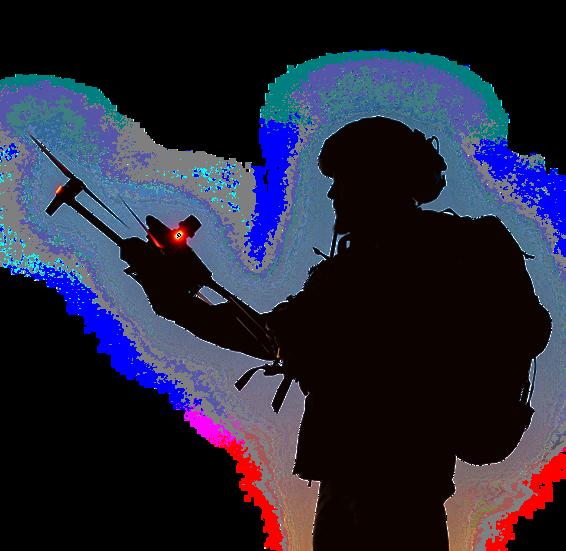

The long-term vision anticipates solutions where unmanned systems could replace certain traditional capabilities, providing superior performance and scalability.
Weather conditions also impose additional restrictions on heavy units. Equipment is restricted to concrete surfaces or roads during the winter, autumn and early spring. It is quite easy for heavy equipment to become stuck when travelling off road, which in turn provides a tactical advantage to light infantry units.
It is also crucial to note that the FLF BG commander and company commanders’ feedback indicated that the light infantry unit’s capabilities were substantially underestimated, while its own armament was overestimated. Particularly in terms of the preponderance of firepower, the terrain severely restricts freedom of manoeuvre. Additionally, the Estonian light infantry’s capacity to construct strongholds and dig in, which necessitates light infantry for assault and clearing, was emphasised, as heavier units are deficient in this category.
In 2019 the Estonian Defence Forces initiated the Land Force 2030 project, aimed at clearly defining the roles, requirements and future structures of infantry units. The core principle of this initiative was to link capabilities directly to requirements, ensuring that all infantry types had equipment and resources matching their designated missions. A modular design philosophy was adopted, allowing simplified management and facilitating easier implementation of future structural adjustments. Resource constraints were a significant motivator behind the project, prompting a delineation between different infantry unit categories. By aligning capabilities closely with mission requirements, the initiative enhanced the combat effectiveness and logistical efficiency of both manoeuvre and territorial infantry units.
Historically, Estonian infantry units evolved independently, primarily due to decentralised development processes that accelerated significantly after 2012, when the Land Forces Command Headquarters was merged with the Military Joint Headquarters. This decentralisation led to notable structural and tactical disparities between brigades. Although mechanised infantry units of the 1st Brigade and light infantry units of the 2nd Brigade shared approximately 90 per cent of their equipment (excluding armoured personnel carriers), their development diverged considerably. These differences created challenges in interoperability, increased training requirements and restricted personnel rotation across brigades. As previously outlined, the aim of the project was to eliminate capabilities that exceeded critical requirements. Resources released from this streamlining were reinvested into essential capabilities, enabling the transformation of the 2nd Brigade to also incorporate armoured personnel carriers. Additionally, the redistribution of resources enhanced lethality, notably through increased anti-tank capabilities and improved observational systems adaptable to varying light conditions.
Concurrently, territorial defence units within the Estonian Defence League underwent significant restructuring. Territorial infantry were categorised into two distinct groups:
n Very Light Infantry Units – equipped with essential weaponry and with minimal logistical support. These units operate exclusively within designated local areas, maintaining a small logistical footprint, which still enables effective territorial defence with limited resources.
n Light Infantry Units – matching the equipment standards of manoeuvre brigade infantry. These units have enhanced mobility and operational capabilities. Resources saved from developing the very light infantry model were reinvested here, raising their performance.
Another key aspect was restructuring force protection units across various services and commands. Previously, for example, over 30 distinct infantry squad structures existed simultaneously, resulting in management complexity and training inefficiencies. These structures were consolidated into five standardised infantry squad designs, enhancing interoperability, simplifying logistical management, reducing training complexity and decreasing operational costs.
Looking forward, the Estonian Defence Forces envision the progressive integration of unmanned systems across all infantry roles and levels. Presently, the focus lies in augmenting existing capabilities, with emerging technologies and developing concepts enhancing the effectiveness of infantry. However, the long-term vision anticipates solutions where unmanned systems could replace certain traditional capabilities, providing superior performance and scalability. Such transitions would notably reduce training
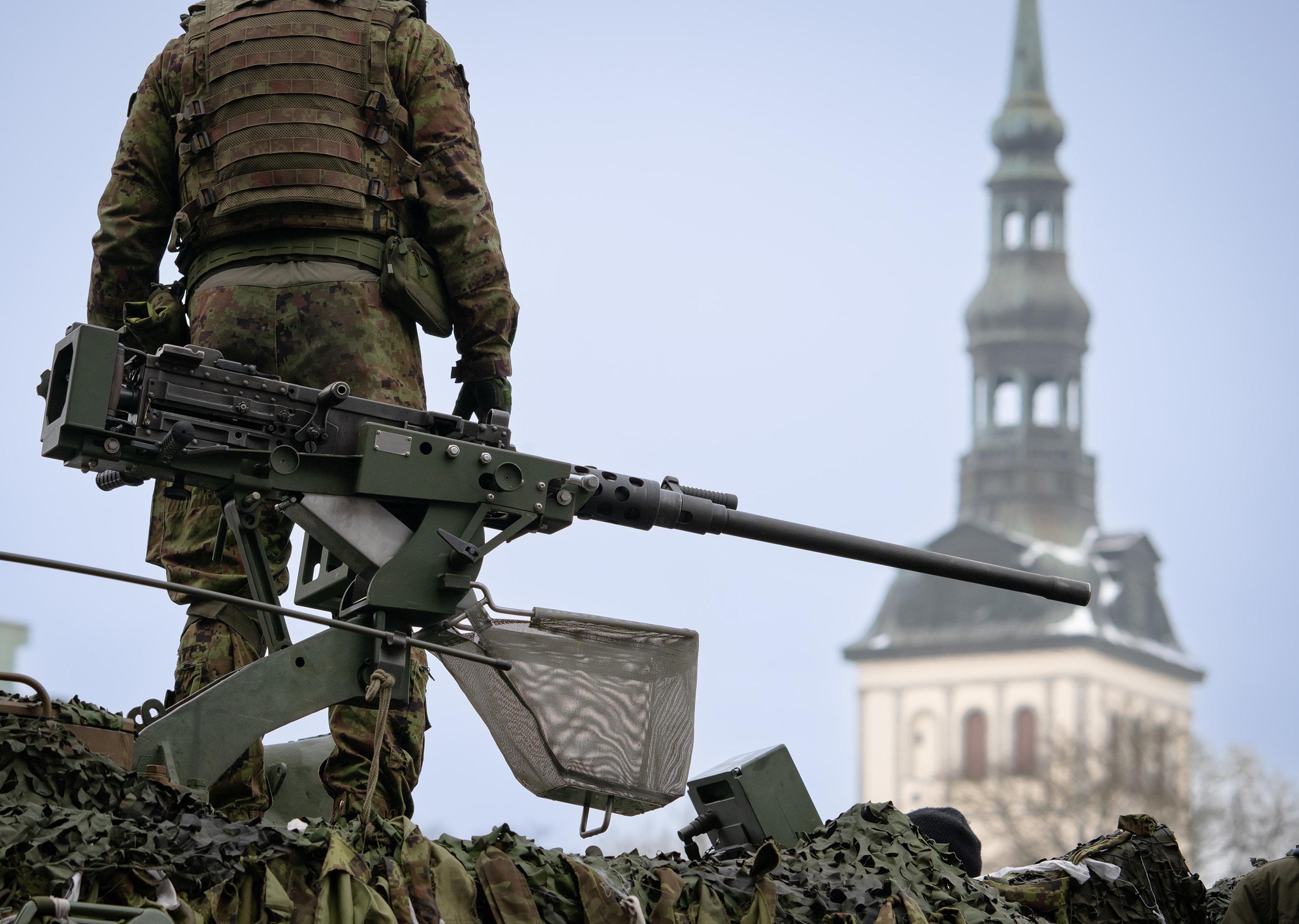
time and simplify maintenance demands, which are critical considerations for Estonia due to its reliance on a reservistbased force structure.
Overall, the Land Force 2030 initiative has established a clear pathway for the ongoing evolution of Estonian infantry forces, ensuring their adaptability, interoperability and sustained readiness to address both current and future challenges.
The importance of Estonian infantry will not diminish in the future. Although the infantry battle was previously more separated, it is now becoming incorporated into combined arms combat. The Estonian Defence Forces are in the process of acquiring more advanced command and control equipment, and both infantry and combat support units are receiving equipment and technology. The conditions for supporting light infantry combat will continue to improve as capabilities continue to develop. This is not expected to significantly alter the tactics of light infantry, particularly when planning battles against heavy units. However, it does provide the light infantry with the opportunity to conduct more concentrated battles, combining firepower and achieving the desired effects on a specific area.
In terms of training, infantry battalions are likely to be more inclined to collaborate and conduct training with other military branches, as some of the effects can already be more effectively achieved by other units today as a result of the development of other capabilities. This implies that the primary emphasis of tactics in certain light infantry units will shift more toward battalion-level operations. However,
Estonia’s territorial defence units (National Guard) will undoubtedly maintain their emphasis on squad and platoonlevel tactics, while also being prepared to transition to dispersed combat activities in adversary-controlled territory.
The Ukrainian war also demonstrates the growing significance of light infantry, particularly in scenarios where the battlefield is transparent as a result of technological advancements. Concentrated large units are easy to detect making them vulnerable to indirect fire. Consequently, light infantry units are assigned tasks that were previously more suitable for heavy armoured manoeuvre units in the past. In general, light infantry units operate in smaller groups across a large area. This approach underscores the skills of the lone fighter and the tactics of a small group, which must be able to act effectively and swiftly in light of the limited support from a higher unit.
Considering the Estonian landscape, the likely adversary, and the mentality of the people, the Estonian infantry will continue to serve as the foundation of the Estonian Defence Forces for an extended period. Estonia’s infantry concept is continuously being refined and its capabilities are being expanded. The implementation of an alternative conceptual approach is illogical for Estonia, as the country cannot afford large military formations. Due to this, the Estonian infantry has acquired a distinctive identity. The primary objective of the Estonian light infantry remains to ensure that it is prepared to operate as a part of a larger unit and as standalone units in challenging weather and terrain conditions, with the aim to defeat an adversary that, in terms of strength and size, might be considered overwhelming.
Major Kristian Lindhardt Royal Danish Army
The use of light infantry has not been a traditional Danish Army discipline. Certainly since the end of the Second World War, the service’s focus has been on motorised and armoured formations of infantry and tanks. These were meant to face an invading force of equal proportions, either in Slesvig-Holsten or on the island of Sealand. Material, organisation and doctrine were balanced to make a credible national defence within the NATO framework. Following the end of the Cold War and the terrorist attacks on America in 2001, the Danish Army made a transformation from a national defence force into an expeditionary force, deployable where needed. Many of the former armoured infantry regiments were disbanded, including Slesvigske Fodregiment (the Slesvig Regiment of Foot).
With the rise of a viable Russian threat to Europe and the Baltic Sea area in particular, in January 2019 the Danish Army, for the first time in many years, stood up the XIII Light Infantry Battalion in the now reformed Slesvig Regiment of Foot.1 This was not a new regiment as its roots go back to 1778 but the tasks given to it were novel to the Danish Army. The intent behind its formation was to provide easily deployable forces that could be called upon to make ‘first in, first out’ deployments. The Slesvig Regiment of Foot has two battalions, one regular (XIII) and one reserve (XII), and is designed to be a light and highly mobile unit, which can be deployed abroad or double as a Special Forces Support Unit. The light footprint of such a unit is believed to make it more flexible. The XIII Battalion’s motto ‘No Fight – No Victory’ is a reminder of the necessity to fight for our values, as an individual and as a people.
1For further details of the unt’s background, see Major Michael Johnsson, ‘Light Infantry: a New Tool for the Danish Army’, European Security & Defence, 8 September 2020, euro-sd. com/2020/09/articles/armed-forces/18852/light-infantry-a-new-tool-for-the-danish-army
Within the Danish Armed Forces, the XIII Battalion is under command of the 2. Brigade, which plans and prepares the deployment of units and brigade headquarters for stabilisation and capacity building tasks, national and deterrence operations and collective defence within the framework of NATO. The brigade is responsible for the battalion’s functional and specialised training and development through the Service Branch Department for Combat Troops, which drives the performance of personnel in a wide range of areas. The branch is also responsible for courses, tactics and doctrine development for specialised training, and trains snipers, anti-tank gunners, squad leaders, platoon leaders and winter instructors. The brigade has had to do a good deal of technical and tactical development of the light infantry battalion given the Army’s classic reliance on heavier infantry formations.
The battalion consists of a headquarters, a headquarters and support company, three light infantry companies and a training company. With the exception of the troops in the training company, it is a regular unit of professional full-time soldiers. The headquarters consists of officers and non-commissioned officers supported by the Battalion Staff Support Platoon, which is able to assisst the commanding officer (a lieutenant colonel) in both the planning and execution of staff duties in peace as well as conflict. Each of the three light infantry companies consist of a company HQ and three rifle platoons. The Headquarters and Support Company is of a considerable size (in the Danish Army both functions are in the same unit), which makes it somewhat larger than the ordinary light infantry companies. The company consists of:
n Company HQ;
n Reconnaissance Platoon;
n Sniper Section;
n Mortar Platoon with 81mm mortars;
n Anti-tank Platoon with SPIKE anti-tank missiles;
n Logistics and Maintenance Section;


n Battalion aid post with a Medical Platoon, two doctors and two nurses;
n Battalion Staff Support Platoon, capable of manning both a forward and rear HQ.
Furthermore, the company has a number of vehicles, which gives it the capacity to lift some of the heavier material, adds mobility to some of the combat elements and makes it easier to evacuate wounded and injured soldiers. The fleet includes all terrain vehicles, 4x4 trucks and lorries. The specialist platoons in the HQ and Support Company are designed so they can be divided into sections, each capable of supporting a light infantry company or of being separated into a makeshift unit fit for a specific task.
The training company conducts the four-monthlong basic training for the conscripts and is not part of the battalion’s war organisation. However, it has an important function in times of conflict as it will train the replacements for the losses that are likely to result from sustained combat against a peer opponent. Platoons and companies adhere to the common national infantry doctrine. A soldier in the Slesvig Regiment of Foot receives the same basic training as any other infanteer in the army. After the four months of training the conscripts are free to leave the Army but if they wish to remain in the Service they may apply to do so. The individual soldiers who chose to join the light infantry have to show considerable motivation to finish the training and stay in the battalion.
Members of the battalion experience a different level of tactical training from that of the mechanised and armoured infantry. Light infantry troops have to be able to engage in dismounted combat in both daylight and darkness, primarily in urban and forested environments, against unarmoured or lightly armoured opponents in both conventional and asymmetric warfare. Following its establishment, it was highlighted that the battalion was intended to fight effectively on what are normally considered ‘no-go areas’ for large armoured, mechanised formations. This could be difficult terrain with poor or no infrastructure, or close terrain such as urban, forested or mountainous areas. The soldiers are trained to conduct air mobile insertion on the battlefield but it is common practice to train in other ways of insertion as well. In theory, a light infantry soldier could be deployed by any number of means including armoured personnel carriers or even infantry fighting vehicles, however, these are not part of the XIII Battalion’s assets and this has not been trained. During normal routine exercises the units have been inserted partly by helicopters – capacity within the Danish Armed Forces has been somewhat limited – and partly on foot.
unit: “Commanders and soldiers within the battalion will need what we call the ‘The Light Infantry Mindset’ – to succeed and unlock the full potential of the light warrior. This mindset is based upon superior dismounted close combat skills, a better shot, ability to live from what you can carry and with little support, physical endurance and stamina combined with a will to get the job done when things get rough!”2 There are specific requirements for physical robustness and field survival with a very large part of the basic training being conducted out of the comfortable surroundings of the barracks in Haderslev Town. Emphasis has been placed on marksmanship and general soldiering skills since the airmobile doctrine includes being inserted behind enemy lines and being isolated for prolonged periods of time. As the battalion is expected to cooperate with peer units from coalition partners, it has aimed to reach at least the same level as the best among its allies. The battalion is also meant to deploy and operate in cooperation with special operations forces, a task that adds to the complexity and demand for high level skills.
Following its establishment, it was highlighted that the [XIII Light Infantry] battalion was intended to fight effectively on what are normally considered ‘nogo areas’ for large armoured, mechanised formations. This could be difficult terrain with poor or no infrastructure, or close terrain such as urban, forested or mountainous areas.
Since its establishment, the battalion has been held at high-readiness levels and on short notice to deploy long distances. Conducting exercises in both a national and NATO context, once deployed in an operational area, the battalion is capable of carrying out combat and stabilisation missions across the full spectrum of tasks and conflict depending on the type of mission and what support it has. This type of deployment will be conditioned by the amount and type of support it can get from the Army, Navy, Air Force or coalition partners as it does not have any sizeable transport or logistic capability of its own.
Many of the exercises have been conducted in indeterminate terrain and inspiration has been taken from two historic military cases, the Finnish use of Motti3 and the German use of Jagdkampf.4 While not based on any particular doctrine, this has served as a blueprint for the type of combat the battalion might be expected to fight. During Exercise Spring Storm, held in Estonia in 2023 and again in 2024, it was tasked to defend a heavily wooded area against armoured and mechanised opposition. By arranging themselves in forested areas away from the road system, they were able to counter the superior fire power enjoyed by the armoured units in open terrain. Trusting that, to a large degree, their opponents would be dependent on movement along existing roads, the battalion initially resisted along the main axis of advance in order to destroy the attacking force. Following this, the defending units withdrew into the forest,
2Johnsson, ‘Light Infantry: a New Tool for the Danish Army’.
The high and demanding level of activities are also different from that of other infantry units and the fieldcraft each soldier has to learn is physically and psychologically demanding. Its first commanding officer, Lieutenant Colonel Jesper Stroier, presented his vision of what it takes to be a part of a very light
3Motti describes a tactic that the Finns used initially during the Winter War (1939-1940) to immobilise, segment, surround and destroy the invading Soviet forces that were many times larger and repeated, this time against the Germans, during the Continuation War (1941-1944).
4Jagdkampf involves smaller, coordinated operations in a specific area which is designed to weaken, disrupt, deceive, and tie down enemy forces. The fighting is characterised by alternating concealment and surprise attacks and ambushes.
thus allowing the opponent to advance. Once further in depth along the road, the opponent was blocked by a company and the battalion started applying the two historical principles. This meant attacking the opposing forces with two companies along the depth of their column and defeating them in detail whilst letting a composite unit from the battalion HQ and Support Company seek and defeat the opponent’s rear units in their assembly area.
The companies and the composite unit used their ordinary doctrinal approach and the technical and tactical procedures that are utilised by all Danish infantry units, but the framework within which their manoeuvres were conducted, were those of the Motti and Jagdkampf. In doing so, the XIII Battalion was able to mitigate against the obvious disadvantages a light unit has when fighting heavier units. The terrain plays a major part in this and obviously the battalion will be challenged if it conducts this type of combat in more open terrain. Despite this advantage, this was a true test of the concept which the battalion had been designed and trained for. Over a number of days and weeks it conducted delaying and defence operations against armoured formations and proved that, given the right terrain type, a light infantry unit is able to successfully oppose larger and heavier enemy units.
before the unit is deployed on an operation or goes on standby. Therefore, the exercises are conducted to resemble the mission and specified tasks as closely as possible.
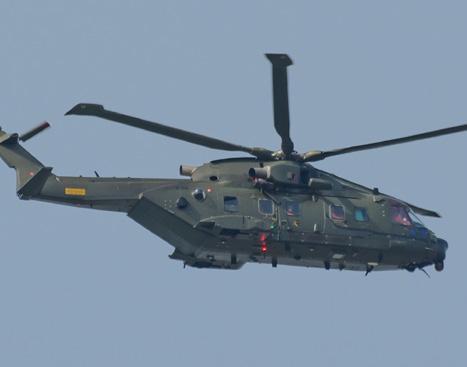
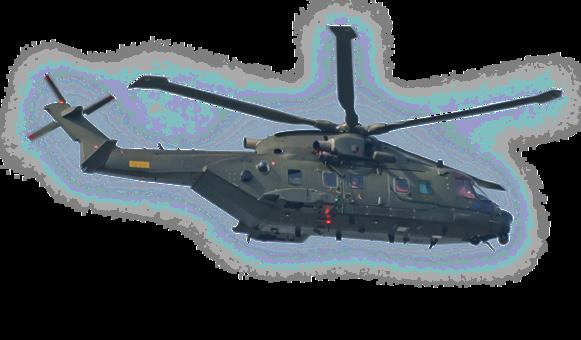
The battalion has twice deployed an escort and closeprotection company to NATO Mission Iraq in Baghdad. In doing so it has had to withdraw one of the regular infantry companies from the battalion to re-organise and re-train it to the tasks demanded from it when inserted on the ground in the Iraqi capital. Each deployment has been six months long but demanded the companies to be away from the battalion for an even longer period as a result of pre-deployment training and post-deployment activities. Troops from the XIII Battalion have also deployed to the United Kingdom in support of Operation Interflex – supporting the training of Ukrainian soldiers and units for combat in their own country. Most recently, in June 2025, approximately 100 soldiers from the battalion landed in Kangerlussuaq in Greenland, 300 kilometres north of Nuuk and conducted two weeks of training “in a different and more impassable terrain where use of vehicles is difficult over large distances”.5
The purchase of Merlin helicopters in 2007 provided a troop transport capability which the Danish military had never had before. However, the Danish Army did not have any air mobility doctrine as such and had to take inspiration from partners, especially British doctrine and training.
These exercises have allowed the battalion to better understand its airmobile role. From the onset, the XIII Battalion was meant to have a capacity which allows it to operate more as an airmobile unit than as an ordinary infantry unit. The purchase of Merlin helicopters in 2007 provided a troop transport capability which the Danish military had never had before. It also made it possible for the Army to introduce a new dimension to the battlefield – Vertical Envelopment. However, the Danish Army did not have any air mobility doctrine as such and had to take inspiration from partners, especially British doctrine and training. Deployment of the entire battalion is a very demanding task and would require a large number of helicopters if the whole unit was to be inserted in one lift. Much as proved to be the case for British airborne forces in September 1944, who were unable to assemble their full complement of units at Arnhem as part of Operation Market Garden, a failure to concentrate fighting power could prove disastrous. Being lifted into exercises by Merlin helicopters has allowed the battalion to examine how to prioritise the synchronisation of units available on the ‘battlefield’ when transport capacity is limited.
The XIII Battalion has been deployed numerous times on international missions. The pre-Mission Oriented Training is conducted by 2. Brigade, where units for deployment on operations that are not conducted in the framework of the Army’s 1. Brigade are taken through mission-specific preparation. The training can culminate in the brigade’s Mission Rehearsal Exercises, which are conducted shortly
The XIII Battalion of the Slesvig Regiment of Foot was stood up as an addition to the existing infantry units within the Danish Army. The availability of transport helicopters made it possible for the Service to include an entirely new dimension on the battlefield. This has led to numerous experiments relating to how executing Vertical Envelopment can work alongside other units and against an opponent. It has been a steep learning curve, at all levels. The brigade has had to learn how to train and prepare an airmobile unit and the battalion itself has had to seek inspiration from abroad in both technical and tactical training. The overall doctrine, however, has remained the same as with other units in the Army, albeit applied to a more physically demanding environment for the individual soldier and commanders, especially at the lower levels.
Since the Russian invasion of Ukraine in 2022, there has been a much greater sense of urgency in the Danish Army. Though the battalion has not seen operational action, it has contributed to overseas exercises in the Baltic countries and had units deployed within the NATO framework. The battalion, and indeed the whole regiment, has worked intensively to create a coherent and potent fighting force. Following the most recent Danish Army Reform, announced in April 2025, while the Slesvig Regiment of Foot will continue to exist, the role of the units within it are still to be decided. This might lead to the light infantry role being suspended in a Danish Army context. If so, the idea of Vertical Envelopment on the battlefield will not be a Danish feature in the years to come and this capability will potentially be lost.
5‘Danish soldiers train deployment in Greenland’, Danish Defence, 17 June 2025, forsvaret. dk/en/news/2025/danish-soldiers-train-deployment-in-greenland
Colonel Adjunct Professor Janne Mäkitalo Finnish Defence Forces
The history of the Finnish art of war is filled with examples of the successful use of light forces, but, in most cases, the victories cannot be solely attributed to the cleverness of Finnish tactics. Quite often the opponents, Russians or Soviets, have had weaknesses in their strategy, operational art, tactics, combat techniques, procedures, leadership or military technology, that have created favourable opportunities for our commanders and rank and file to exploit on the battlefield. But we should always keep in mind that there is no genetic superiority in the art of war. Successful battles have usually included surprise, exploitation of the conditions and terrain, mobility, concentration of the effect of the forces, use of reserves and intelligent operational ideas or clever tactical manoeuvre. Finnish forces have also acted in a way that their enemies’ strengths have been rendered ineffective or, better still, become a burden to them. These actions include getting extremely close to the enemy so it cannot use its air-to-ground capabilities and heavy indirect fire, or by channelling an opposing force’s mechanised columns away from main roads and into areas covered with dense forests, swamps or terrain generally too difficult for armoured vehicles to navigate. Similarly, the use of minefields and explosive and non-explosive obstacles in deep areas has proved key to funnelling the enemy into long columns with vulnerable flanks.
Mobility
was the weak point of our light infantry. Regiments and light detachments fought and marched by walking, riding bicycles or by skiing during the winter. Motor transportation
was rare.
Mobility and manoeuvrability as a challenge Before and during the Winter War (1939-1940) and the subsequent Continuation War (1941-1944), the Finnish Army had a light infantry unit within the divisional organisation. In addition to three infantry regiments, our division – which in fact could be considered as light infantry in nature – had a light detachment (Kevyt Osasto), a battalion-sized unit with dismounted cavalry squadrons and bicycle companies. This was intended to be used as an auxiliary force supporting the ‘real’ infantry forces by being fast, mobile and silent. During the Winter War a light detachment had a small headquarters, logistical support convoy, machine gun platoon, bicycle company and a cavalry squadron equivalent to a company. The bicycle company had four jaeger platoons and the squadron three dragoon platoons.1 The light detachment was intended to be used in missions that required speed but not necessarily heavy indirect fire support. Tasks usually included securing the flank of a division in march and reconnaissance by fire-type missions. A key potential role was to conduct surprise manoeuvre as a forward element to capture some critical landmark in the early stages of an attack of a division. This detachment was also used to delay the enemy as the infantry regiments withdrew.2
This overview of the Finnish use of light forces provides detail not only of their historical utility but some impressions on their contemporary status and role. It reflects the attitude and culture of the traditional Finnish art of war. Our membership in the Alliance is not taken into account – and it does not need to be in this case. Finland’s territory as a battleground does not lose its features no matter the NATO country flag that is attached to the shoulder of the light infantry soldier defending its freedom.
1Juha Hollanti, Alivoimaisen taktiikka. Suomalaisen taktisen ajattelun tarkastelu. Diss. Julkaisusarja 1: Tutkimuksia No.38, Tampere 2019, 117-118, 121-122.
2Hollanti, 122.
3Vesa Tynkkynen, Hyökkäyksestä puolustukseen. Diss. Second edition. Julkaisusarja 1, No. 1/2014. Taktiikan laitos, Maanpuolustuskorkeakoulu 2014, 254; Antti Juutilainen, ’Suomalainen hyökkäystaktiikka jatkosodassa’, in Mikko Karjalainen (ed.) Jatkosodan taistelut. Maanpuolustuskorkeakoulu, Saarijärvi 2002, 15–16, 20; Marku Wahlstein, ’Divisioonan kevyt osasto. Sotiemme historiassa muiden varjoon jäänyt joukko’, Kylkirauta 3/2010, 38–41.
4Hannu Liimatta, ’Jalkaväen historiakatsaus. Jalkaväen liikkuvuuden ensimmäiset vuosikymmenet’, Jalkaväen vuosikirja 2019–2020. Joensuu 2020, 22–23. 5Martti V. Terä, ’Jalkaväen asejärjestelmän tutkimus ja tulivaikutuksen kokeilut Suomessa ennen talvisotaa’, Tiede ja Ase 24. 1966, 87; Marko Palokangas, Räjähtävää tyhjyyttä. Sissitoiminta suomalaisessa sotataidossa. Diss. Julkaisusarja 1, No. 17. Maanpuolustuskorkeakoulu, Sotahistorian laitos, 2014, 196; Veikko Koppinen, ’Jalkaväkirykmentin organisaatio sotakokemustemme valossa tarkastettuna’, Tiede ja Ase 7. Helsinki 1949, 14-18; Tynkkynen 2014, 254.
When the character of the Continuation War changed from offensive operations to static trench warfare, the third regiment of each division was demobilised and the light detachment was abolished in 1942. In addition to two remaining regiments, a new separate battalion was added to the division organisation. These battalions had three regular infantry companies and a machine gun company. Separate battalions were used in the same manner as a battalion of an infantry regiment.3
Mobility was the weak point of our light infantry. Regiments and light detachments fought and marched by walking, riding bicycles or by skiing during the winter. Motor transportation was rare. Only if a division was transported from a front to another were trains used. During a flanking manoeuvre units marched through the forests even if the distance was tens of kilometres. Ammunition and heavy weaponry were transported by horses or by sledges during the winter. The speed of an infantry attack was the advancing speed of an infantry soldier and the horse of the support column.4 Often very tired after the march, the troops were still supposed to launch the attack.
Based on our experiences during these two conflicts, the Finnish armed forces decided to abandon divisions and regiments and adopt brigades as its basic organisation with all the branch units. Divisions were strong but too heavy to be used in traditional manoeuvres and forest tactics, such as launching pronged attacks around the enemy formation to hit it from the rear and cut its lines of communications. Even regiments were regarded as too heavy for mounting offensive operations through forests. Divisions were also too heavy and slow to be used in mobile defence which combined delay, defence and offence.5
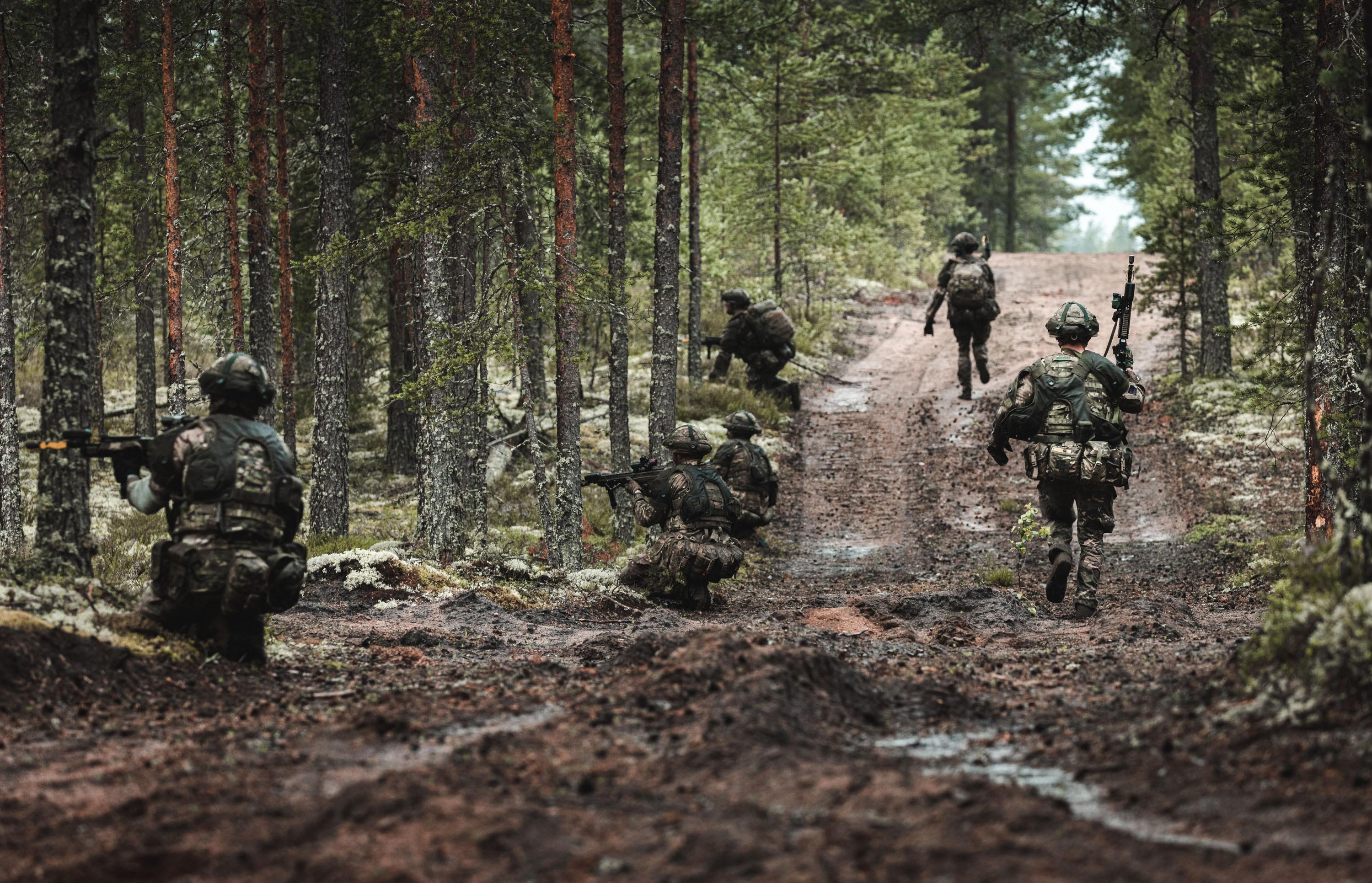
Most of Finland is completely or mostly unsuitable for mechanised forces to use. Swamps cover five per cent of the national territory and forests a further 75 per cent.
Qualities of the operational environment
There are three principal reasons for the Finnish armed forces adopting light infantry formations:
n Most of Finland is completely or mostly unsuitable for mechanised forces to use. Swamps cover five per cent of the national territory and forests a further 75 per cent; there are also 187,888 lakes. While the agricultural land that covers eight per cent of Finnish soil is suitable for mechanised forces for most of the year, heavy rain in the autumn causes major problems for main battle tanks. There are also very limited opportunities for mechanised units to carry out pincer movements through the forests, given local routes are narrow and the road sides are rich in excellent spots to conduct ambushes;
n While armoured and mechanised formations are needed, it has been recognised that these should not form the main body of our army. We should not try to compete with our adversary in a symmetrical mechanised forces against mechanised forces fight because the odds have always been against us. Our solution has been to adopt asymmetrical warfighting by taking advantage of our national conditions and light infantry provides the key element for this approach;
n A key lesson learned from our previous wars against the Soviet Union was that, if outnumbered, you should not choose static defence as a method of resistance. Adopting such an approach leads to progressive exhaustion and destruction by massive fires. Instead, if you are militarily the underdog, you should withdraw when the enemy is strong, hit them when the opportunity presents but preserve your main forces. Withdrawing to the flanks, away from the columns of an enemy armoured force, creates logistical
problems for the opposing force as their supply distances are stretched. The flanks of the columns also represent valuable and vulnerable targets.
Underpinning these factors, the previous evidence confirms that light forces are an excellent tool for preparing the battlefield for the main counter attack, breaking the enemy’s order of battle, exhausting the enemy, creating chaos and disrupting its morale.
The Finnish army introduced brigades in the late 1950s as the basic formation of land forces. From lessons learned on the use of infantry regiments during the Continuation War, the guidance to the planning staffs was that brigades should be able to operate in large forested areas and to be self-sufficient. Therefore a brigade should have all the branches presented in its organisation in order to be able to conduct independent operations with all necessary combat support and combat service support.
Mobility of the infantry brigade relied almost completely on horses until the late 1960s. Field tests exploring the use of agriculture tractors as towing vehicles for different support weapons and as personnel carriers began in the early 1950s and led to the adoption of a fleet of Finnish Valmet tractors and their trailers. More importantly, notification was given that, in the event of war, thousands of civilian tractors and trailers would be mobilised. The military’s pool of motor vehicles also grew through the increased production of domestic off-road truck models designed in the late 1960s. Theses were primarily intended to be used for transportation of material; war-time reservist engineer companies would use civilian delivery trucks mobilised from businesses. The number of military-grade off-road trucks was still only a
small percentages of the total needed. It was only during the late 1960s and early 1970s that the army received its first armoured personnel carriers but they were used exclusively by our two armoured brigades.6 Beginning in the 1970s, bicycles were more commonly used as a means of transporting the troops into action. For the most part, training still continued to be conducted using feet or skis.
Infantry brigades were not referred to as light troops as they included units of all combat support and support branches. Two types of jaeger brigades, which were highly mobile across all-terrain, were introduced in the 1990s. They were intended to be used to conduct decisive counter-attacks alongside our armoured brigades. Experiences of the use of jaeger battalions equipped with tracked trucks such as the Swedish Hägglunds Bandvagn BV206s and Sisu Nasu were promising. These battalions could move through semi-rough and densely forested areas even during night time and in every season of the year. The only disadvantage was that they lacked the protection of armour. Another type of jaeger brigade was equipped with Sisu Pasi armoured personnel carriers (APCs). All the weapon systems of a jaeger battalion could be transported along with the infantry, even the 120mm mortars.
At the beginning of the new millennium, the Finnish army discovered that the old infantry brigades were becoming obsolete but the country’s economic situation meant it was not possible to modernise them. Researchers were given a challenging task: would it be possible to cover the gaps in the amount and quality of military material through the creation of new tactics? The Army Academy’s Land Warfare Centre conducted a long and intense study project and, as a result, in 2011 the doctrine and tactics of ‘Army Battle 2015’ was
6Liimatta, 24, 28–30; Petteri Jouko, ’Panssarijoukkojen kehityskaaren murroskohtia’, Jalkaväen vuosikirja 2019–2020. Joensuu 2020, 35.
7All these units and commands were to be mobilized in the case of military threat. Duties for peace time brigades and regiments are readiness and training and producing units for the war time formations.
introduced. Old infantry brigades were dismantled. Weapon systems that were still useful were transferred to two types of new battalion battle groups – battle group (wheeled) and battle group (APC) – and to so-called dispersed battalions. These units were under the command of military areas and infantry brigades who were in charge of a large area of responsibility. The area of responsibility of the new infantry brigade was as big as the area of responsibility of the former army corps; the area of responsibility of a military area could be even bigger.7
Large areas created opportunities for battle groups to be used in a creative way. The Land Warfare Centre research had proved that, even when fighting from well-fortified positions, a battle group would be destroyed from the road sides. Therefore, ‘Army Battle 2015’ called for the use of barriers, specifically numerous minefields, along with the demolition of all the main roads and bridges, while carrying out ambushes, avoiding a decisive battle and withdrawing into the deep forest to continue the fight. It would not matter if the enemy continued advancing because it would encounter minefields guarded by anti-tank missiles, artillery fire and quick ambushes of jaeger platoons supported by larger, sudden raids by jaeger companies.
In addition to these elements of the plan, in the event that an enemy approached a location that was to be held by troops no matter the circumstances, a blocking battalion battle group would be deployed. This defensive fight of a battle group (wheeled) would be supported by a counterattack made by a battle group (APC), cutting the enemy column in half. The battle group (wheeled) would then seek to intensify the battle. Throughout such an action, the infantry brigade’s 155mm artillery would have supported all the battle groups, supplementing the effect of each group’s 122mm artillery battalion. The intent would be to create favourable circumstances to conduct an operational counter-attack with an army corps consisting of armoured and wheeled battle groups.
During the late 2010s the Finnish Army considered

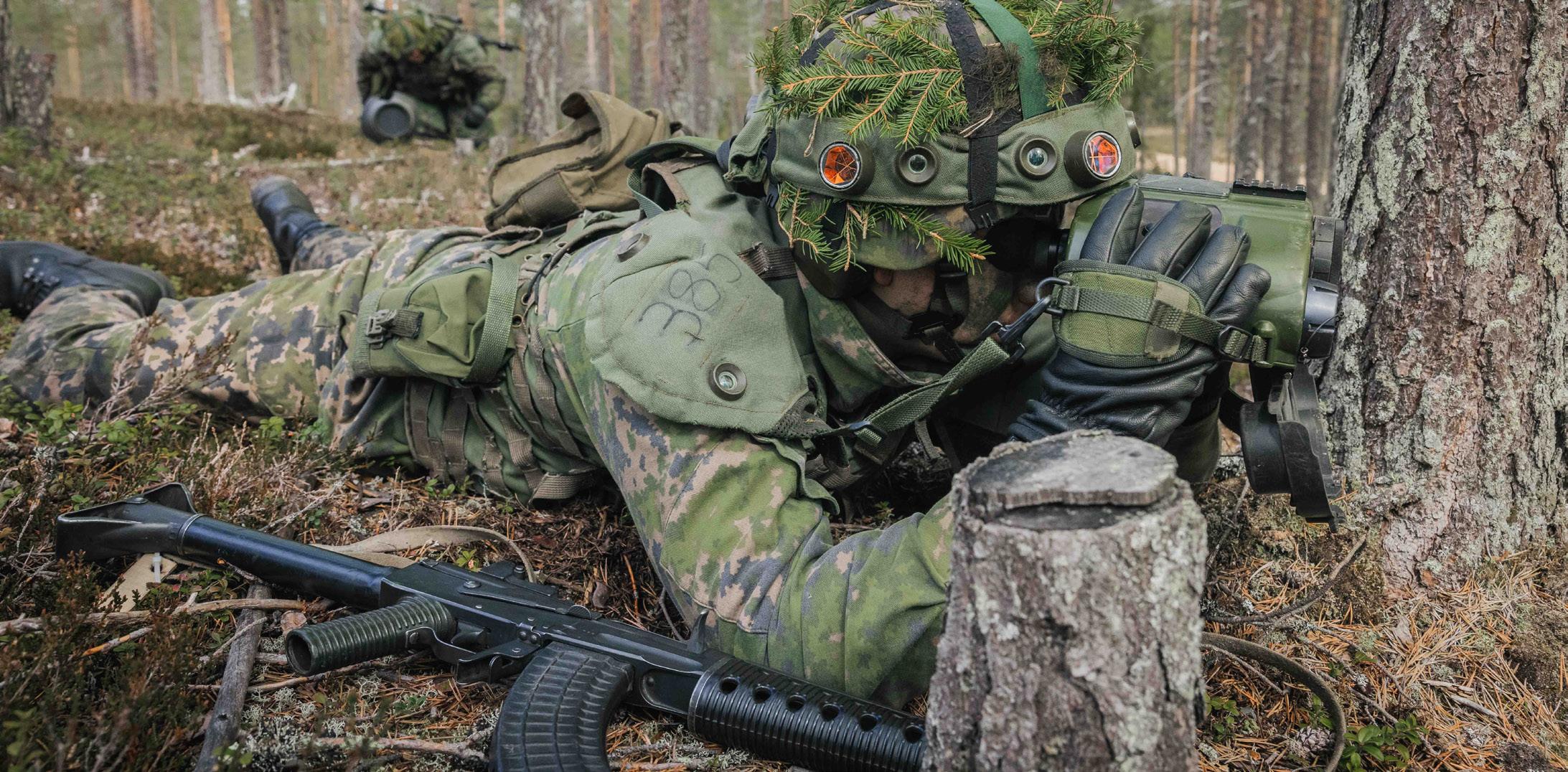
establishing a new type of battalion-sized light infantry unit.8 It was assessed that in the future the army would need an agile and lightly equipped type of organisation which would fight to create favourable circumstances in an area of responsibility and allow for subsequent decisive operations by mechanised and motorised units.9 After thorough research, simulations, testing and war games, the decision was taken to cancel the project. Reasons for this are classified but it is possible to say that there are similarities with why the combat effectiveness of the Russian battalion combat teams in the war in Ukraine have revealed themselves to be inadequate. Without sharing details, it is possible to state that light infantry should be used only in those areas of the operational environment that the main battle tanks and infantry fighting vehicles cannot operate.10 If the intention is to fight against enemy mechanised units or to fight against any units in open ground, funding for light forces is very unlikely to develop cost-effective and survivable capabilities.
Our experiments and simulations with light battalion-size forces during 2018-2020 proved that there are critical limitations concerning the size and firepower of the light forces. Therefore a battalion-sized light infantry unit cannot have a task of deliberate defence and hold on to a critical terrain point. If a light battalion does not have access to strong artillery and anti-aircraft support, the unit’s survivability is not very high. Drawing on recent experiences offered by Russia’s unlawful aggression against Ukraine, these conclusions could perhaps now be challenged. Ukraine has developed such a strong air defence that the Russian air force has resorted to launching missiles and glide bombs very distant from the target area. Noting that both countries manufactured about 1.5 million drones during 2024, unmanned systems have been used as a substitute for precision-guided artillery munition and on occasion even replaced artillery barrages.11
Lessons identified and learnt from Russia’s war in Ukraine
The Finnish military has made several observations from the war in Ukraine that should be taken into consideration when developing new types of units, such as light forces:
n All infantry units should be able to fight in built-up and urban environments;
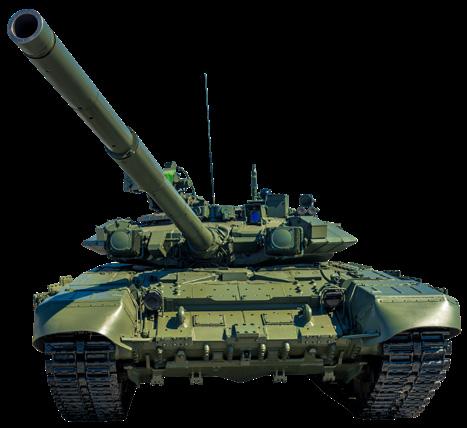
Light infantry should be used only in those areas of the operational environment that the main battle tanks and infantry fighting vehicles cannot operate. If the intention is to fight against enemy mechanised units or to fight against any units in open ground, funding for light forces is very unlikely to develop cost-effective and survivable capabilities.
The key element of our light forces has been to create fourfold, rather than threefold, units. Historically, we have not achieved that goal. A threefold battalion with only three companies has never been considered as an effective organisation in Finnish tactics. Finnish terrain is difficult, which creates opportunities to use reserve units to inflict a final blow to the enemy. In defence, three units can be used effectively when grouped in a formation that enables them to support each other. But if the enemy has succeeded in occupying major parts of the fortifications of one unit, there is a need for an immediate counter-attack by a fresh unit. For offensive operations, Finnish tactics often include a need to take an important landmark before the beginning of an attack. And if you attack with two units in a two-sided pincer movement you will need a third unit either to tie the enemy in the middle or to be used in exploitation of the success, for example in chasing a withdrawing or retreating force. Reserve forces are only put aside to deal with any unfavourable turn in developments.
n Static defence and attritional warfare should be avoided as much as possible;
n Consumption of ammunition is greater than previously calculated; an infantry soldier with an assault rifle should carry up to 12 magazines of ammunition and four hand grenades;
n Night-vision optics for all weapon systems are needed;
n Electro-magnetic capabilities are essential (awareness, detection, jamming);
n Command posts should be placed in underground facilities;
n Firing positions and trenches should be covered;
n Units need to be able to care for wounded troops for several days.
More specifically for light forces, troops need to be able to handle multiple types of equipment including assault rifles, sniper rifles, hand grenades, mines, explosive charges and mortars. The importance of personal marksmanship remains critical with more training time spent on a shooting range. Training should also prepare for unarmed close-quarters and even hand-to-hand combat, as well as precision navigation allowing for target designation of various capabilities.
In conclusion, light forces are a good tool for weakening the enemy but the major blow in a decisive operation should be conducted by a strong armoured force. Most suitable for use in rough and complex terrain as opposed to open ground, they need combat support and combat service support units to be able to conduct truly independent operations. They are also not a solution to the problem of delivering cost-effective ground forces in a difficult economic situation.
8Rainer Peltoniemi, ’Jalkaväen suorituskykyä kehitetään määrätietoisesti’, Jalkaväen vuosikirja 2019–2020, 40, jalkavaensaatio.fi/wp-content/uploads/2020/11/Jalkavaen_ vuosikirja_2019-20_final.pdf
9Mika Jääskeläinen, ’Kevyen jalkaväen merkityksestä taistelukentällä nyt ja tulevaisuudessa’, Jalkaväen vuosikirja 2019– 2020, 2020, 47–50.
10Jääskeläinen 2020, 48.
11Jääskeläinen 2020, 49; presentations given by the Ukrainian armed forces and MoD officers and officials in the Military Innovations in Contemporary Warfare conference in Kyiv, Ukraine, 15/16 April 2025.
Lt Col Audun Jørstad [with Professor Andrew Strewart, CHACR] Commander Jegerbataljonen/Borderguard/ Finnmark Brigade
With the boundaries of the Cold War conflict between the two global superpowers fixed, Norway was an area of great strategic importance offering key terrain and a potentially decisive geographical advantage for both sides. While a 1947 American intelligence review concluded the country was “not a military power and has no expectation of becoming one”, it also assessed it could be easily defended against conventional attack since fortification of its mountainous coasts and interior would make penetration from the outside extremely difficult.1 Yet, as was noted by one Norwegian officer writing in 1964, while an elongated land area covered “nearly one-third of the entire front of NATO facing the Soviet Union”, it was the
1‘Norway’, Central Intelligence Group, Situation Report (SR) 5, 1 September 1947.
2Lt Col Arne Haugan, ‘Defense of Norway’, Military Review (Vol.44, No.1; Jan 1964), 17.
3Karsten Friis, ‘Norway: NATO in the North?’, in Nora Vanaga and Toms Rostoks (eds.), Deterring Russia in Europe: Defence Strategies for Neighbouring States (Taylor & Francis Group, 2018), 129-130.
4Håkon Lunde Saxi, ‘Norway Between the “High North” and the Baltic Sea’, PRISM (Vol.10, No.2; 2023), 114.
5Friis, ‘Norway: NATO in the North?’, 129-130.
littoral which would be most contested.2 With the expectation that allied military reinforcements would be rapidly sent to the northern flank should a threat ever materialise, retaining control of ports and landing areas was critical. If the Soviets could deny access to these and occupy the country, they would outflank the defence of Germany and the remainder of Western Europe. Other than the change in some of the names, the strategic position has changed little today.
Norway’s defence policy was often referred to as a combined ‘deterrence and reassurance’ strategy.3 The latter element sought to reduce potential tension in the High North by sending a message that its territory would not be used to launch an attack against strategically important Soviet military installations on the Kola peninsula.4 In terms of its military forces, there was a territorial, static approach with a focus on a societal level of resolve and resilience alongside a large buildup of defence infrastructure in strategic locations in northern Norway.5 The recommendations of the Defence Commission of 1946 underlined the importance of strengthening the Norwegian Armed Forces by means of a total defence concept. The country’s defence should be built on both military forces and a broad civil emergency preparedness. In peacetime the armed forces consisted of about 30-40,000 personnel, including conscripts. However, about 350,000 reservists could be mobilised in case of war, with a further 200,000 civilians mobilised to support the military. Large parts of the civilian infrastructure and resources were to be transferred to military

use in case of war; in total, about 20–30 per cent of the population would be involved in defending the country.6
By the mid-1960s, with the country spending a very healthy 3.6 per cent of gross domestic product on defence, there was a small but active army which roughly corresponded to three infantry divisions.7 It comprised one brigade in northern Norway, a reinforced battalion group in southern Norway and a few other small armoured detachments. The northern brigade had its major garrisons around Bardufoss with a strong company of Royal Guards in Finnmark acting as a garrison unit and guarding the Norwegian-Soviet border, a unit in Skibotn protecting the key road from Rovaniemi and another unit assigned to the airfield on Andoy Island. The brigade used track-laying vehicles, which can manoeuvre in snow, packhorses and skis. The plan was to halt any potential Soviet attack in Troms but the Norwegian Army only expected to be able to hold the line for a few weeks before it would need allied reinforcements. While Sweden and Finland share a 2,366 kilometre border with Norway (92 per cent of its total land border), Norway has only a 198 kilometre land border with Russia in the strategically vital Finnmark, but no defence was ever planned there.
Norway also placed considerable restrictions on NATO and allied training.8 The demarcation line for foreign naval vessels and military aircraft was eventually moved to 24° east, near Hammerfest, providing a buffer of about 250 kilometres to the border but ground forces were not allowed to conduct any activities in Finnmark. In the 1980s it was agreed that the US Marine Corps could preposition military material for a brigade although the government in Oslo decided it should be stored in central Norway, about 700 kilometres from the Russian border, to ensure it was not viewed as an offensive military build-up.9 This policy was not relaxed until 1995 when more general guidelines were established allowing small allied land forces units to participate in military exercises in Finnmark.
In March 2024 Nordic Response involved more than 20,000 soldiers from 13 nations conducting exercises in the northern parts of Norway, Finland and Sweden. Although Exercise Cold Response takes place in Northern Norway every other year... 2024 was noted as representing something new.
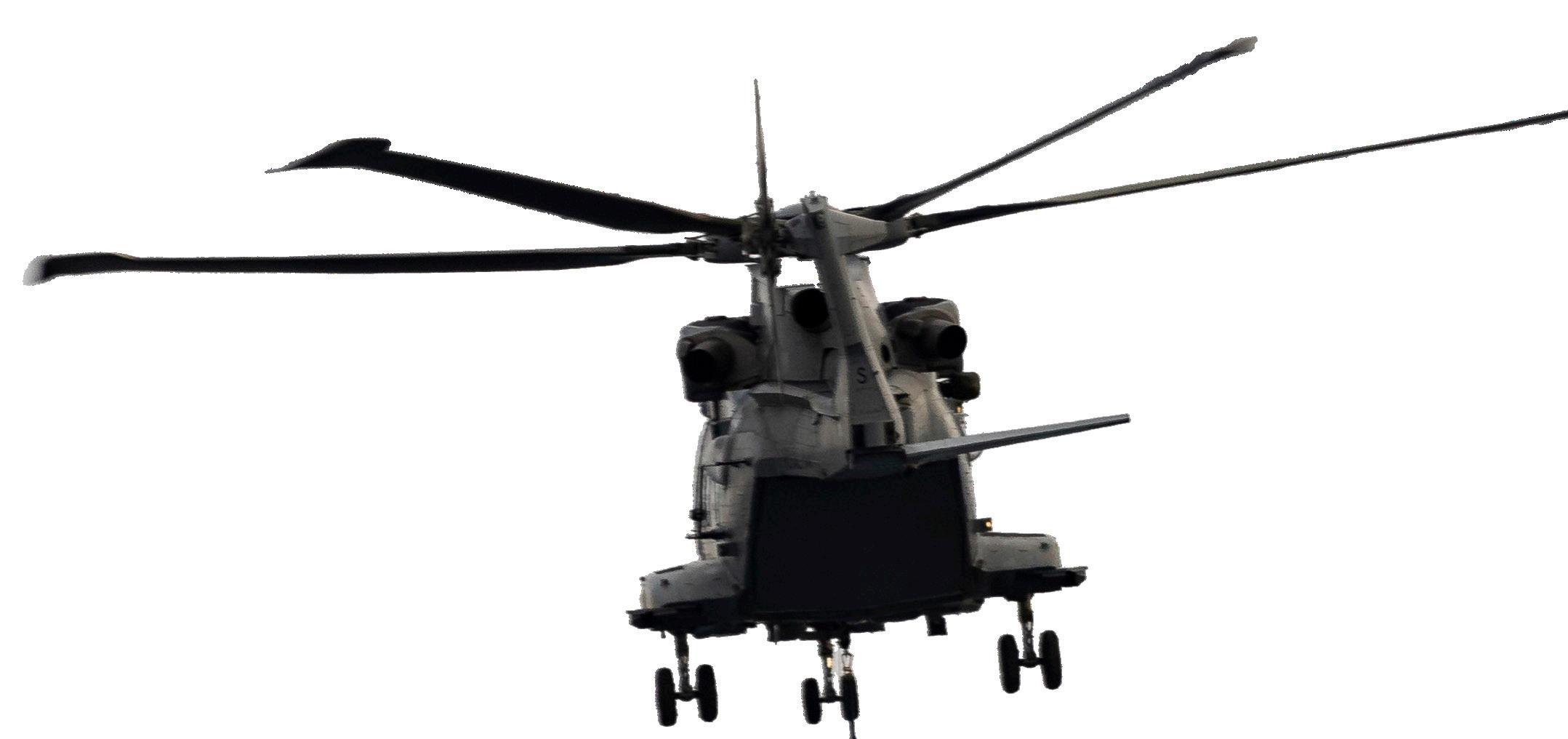
In 1992 Norway had 13 brigades and over 200 Leopard and Patton tanks but, in the years following, the country’s military offered only a limited contribution to NATO missions, initially only deploying support units.10 In 1997 a mechanised infantry battalion was sent to Bosnia and played an important role but two years later, during the conflict in Kosovo, a similar forces took four months to arrive on the ground. While the Norwegian government was determined to make the armed forces more flexible and capable of rapidly partaking in missions abroad, it gradually became apparent that the equipment was aging and needed improving, and the subsequent reform was an often slow and painful process. In the long-term plan published in
6‘Support and Cooperation: A description of the total defence in Norway’, Norwegian Ministry of Defence/Norwegian Ministry of Justice and Public Security, May 2018, 8-15.
7Haugan, ‘Defense of Norway’, 21-22; Gonzalo Vázquez, ‘Norway Ends Its Holiday From History’, CEPA, 3 May 2024.
8Per Erik Solli and Øystein Solvang, ‘Deterrence and (Re)assurance in the High North: Finland and Norway Compared’, Norwegian Institute of International Affairs, Policy Brief (4/2024), 2-3.
9Friis, ‘Norway: NATO in the North?’, 129-130.
10Peter Viggo Jakobsen, Jens Ringsmose, Håkon Lunde Saxi, ‘Prestige-seeking small states: Danish and Norwegian military contributions to US-led operations’, European Journal of International Security (Vol.3, Part 2; 2018), 271.


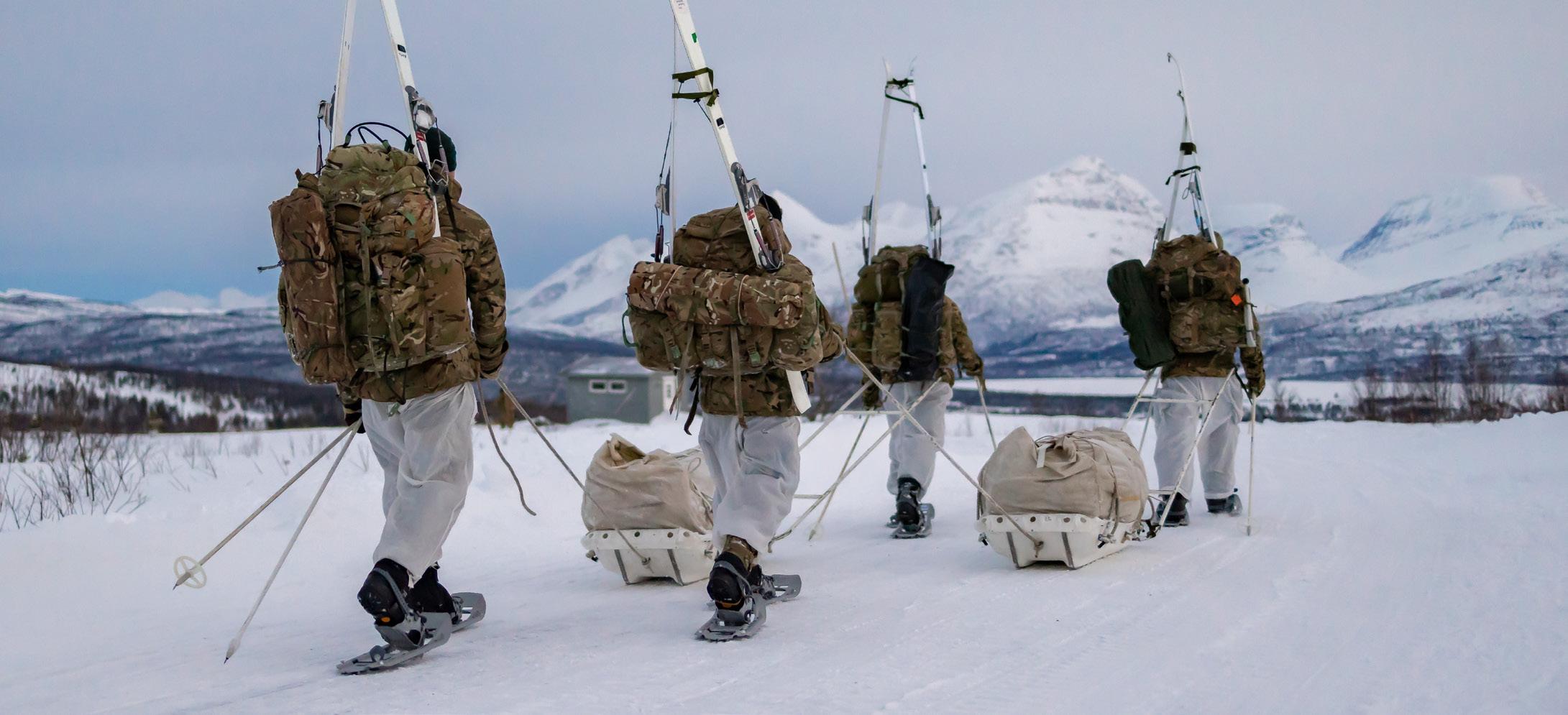
The main goal is to make the modern light infantry soldier more deadly and effective, especially in a demanding and changing Arctic environment.
2012, the phrase used to define the main purpose of the armed forces was ‘war-preventing threshold’.11 Within a few years the Norwegian Army had been reduced from 13 brigades to one, the Brigade North comprising three manoeuvre battalions and support units. Forming the basis of the Norwegian Army, it maintained an Article V stance and, with the Telemark battalion, it had a high readiness standby force.
Since 2005, Russia has reopened more than 50 Soviet-era military bases in its northwestern territory of the Kola Peninsula, which hosts the country’s second strike nuclear arsenal and the Northern Fleet headquarters.12 Following on from the annexation of Crimea in 2014, the invasion of Ukraine in February 2022 has reduced dialogue and cooperation with Moscow to a bare minimum. In March 2024 Nordic Response involved more than 20,000 soldiers from 13 nations conducting exercises in the northern parts of Norway, Finland and Sweden.13 This formed part of NATO’s overarching exercise, Steadfast Defender, and tested the ability to move reinforcements from North America to Europe, securing communication lines in the Northeast-Atlantic and carrying out landing operations on the Norwegian coast and, finally, the reception of allies and joint operations in the face of a fictional invasion of Finnmark in Northern Norway. Although Exercise Cold Response has a long history and takes place in Northern Norway every other year, large exercises are
11Friis, ‘Norway: NATO in the North?’, 134-135.
12Yongjae Kim, ‘A New Arctic: Kirkenes, Russia, and NATO Statecraft’, Columbia Political Review, 12 December 2024, cpreview.org/articles/2024/12/a-new-arctic-kirkenesrussia-and-nato-statecraft
13‘Nordic Response: Over 20,000 Soldiers From 13 Nations Will Practice Defending NATO’s Northern Flank’, High North News, 2 Feb 2024; ‘Nordic Response 2024’, Norwegian Armed Forces, 20 Dec 2024, forsvaret.no/en/exercises-and-operations/ exercises/nr24
14‘The Norwegian Defence Pledge: Long-term Defence Plan 2025-2036’, Norwegian Ministry of Defence, April 2024.
mainly conducted in Nordland and mid-Troms and 2024 was noted as representing something new.
A key development has been the ‘Defence Pledge’, announced in 2024 as a response to “a deteriorating security situation”, which has a 12-year horizon.14 Signalling a commitment to increased spending and strengthening through the purchase of new platforms, its goal is to allow Norway’s Armed Forces to be “better equipped and prepared if deterrence fails”. For the Army it represented a welcome promise of enhanced land capability and fighting power with confirmation it would expand back to three brigades supported by longrange precision fires and new helicopters. In a three brigade construct, Brigade North in Troms will be a heavy infantry brigade with four mechanised manoeuvre battalions and associated support units, while Brigade South will be established as a reservist-based light-motorised brigade to secure allied reception areas and act as a mobile reaction force. In addition, there will be a Finnmark Brigade – what has been termed as a Norwegian national forward presence – a mixed brigade with strengthened leadership, capability and flexibility with a light infantry battalion, an artillery battalion, an engineer company and an ISTAR [Intelligence, Surveillance, Target Acquisition and Reconnaissance] squadron. In addition to these manoeuvre-brigades there will be at least five supporting regiments. By 2036 the intent remains for there to be a fully operational Norwegian division with some potential by 2030 to possibly have an integrated Norwegian-Swedish division.
Key within this order of battle is the traditional infantry battalion (light, motorised or lightly mechanised), which has been the backbone of the Norwegian Army. As late as 2001, wartime mobilisation would still produce 13 brigades or combined manoeuvre regiments and 12 of these had a core of three infantry battalions or more. These mainly light or motorised units were accompanied by different combinations of specialised light infantry, such as ski-infantry companies,
recce-squadrons and recce platoons. Up to 2005, in some parts of Norway, especially the northern Finnmark region, these included dedicated Jeger forces (as they are described in Norwegian terms), specifically the Jegerbattalion in Porsanger and the Border Guard battalion in Kirkenes. These were very well trained light infantry conducting patrols up to company level and with exceptional ability to endure and operate behind enemy lines. They were often tasked with offensive action, delivering anti-armour and traditional combined arms effects trough different ambush tactics including the use of mines. Through the early 2000s their focus shifted from more offensive actions and tasks to delivering intelligence, surveillance and reconnaissance and missions similar to longrange reconnaissance units. Some units did keep offensive capabilities and conducted relevant training because of deployments to Afghanistan. But as the army was reduced so that by the end of 2020 it consisted of only three manoeuvre mechanised battalions, almost all light forces had disappeared with only those in eastern Finnmark remaining.
The use of light infantry and Jeger units is now rapidly evolving. Today there is one Jegerbattalion on the Russian border, a 900-strong force of which 700 are conscripts and the remainder permanent troops. There are always two companies protecting the frontier and, in addition, working closely with civilian agencies to provide support. There is also training on how to conduct Jeger operations and the key basic skills required, not just physical training and weapon proficiency but also adaptation and a positive mindset philosophy. The main goal is to make the modern light infantry soldier more deadly and effective, especially in a demanding and changing Arctic environment. This process of updating a doctrinal approach also draws on all the lessons identified from the conflict in Ukraine and the indication that the modern battlefield has become even more deadly with the considerable amount of drones and high-explosives now being employed. Technological development within all important aspects is tested and adjusted under Arctic conditions. There is both a ‘high-tech’ and ‘low-tech’ approach but with a continuing focus on ‘equipping the man’ and not ‘manning the equipment’. Taking the harsh environment into consideration, the old but good basic infantry traits and skills still apply. The challenges of the modern battlefield require ever harder and more resilient infantry soldiers, with a strong ability to think and fight independently and alone.
Among the Jeger units, there are two methods or approaches when considering how to fight a near-peer enemy in the near future. The first and most tempting approach is joint, also described as the close synchronised approach. This is where effect from our own weapons is tightly synchronised with the effects from other brigades or brigade-effectors, joint-effectors
or Army level precision fires. Our own firepower is employed to accompany the big guns and munitions delivered by higher echelon and manoeuvre brigades. This approach demands a lot of synchronisation and an almost seamless and always working command and control structure. The complexity is on the battalion and up but, when it works, it will deliver devastating effects in time and space. The effect will arrive when the commander needs it, often immediately. The approach is, however, vulnerable to enemy electronic warfare and demands a lot of tech-skills.
The second approach is autonomous where Jeger forces from patrol to battalion level operate more independently and isolated from other units and assets. The effect is from the weapons they carry on their backs or on their all-terrain vehicles. The need for tight coordination on the tactical and joint level will not be that urgent. At the same time, this must not be mistaken as a kind of guerilla warfare. Each task given to Jeger sub-units will help to fulfil higher echelons and commanders’ intentions. Although the effect will take a much longer time to achieve, the belief is that it will present a greater opportunity for these forces to survive in the operating environment and for a longer period of time. The signature of these forces will be a lot smaller, especially in the electromagnetic field, with almost no use of comms or radios. The complexity will be on the company-level and down. Such units must have a good mix of capabilities, including their own UAS [Unmanned Aircraft Systems] and counter-UAS systems, but they can compete with special forces for access to air/drone support.
Historically, certainly during the last 40 years, there have been similar approaches and discussions about how to make best use of such forces. There have been different configurations in light infantry and Jeger units proposed but without a clear thought on how to utilise them on a modern and very violent battlefield. The two most recently adopted approaches can be combined within a battalion or brigade or could vary from phase to phase. The most important thing is to choose the right approach after having analysed strengths and weaknesses during planning of both home and enemy forces. The approach must also be synchronised with the overall plans and intentions and a careful consideration of the respective willingness to take risk and absorb losses over time. Moving forward, there is considerable merit in considering both approaches (or more). The imperative is to be flexible and to be able to change tactics and approaches quickly. Traditionally, Norwegian infantry officers have focussed more on basic level techniques, soldier skills and equipment. This has been entirely appropriate until now; future infantry officers have to be agile with their decision-making and adopt the smartest tactical approach to reflect the situation they face.

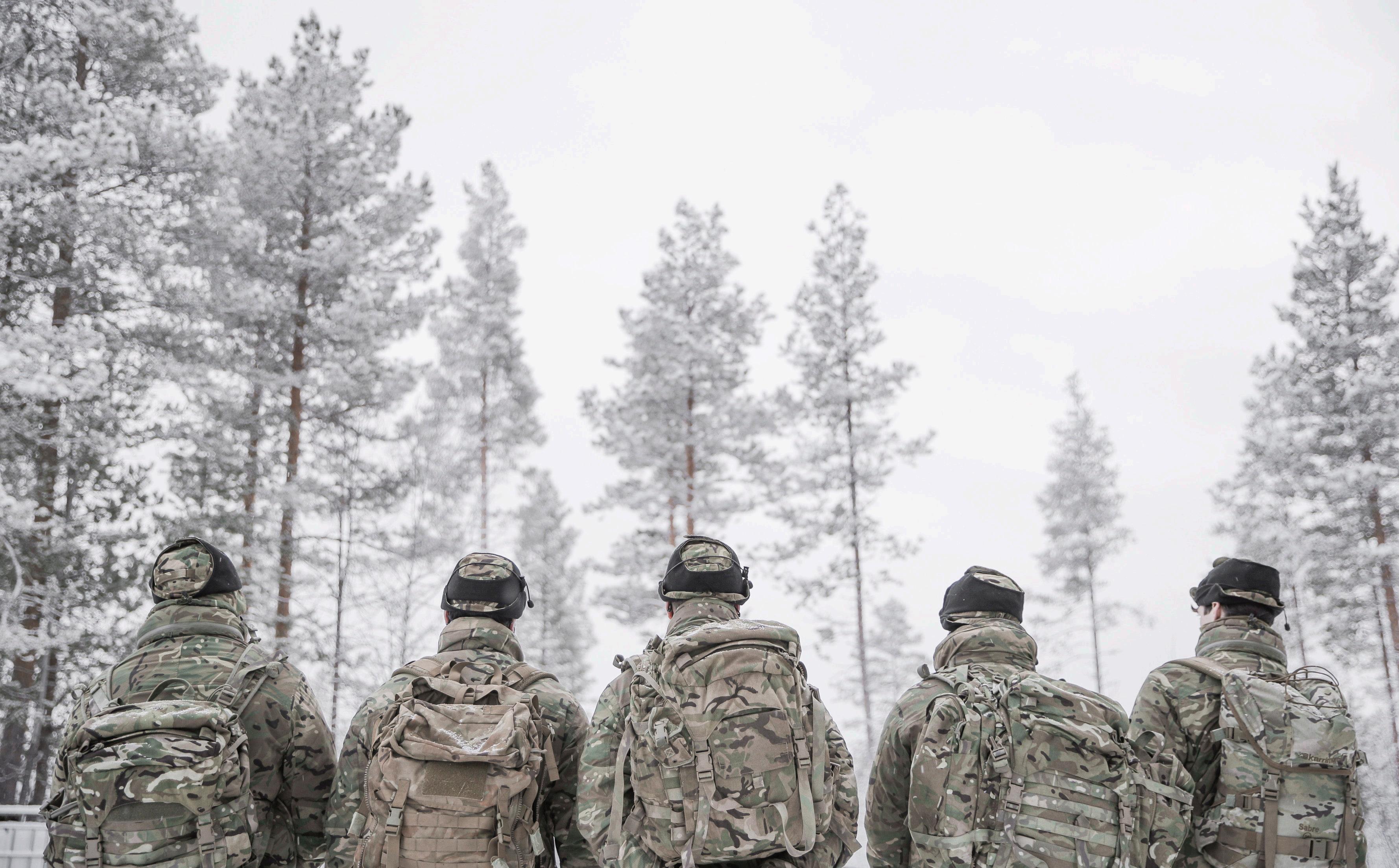
Professor Andrew Stewart Head of Conflict Research, CHACR
Although not specifically included in this study, it is the United States that has been the key conceptual driver in terms of the use of light forces. At an April 1980 symposium in Hamburg convened for the Commander ACE Mobile Force (Land), the head of the United States Army Combined Arms Centre at Fort Leavenworth set out the key benefits of a light division over other units. These included better deployability, being less manpower intensive and offering improved reconnaissance and surveillance.1 In terms of fighting power, in addition to having better survivability, they offered “more than twice the tactical mobility than before” and “twice the tank killer punch”. Viewed overall as being a more effective organisation, a final conclusion was that these offered “a means to exploit technology that would enhance their battlefield capability”. Entering the final decade of the Cold War, and with a growing body of research arguing that such forces had a utility, not least in creating a balanced force structure, the impact of technology was a key theme. As one defence analyst put it, “light forces now have the weapons to destroy the tank and the fighter”.2 Even then, however, to be able to survive and fight they would need to be “organized for two contextual extremes: agile and amorphous, capable of striking and fading before the opponent can react, and static and abnormally well entrenched with flanks and rear suitably covered by agile forces”.

providing the foundation of small, agile and swiftly deployable units with relatively few vehicles. With a strength of around 10,000 troops – creating “a very austere logistical footprint” – these would be available for rapid deployment in response to any global crisis.3 Although subsequent spending cuts would leave only the 10th Mountain and 25th Infantry Divisions, light forces were heavily drawn upon in the subsequent years and remain central to US military thinking, “a force of disciplined and well-trained soldiers that [can] deploy quickly and conduct a broad set of operations in austere conditions”.4
General John A. Wickham drove the concept [light infantry] and championed what he termed ‘Soldier Power’: “a combination of physical and mental toughness, tactical excellence, offensive mindedness, and decisive leadership.”
By the end of the Cold War the United States had 18 active combat divisions, one-third of which could be termed as light infantry. With his 1984 White Paper, Army Chief of Staff General John A. Wickham drove the concept and championed what he termed ‘Soldier Power’: “a combination of physical and mental toughness, tactical excellence, offensive mindedness, and decisive leadership”
1Major Richard R. Babbitt, ‘The Light Infantry Division: How Many Are Needed?’, US Army Command and General Staff College (Masters of Military Art and Science, 1985).
2Steven L. Canby, ‘Territorial Defense in Central Europe’, Armed Forces & Society (Vol.7, No.1; Fall 1980), 52.
3Donald P. Wright, ‘Light Fighters: The 7th Infantry Division (Light) and the Late Cold War, 1983-1989’, Army History (PB20-25-1 No.134; Winter 2025), 7.
4Wright, ‘Light Fighters’, 19.
5Major-General T. N. F. Wilson D.S.O., M.C., ‘The Role of Infantry’, Royal United Services Institution Journal (Vol.89, Issue 553; 1944), 7.
6Eric Robson, ‘British Light Infantry in the Mid-Eighteenth Century: The Effect of American Conditions’, The Army Quarterly (Vol.63; January 1962), 222.
7Captain C.C. Pearson, ‘Light Infantry: A Suggestion!’, Royal United Services Institution Journal (Vol.45, Issue 275; 1901), 66-69.
The British relationship with light forces has been more uncertain. Speaking as Director of Infantry within the War Office, Major General Thomas Wilson offered a 1944 perspective on what was needed to be an infantryman: “Marksmanship and skill with his weapons are as important as ever, but there are now many more weapons with which he has to be proficient. The tempo of war has increased, and not only have commanders got to think and act more quickly, but the troops must also move more rapidly. A high standard of field craft, endurance and toughness is therefore essential. The infantryman must be able to conceal himself and his positions at all times and must, therefore, possess the stalker’s skill and the animal’s cunning in camouflage, particularly as he is now watched not only from the ground, but also from the air. It seems an anomaly that in this mechanized age anyone should require the same ability to march as in the past but, if anything, the infantryman’s endurance must be greater than before.”5
Based on a review of the experiences described in the Nordic and Baltic examples presented here, all of these required characteristics would suggest the existence of a strong light forces philosophy within the British Army. In reality, while the UK has long drawn on such forces, there have been periods of doubt about what to some represented heretical “new-fangled ideas”.6 The new conditions facing the British Army in fighting (and losing) the War of American Independence may have been the catalyst but the invasion threat of 1803 provided the opportunity for “the light infantry idea” to be perfected.7 However, by the turn of the 20th century such thinking was apparently forgotten and there was not a single light infantry regiment in the Army. This was just the first example of a tendency to prefer more traditional approaches which has continued ever since.
Indeed, in studying British military writing over the last hundred years or so, the importance of discussion about setting the conditions for manoeuvre and mobile warfare is clear but this progressively became fixed on how best to employ mechanised and armoured units. This is not to say that a role for light forces was entirely missing from the debate. As the Director of Infantry’s comment highlights,

to those who endured it, the Second World War developed over time into a fluid fighting experience which offered “many more opportunities for manoeuvre and infiltration”. Nonetheless, following the end of the Second World War, the mechanisation of the army continued apace; by the 1970s, it was considered that the standard infantry battalion was one equipped with armoured fighting vehicles, a reflection on thinking about fighting on a nuclear battlefield.9 A description of the Cold War experience was that the British Army “experimented with infantry operating in close terrain; but they seemed to be mostly motivated towards finding useful roles for home-based infantry brigades which Britain could not afford to mechanize and needed as well for out-ofarea contingencies in former colonial domains”.10 Reviews and amalgamations from 1958 onwards adversely affected all of the historic light infantry regiments. The decision announced within 2021’s Future Soldier – and drawing on that year’s Integrated Review – was an extremely positive step in that it confirmed 1st (UK) Division would become not just the home of the Army’s light forces but also its “most versatile force – light, agile, lethal and expeditionary”.11 In the period following, the division has quickly established itself as a driving force in safeguarding not just UK but also wider NATO security.12
If land forces are considered as a tool box, this capability can be viewed as providing small, more precise hammers which, agile by nature and with the highest state of readiness and greatest range of operations, provide distinct advantages over larger sledgehammers. “”
In taking forward the more positive trend, in which the value of light forces has been again acknowledged, with the emphasis attached to terrain, the ability for rapid deployment and the potential to achieve disproportionate effect, the Nordic and Baltic region provides an excellent environment for observing how
8Wilson, ‘The Role of Infantry’, 5.
9Andrew Stewart, ‘Thinking about the Nuclear Battlefield: Lessons for the British Army from the Early Cold War?’, in Andrew Sharpe, Andrew Stewart and Matthias Strohn (eds.), Storm Proofing: Preparing Armies for a Future War (Helion & Company; 2025), 66-75.
10Steven Canby and Zeev Bonen, ‘Light Infantry Forward’, May 1989, 1-2 (available on request).
11‘Future Soldier Guide’ (2021), 37.
12See Andrew Stewart, ‘Defending NATO’s front-line?’, CHACR Commentary, June 18, 2025, chacr.org.uk/2025/06/18/defending-natos-front-line
others make best use of this capability. With challenging ground – whether it be forests, mountains, water or snow – a constant in which wheeled and even tracked vehicles offer no guarantee of effective manoeuvre, highly trained dismounted infantry have long been a key element of land forces. Describing his unit, a recent commander of Danish light forces explained that, if land forces are considered as a tool box, this capability can be viewed as providing small, more precise hammers which, agile by nature and with the highest state of readiness and greatest range of operations, provide distinct advantages over larger sledgehammers.
Two specific threads emerge from this case study. The first relates to roles and there are certainly no shortage of potential activities for light forces. A variety have been mentioned across the discussions which underpinned this research ranging from airmobile and coup de main style operations storming ports and airports, through to potential stabilisation operations, acting as security detachments (Baghdad as an example) and conducting training and mentoring. In eastern Finnmark it was explained that the Norwegian jegers can deploy up to 80 patrols in which every member is able to offer precise co-ordinates and submit targeting data for supporting fires. This is at the same time as the effort involved in preparing to limit strategic surprise by checking that cached explosives and ammunition supplies are ready for light forces adopting a defensive posture. There was also reference to potentially allowing them to be deliberately rolled over and operating in the rear as a stay behind force fighting independently. With enough warning, one officer felt these forces could fight effectively for 50 days, albeit not as an ‘intact’ battalion. A final particularly thought-provoking description was that they can be seen as an infiltration force, although another of those interviewed was keen to stress they are not guerilla forces and instead conduct “very independent operations in the rear”.
Whilst the research highlights the many and varied considerable potential advantages associated with light forces, a common point raised throughout this study is the challenges of selecting the right people. Not enough candidates can meet the specific requirements
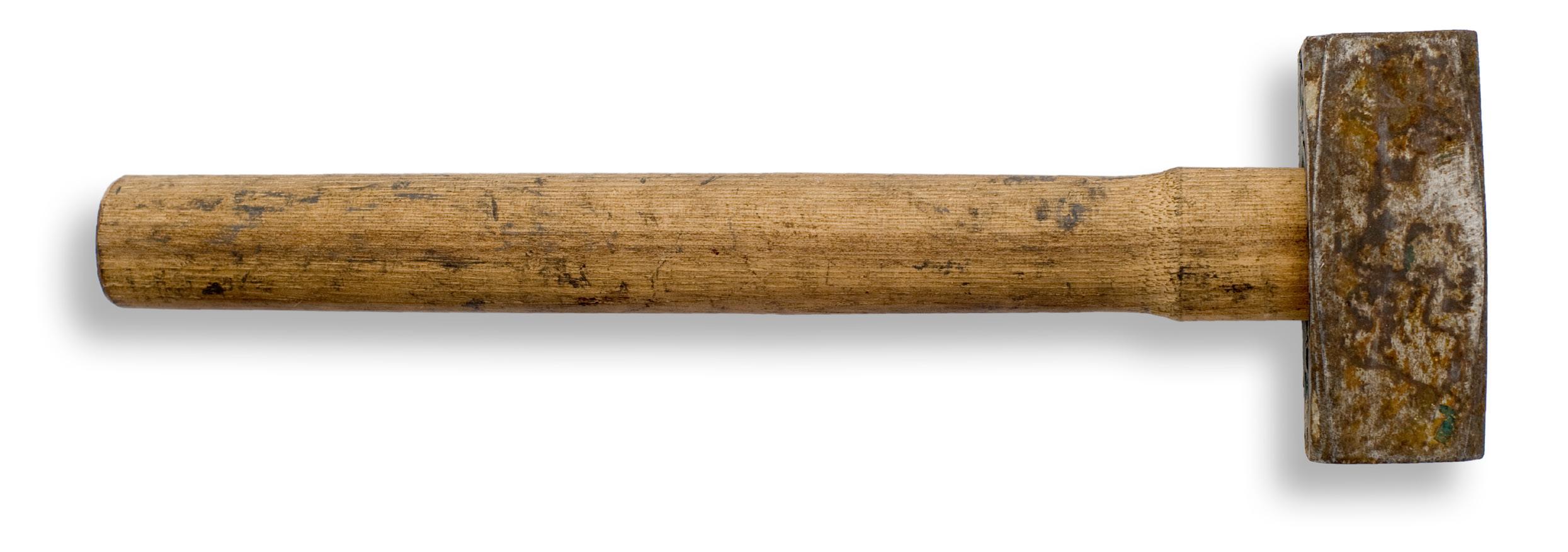
of the role most obviously due to the need for considerable stamina, fitness and physicality. An interesting comment was from a Norwegian officer who, highlighting that physical demands for the modern battlefield have grown, most obviously with the need to carry much heavier kit, what recruits have done previously – “how your body has grown up” was how it was termed – plays an important role in selection and training. And this requirement is only one part of what is called the ‘Light Infantry Mindset’ and, in slightly different variations, is also common throughout the shared regional experiences. Within this ethos, esprit de corps and philosophy as well as adaptation all emerge as key considerations for successful applicants. There are also references to the need to re-learn old skills such as how to dig and develop high levels of fieldcraft (including better understanding eating and hydration) along with individual health and medical care. And to this can be added the critically important ability to fire weapons accurately and effectively. It is not surprising that all of the writers along with those interviewed viewed these troops as elite infantry (without ever necessarily using this exact description) and with the distinction that they always fight dismounted. Also of note was an observation that 2nd Battalion, The Parachute Regiment are considered exemplary at relearning and ‘remembering’ when it comes to a light forces role.
As the continuing conflict in Ukraine has demonstrated, a fundamental problem facing armies everywhere is no longer just how to develop and sustain mass on the modern battlefield. Perhaps even more critical with the transparency that exists is the question of how this can be dispersed and concentrated and where this should/can take place.
Also of note was an observation
that 2nd Battalion, The Parachute Regiment are considered exemplary at relearning and ‘remembering’ when it comes to a light forces role.
The Nordic and Baltic experience offers a great deal of food for thought. Light forces across the region offer a key role providing planners and commanders with numerous options and considerable flexibility. As one of the regional light force commanding officers explained, they are able to “fight with what they have, anything else is a bonus” and their excellent levels of physical and intellectual prowess mean these small hammers have many uses. They can operate close and in the rear and extract a considerable cost from any attacking force, whether it be light or heavy. Not viewed as a delaying force, it is nonetheless believed that even this could be done in favourable time and space attacking logistics, supply depots and enemy infiltration up to but not including armoured spearheads. Across a series of invaluable conversations, one of the most interesting moments of self-reflection was to ask if they should be viewed as sensors or effectors? This may prove a central question to any further studies.


Major General
(Retd) Dr Andrew Sharpe Director, CHACR
In the ancient world the leading military thinkers worked out that an organised disciplined force (soldiers) would always be likely to overcome an equally-sized disorganised force of fighters, no matter how personally skilled and motivated those individuals may be (warriors). This truism was pioneered in European warfare by the Greeks, and then perfected by the Romans. This culture drove, in armies across the world, a tendency towards forces that were based upon a solid core of heavy, disciplined, drilled and ordered infantry. Certainly cavalry, war machines and artillery, and all forms of auxiliary and missile support arms featured, but ‘heavy infantry’ remained the central building block of the most successful militaries. The military historian can pick out plenty of ‘exceptions’, not least those great cavalry armies of the Scythians, Parthians, Huns and Mongols. But interestingly, in the context of the debate of this publication, all of those armies were themselves concentrated, disciplined manoeuvre forces, supported by dispersed scouting and reconnaissance capabilities, yes, but successful because of their adherence to a principle of disciplined and directed mass.
In European tactical and doctrinal approaches, this state of mind endured for the best part of two millennia. In Britain, it was not until the introduction of rifled weapons (aiding individual accuracy) and the lessons of the American wars (where fieldcraft mattered as much as, or more than, disciplined mass) that the doctrinal swing to a lighter approach to the infantry took serious root and red coats started to be exchanged for green. As is so often the way on the battlefield, technical change then acted as a catalyst for further tactical evolution. The introduction of armour inevitably led from the lumbering tank of the Cambrai battlefields to the more agile tank (cavalry like?) of the Blitzkrieg, and then to a mounting of the infantry in (nearly) equally protected vehicles. The armoured infantry of the post-Second World War period, once again, became the core building block of force design.

This bumper edition of Ares & Athena has explored sufficient historical examples to illustrate that, regardless of the ‘Queen of the Battlefield’ label that has sat with disciplined heavy infantry for so long, light forces have had a role. It has also examined those utilitarian areas, past and present (and future) in which the use of light forces will be a constant, and often paramount requirement. And, because current British policy is leaning towards an obligation to Northern Europe in British Defence commitments, we have also explored the emphasis that our North European allies place upon the use and usefulness of light forces.

Fighting dismounted, relying upon fitness, toughness and personal soldier-skills is the hallmark of light infantry service. Yet an ‘us and them’, a ‘second division’, and a ‘questionable utility’ debate still hangs in the air in both British and NATO considerations when force packages are being demanded and generated for war contingencies in Europe.
Regardless of the centuries of doctrinal adherence to the value of disciplined mass (heavy) formations, circumstances have always arisen, in land war, where those formations have little relevance. Sieges, urban fights, mountains, swamps, forests et al have always demanded either that armies fight in them dispersed and relying upon the warrior and specific-to-task skills, and initiative, of small groups of fighters, or have simply been avoided through higher-tactical or operational manoeuvre in order to retain the superiority of the more ordered, trained and disciplined force.
We have also taken into account all of those lessons that are emerging from the Ukrainian war. Dispersion, the ‘transparent battlefield’, the ubiquity of drones of all sorts, increasingly effective light anti-armour weapons, a trend away from concentrated armour to ‘pennypacketing’ of tanks, trench warfare, urban fights, and motorbikes and all-terrain vehicles replacing infantry armoured fighting vehicles are all evident lesson-rich areas to apply in doctrine development and force design. It is also interesting that a common theme of the Northern Lights part of this publication is that there is a degree of elitism in how the Nordic and Baltic states see light troops. And elitism is an enduring theme in the history of light troops (be they Sharpe’s Rifles or parachutists). Fighting dismounted, relying upon fitness, toughness and personal soldier-skills is the hallmark of light infantry service. And, furthermore, as we remarked in the introduction, it is in the light role that the British infantry has been most used since 1945. Yet an ‘us and them’, a ‘second division’, and a ‘questionable utility’ debate still hangs in the air in both British and NATO considerations when force packages are being demanded and generated for war contingencies in Europe.
Since the 1950s, the armoured formation has remained the acme of force design aspiration. We are not suggesting that there is no longer a place in the order of battle for armour, nor that the heavy forces role in the British Army’s Recce-Strike concept is not sound. But I think that we are suggesting that the balance, in emphasis, utility and effectiveness perhaps needs to readjust itself. Modern warfare on land is just as likely to depend upon the individual soldier-skills of fieldcraft and disproportionate effect through expert skill-at-arms, along with the delegation of initiative to the lowest levels, as it is upon the firepower, protection and mobility of well-organised formations of heavy armour and infantry. Technology and circumstance suggest, we argue, that the scales of relevance in force design may be tipping, and thus not just that ‘might is light’, but also perhaps, that light is right.



To conduct and sponsor research and analysis into the enduring nature and changing character of conflict on land and to be an active hub for scholarship and debate within the Army in order to support the development and sustainment of the Army’s conceptual component of fighting power.